










U TAH C ATTLEMAN
V OLUME 10 F EBRUARY 2023 Thank You! A special edition of the Utah Cattlemen’s Association o cial publication.
S EEDSTOCK EDITIO N

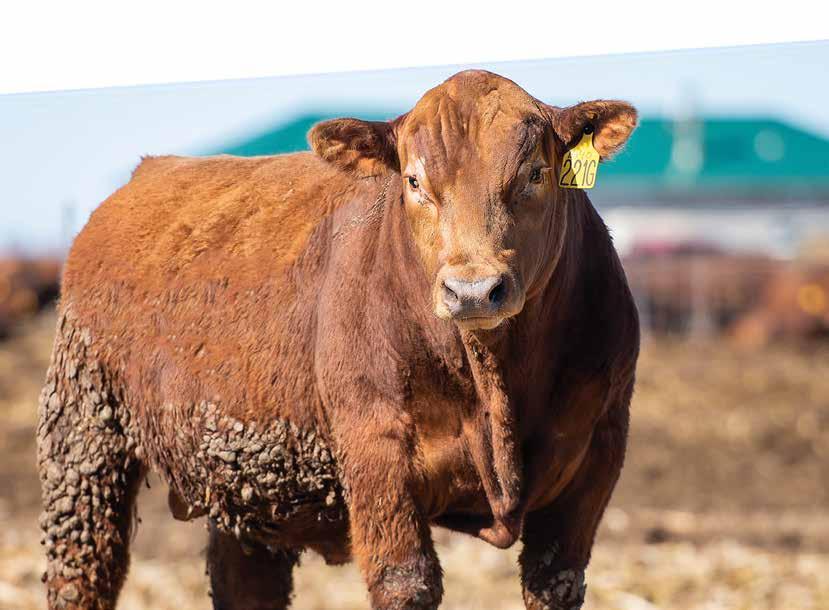

BULL SALE Redd Ranches Annual APRIL 8 TH 2023 ◆ PARADOX, COLORADO PEDIGREE IS ONE THING, PERFORMANCE IS EVERYTHING! 108 YEARS OF HIGH ALTITUDE GENETICS DNA PROFILED ◆ PAP SCORED ◆ FREE DELIVERY SITE UNSEEN BUYING GUARANTEE ◆ LIVE INTERNET BIDDING REDD RANCHES IS IN THE BUSINESS OF PRODUCING TOP ELITE BULLS THAT MAKE YOU MORE PROFITABLE! RED ANGUS ◆ BLACK ANGUS ◆ SIMANGUS OVER 70 YEARS OF ARTIFICIAL INSEMINATION, ONE OF THE LARGEST, LONGEST RUNNING, HIGH ALTITUDE HERDS IN THE NATION! 1-800-442-8557 | REDDRANCHES@GMAIL.COM | REDDRANCHES.COM
At Shandar Angus Ranch, we are always trying to produce the most functional, balanced cattle we can. Nearly every one of our customers sell their calves at weaning, so we emphasize performance from birth to weaning. We rmly believe you cannot have an animal grow properly if they aren’t phenotypically correct with a skeleton that can handle accelerated growth, so we also emphasize structural intergrity, base width, strong top lines, and balance.





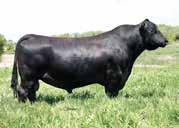

This approach has built a cowherd that produces bulls that can travel, convert, and sustain themselves. Many of our customers run in harsh Utah and Nevada deserts. Our cattle have proven to be able to work in these environments generation after generation.









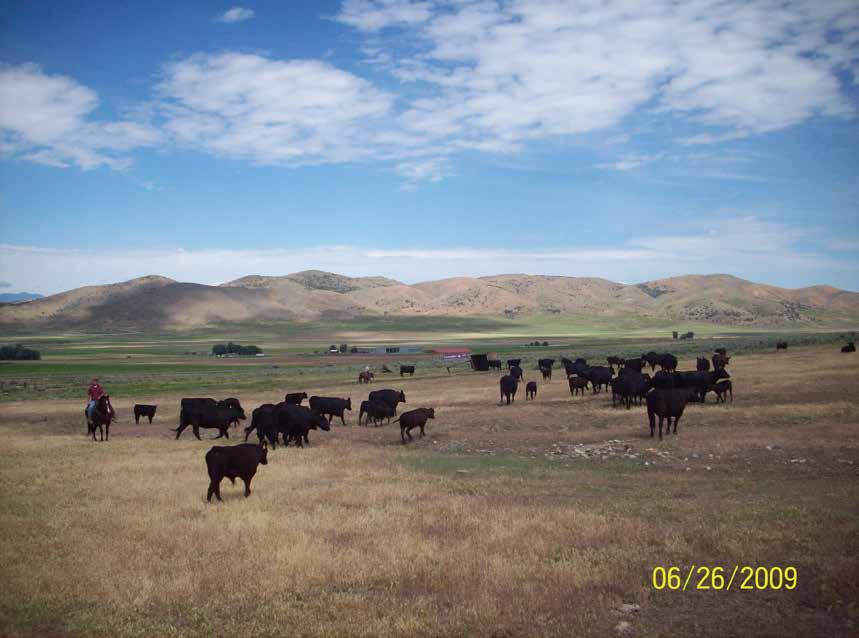




3 Utah Cattleman SeedStoCk edition 3532 W 9600 S • Payson, UT 84651 Morgan 801.368.8314 • Landon 801.592.7279 landoman7v@hotmail.com ANGUS • SIMANGUS
Power • Performance • Phenotype
Call us today to learn more. Morgan Andrews 801.368.8314 Landon Andrews 801.592.7279 3532 W 9600 S • Payson, UT 84651 Morgan 801.368.8314 • Landon 801.592.7279 landoman7v@hotmail.com S R ANGUS • SIMANGUS Mostly available by private treaty at the ranch! Jan 28 Red Blu Bull Sale - Red Blu , CA Feb 11 Gem State Classic - Twin Falls, ID Sept ‘23 Royal Blood Online Sale - Online Nov 11 Rocky Mtn Angus - Ogden, UT Nov 29 UT Cattlemen’s Classic - Salt Lake, UT Call Today - 801-368-8314 or 801-592-7279 Selling 25 Bulls This Year! KJM Husker 814 On the Mark Car Don Annuity Sitz Resilient Over 65 years of raising Angus ca le!
1ST VICE PRESIDENT Jeff Young, Henefer
2ND VICE PRESIDENTS Nathan Thomson, Ephraim
Bryce Tolbert, Abraham Jordan Willis, Cokeville, Wyo.
IMMEDIATE PAST PRESIDENT Tracy Hatch, Randolph
The Utah Cattlemen’s Association works to represent cattlemen in the legislative arena, provide educational information and assist with networking opportunities. If you own cattle and are not a current member, checkout our member benefits by visiting www.utahcattlemen.org



The Utah Cattleman newsletter is published monthly with this one-time annual publication published in February. This publication is sent to all UCA members and its affliates as part of their annual dues as well as prospective members of the Utah Cattlemen’s Association.
For advertising inquiries in future issues of this publication or in upcoming newsletters, contact Brent Tanner at (801) 355-5748 or brent@utahcattlemen.org
POSTMASTER: Send address changes to the Utah Cattlemen’s Association 150 S 600 E, #10-B Salt Lake City, Utah 84102
(ISSN #3933) mailed from USPS facility in Lubbock, Texas

of Contents
Table
Utah Cattlemen’s Asso ciation Serving Ranchers Since 1890 UCA PRESIDENT Daniel Crozier, Roosevelt
UTAH BEEF COUNCIL Director
Marketing Jacob Schmidt, RDN
EXECUTIVE VICE PRESIDENT Brent Tanner
of
& Education It’s a good time to be a rancher......................................................................8 Heart healthy beef...................................................................................................10 Power in positivity ..................................................................................................40 Cox’s state-of-the-swtate address............................................................62 Exports at all time high.......................................................................................68 Home on the ranch .................................................................................................12 Profitability in 2023 ..................................................................................................18 New WOTUS rule revives old concerns................................................24 Amplifying heterosis..............................................................................................28 Myrin Family stewardship .................................................................................32 The taste for Angus ............................................................................................... 34 Hereford genetics stacking up ......................................................................54 Selection signs point to Gelbvieh .............................................................. 58 Waste not, want not: hanging on to your hay.................................. 60 Time to shop for a new bull .............................................................................62 Conservatives gain House Speakership ............................................... 74 Selecting sires with Simmental tools ....................................................... 78 Sale Calendar for 2023 ........................................................................................84 Index of Advertisers .............................................................................................. 86
Working For You Interest
Cover photo taken by Sunrise Livestock Services. www.sunriselivestockservices.com



















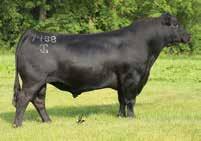
www.UTAHCATTLEMEN.org 5 Utah Cattleman SeedStoCk edition Private Treaty Bull and Females Available Now! Fully guaranteed • Sound • Functional We stand behind our product! 50 BULLS AVAILABLE CALL TODAY! Calving Ease Medium Framed Cow Longevity PAP Tested NEARLY ALL OUR BULLS SELL WITH MULTIPLE AI GENERATIONS OF CALVING EASE! OUR COWHERD IS A MEDIUM FRAMED, STOUT BASED, BROODY COW THAT WORKS! WE ARE PROUD OF OUR COWS. GREAT UDDERED, EASY DOING, AND FERTILE. WE’VE PAP TESTED FOR MANY GENERATIONS! 100% Satisfaction WE KNOW THESE CATTLE WORK AND ARE WILLING TO STAND BEHIND THAT CLAIM. WHY CHOOSE Fullmer Crescent Moon? Chris Fullmer PO Box 570130 | Sigurd, UT 84657 Chris (435) 231-2721 Chace (435) 231-2719 Located 10 miles south of Producers Livestock Auction! Tehama Tahoe B767 SAV Rainfall 6846 GAR Hometown KG Justified 3023 Sons for sell by these bulls!
Sale bulls by these breed-leading herd sires!
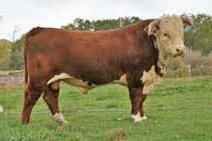
CL 1 Domino 9108G


















(ced) +7.3 (bw) +3.1 (ww) +62 (yw) +92 (m) +28 (marb) +.20 (rea) +.40 ($chb) +$145
Premier herd sire at Johansen Herefords and the sire of 19 top yearling sale bulls. Used with great success in some of the top breeding programs in the country. His sons were well received in 2022 here and they averaged $22,300 at Coopers including the top selling bull, CL 1 Domino 1115J, at $90,000 for half possession. 9108G is a powerful bull that produces functional, well-muscled cattle with outstanding balance. His females are the future of our program! Owned with L Bar W Cattle Co., MT, Coopers, MT, and Australian rights are owned by Ironbark Herefords.



HH Advance 6212D

(ced) +11.6 (bw) +0.5 (ww) +66 (yw) +99 (m) +37 (marb) +.32 (rea) +.29 ($chb) +$123
Highly proven curve bender deluxe that combines extreme calving ease with strong growth, high maternal and carcass strength. Offering 7 heavy muscled, low birthweight sons. His pedigree contains maternal giants 7003T and 5139R! Owned with Holden Herefords, MT, and Three Hills Ranch, IA.



Additional Herd Sires
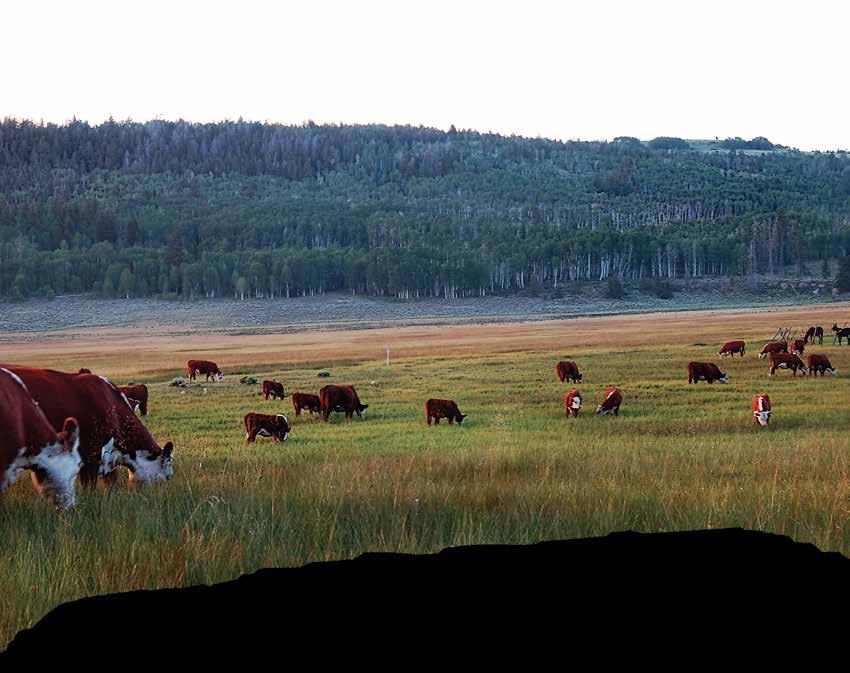
CL 1 Domino 472B JH Advance 0212H (ced) +5.7 (bw) +0.4 (ww) +55 (yw) +86 (m) +26 (marb) +.29 (rea) +.54 ($chb) +$149 (ced) +1.4 (bw) +3.1 (ww) +60 (yw) +91 (m) +32 (marb) +.22 (rea) +.15 ($chb) +$119 (ced) -1.2 (bw) +5.2 (ww) +66 (yw) +109 (m) +24 (marb) +.19 (rea) +.38 ($chb) +$134

























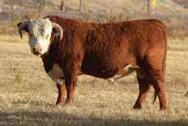



www.UTAHCATTLEMEN.org 7 Utah Cattleman SeedStoCk edition PO Box 199 • Castle Dale, UT Jonathan • (435) 650-8466 Craig • (435) 820-8490 johansenherefords@gmail.com www.johansenherefords.com Johansen Herefords @JoeHerefords @JohansenHerefords Johansen Herefords @JohansenHerefords Call today for more information. Vis ors always welcome! Find us on our website atwww.JohansenHerefords.com and on Facebook, Twitter, Instagram, YouTube, and TikTok! 44 ofYearformance eeding! (1979-2023) 40 Yearlings and Coming 2s available by private treaty! Feature Line 1Sale Bulls Our program and selection criteria: • 135 Line 1 mother cows • Raised in arid, harsh conditions • Line 1 adds a full dose of HETEROSIS • Improved efficiency • Docility • Udder quality • Pigment • Longevity • Powerful and stout • GUARANTEED! JH L1 Domino 209K JH L1 Domino 217K JH Advance 223K JH L1 Domino 236K JH L1 Domino 241K JH L1 Domino 244K JH Advance 255K JH L1 Domino 266K JH Advance 1254J 2 Year Old
GOOD THINGS AHEAD
2023 points toward positive for beef business
By Utah Cattlemen’s Association Executive Vice President Brent Tanner

At the recent Utah Cattlemen’s Association annual convention Brett Stuart, founding member of Global AgriTrends, a company created to provide credible global analysis and reporting of international market intelligence and trade data, reported that he has never shared as positive a market, weather and trade outlook to cattle people as he projected in his presentation to the attendees at the UCA marketing breakfast. “There is room for optimism for cattle ranchers – America’s consummate optimists” Stuart reported. He went on to say “I suggest two variables to determine whether a year is good or bad in Utah: abundant precipitation and high markets. Sometimes you get neither, sometimes you get one or the other, but never both. 2023 could be the year for both.”
Optimism was in the air at the rest of the cattlemen’s meetings that day. After years of struggling through drought and low cattle markets, it was exciting to see realistic hopefulness projected to our industry. Even better, since that presentation in early December we have realized proof of Mr. Stuart’s projections. The state has been blessed with abundant winter storms to fill our mountains with water and the cattle markets continue to climb. Global beef demand remains strong despite challenging economic times for consumers. Professional weather projectors claim we haven’t yet seen the positive effect of the transition from several years of La Niña to the more positive weather pattern in western states of an El Niño weather pattern, which they say is coming later this spring. It does certainly sound like there are good days ahead for the cattle industry in Utah.
But let’s not let that positive outlook lull us into thinking all is going to be good and rest back on our heels. When times are good, that is when we need to be active in making positive changes in our own cattle operations as well as in the cattle industry, including our own state cattlemen’s association. The time to fix or build a fence, isn’t when the cows are pushing it over. It is best to be progressive and act in advance of the pressures that will come again. We need to continually fortify our industry. For those that spend time reading religious scripture, there is a prophetic warning for those who declare: “All is well in Zion: yea Zion prospereth, all is well.” The warning is when we think all is well, soon an adversary will sneak in and destroy us. If we become complacent thinking that things are going well in the industry and don’t continue to work on industry issues, soon the opposition will build and we will spend our hard
earned dollars and industry efforts to defend and protect cattle production.

Historically, we have seen trends when the cattle industry is under attack our producers willingly join together to fight, defend and protect our businesses and way of life. Unfortunately, we also see the trend when things seem to be going well, memberships in the industry organizations often drop off. When the wolf is banging on the door, we are all willing to fight, but when the pressure is off, we are often lulled into thinking we are safe. I genuinely thank every cattle producer in this state who pays their annual membership dues to the association, in good years and in tough years. We invite all cattlemen and cattlewomen to join the association, both state and national, as we continually work to fortify and strengthen the livestock industry. If you are not currently a UCA or NCBA member, please go to www.utahcattlemen.org and join through the membership tab. Both the state and national cattlemen’s associations are continually working on cattle industry issues. With a dues structure built around fair-share based on your cattle numbers, we have an annual membership category for everyone, starting as low as the cost of a tank of diesel for your truck. Unlike any other business you deal with, we haven’t raised your cost of membership dues in over 20 years. If our members keep supporting, we can keep our memberships affordable. We need the strength and support of all cattle producers in the state. We are happy to visit with you any time about industry issues.
Finally, let me thank those industry businesses that are advertising in this seedstock issue. You have been loyal supporters of our cattlemen’s association and the industry as a whole. We encourage our members to shop with the ranchers and businesses in this publication. Some of the finest genetics and agribusinesses are right here in our own state or near surrounding. Take the opportunity of an improved market outlook and support these breeders and businesses. Strengthen your cattle business while times are good with their goods, services and genetics provided in these advertisements.
Brett Stuart concluded his presentation in December by saying, “Few things in markets and nature are certain, except for change. But recent trends and indicators suggest that ranchers now have a fighting chance to see margins outpace inflationary costs into 2023 based on tight supplies, solid demand, and improved rainfall.” It looks like 2023 is going to be fun.
VOLUME 10 • FEBRUARY 2023 Utah Cattleman SeedStoCk edition 8
Intermountain
Friday,









Intermountain

Watch and bid online for









One Established Program...
TWO OPPORTUNITIES
Valley
Sale
Genetic Alliance Heber
Bull
mst
March 3, 2023 6 pm
- wasatch co. events complex - Heber city, UT
Genetic Alliance bulls at the border Sale
mst -
inn
NV
E-mail:
www.m3cattlemarketing.com Call, Text or Email to be added to the mailing list.
CONTACTS:
INTERMOUNTAIN GENETIC ALLIANCE MEMBERS: Deep Creek Mountain Angus Blackett Angus Betts Angus Miles High Angus Rasie Em Right Daniels Livestock Bear Canyon Angus Kings Peak Angus Rylee Mecham Joseph Matthews Kent Bastian igabullsale.com 70 Angus, Red Angus, Hereford and SimAngus™ Bulls Sell at Both Events. also featuring sons of these breed-leaders, plus many more:
on
Myton, UT.
Brent Gillman to stop by
the bulls
before the
435-724-1230 angus Sterling Pacific 904, Hoover
Doubt, E&B
Accomplishment 720F,
SR
Butchs Trustee, Sitz Stellar 726D, S A V Resource 1441, S A V Checkmate 8158, V A R Magnum 7048 red angus 9 Mile Franchise 6305, Loosli Right On 4023 simangus™ KBHR All American G104, Yardley Lad H327 Hereford LCX Perfecto 11B ET, BOYD 31Z LEAD ON 7206 ET LOT 57BAKER AAA 20475007 CED BW WW YW MILK CW MARB RE $B $C +4 +3.7 +73 +131 +29 +63 +.77 +1.00 +183 +312 Butchs Trustee x BUBS Southern Charm AA31 LOT 29BAKER AAA 20418325 CED BW WW YW MILK CW MARB RE $B $C +4 +4.0 +71 +135 +34 +66 +.83 +.66 +175 +297 Ellingson Rangeland x V A R Discovery 2240 LOT 64BAKER AAA 20539067 CED BW WW YW MILK CW MARB RE $B $C +15 -.7 +70 +141 +32 +55 +.71 +.57 +146 +255 Spring Cove Cavalry 22G x Three Trees Xceptional B0048 LOT 38BAKER ASA 4109002 CE BW WW YW MILK YG MARB RE API TI 12 -.9 80 127 22 -.04 .35 .65 128 80 Yardley Lady H327 x 3F Epic 4631 LOT 9HEBER AAA 20475013 CED BW WW YW MILK CW MARB RE $B $C +5 +1.7 +68 +126 +29 +65 +.73 +.80 +169 +259 WXW Timberline W287 x PVA Call of Duty 4159 LOT 11HEBER AAA 2047499 CED BW WW YW MILK CW MARB RE $B $C +13 +.1 +79 +128 +27 +70 +.70 +.91 +175 +308 Poss Rawhide x V A R Generation 2100 LOT 31HEBER AAA 20418320 CED BW WW YW MILK CW MARB RE $B $C +6 +1.0 +80 +133 +36 +66 +.45 +.75 +153 +273 V A R Magnum 7048 x WR Journey-1X74 LOT 59HEBER RAAA 4669263 CED BW WW YW MILK YG MARB RE HB GM 13 -3.5 62 105 32 .04 .40 .42 51 44 9 Mile Franchise 6305 x LSF SRR Tyson 3025A
sunday, March 19, 2023 1 pm
Border
and Casino - Baker,
Matt Macfarlane | 916-803-3113 (cell)
m3cattlemarketing@gmail.com
SALE
Brady Blackett 385-329-3149 Auctioneer - Eric Duarte 541-891-7863 Bulls are on test in Myton, UT. Call Brent Gillman to stop by and view the bulls anytime before the sale. 435-724-1230
Bulls are
test in
Call
and view
anytime
sale.
No
Plus One, Sitz
Kesslers Commodore 6516, Baldridge
Goalkeeper, Square B True North 8052,
FREE! Go to www.dvauction.com to register...it’s as easy as 1, 2, 3... 1. Complete and submit the form on “Create New DVAuction Account” 2. Apply for bidding by clicking “apply for bidding” in the upper left of your screen, at least 24 HOURS PRIOR to the auction 3. Tune into the sale and make your purchases! You will receive an e-mail message to activate your account. Once the account has been activiated, be sure to log back in prior to the sale to confirm your profile has been set up correctly.
questions, contact Western Video Market at wvm@wvmcattle.com or DVAuction at support@dvauction.com. DVAuction Help Desk (402) 316-5460 (Customer Service) www.UTAHCATTLEMEN.org 9 Utah Cattleman SeedStoCk edition
For
GOOD NEWS
Beef’s benefits for total health
By Utah Beef Council Director of Marketing Jacob Schmidt, RDN

Andy Rooney said, “The two biggest sellers in any bookstore are the cookbooks and the diet books. The cookbooks tell you how to prepare the food and the diet books tell you how not to eat any of it.” If you have a resolution for the new year to lose weight/get fit, then you are in good company. According to a recent consumer survey, the top three New Year’s resolutions for 2023 were to exercise more, eat healthier, and to lose weight.
Let’s be honest, dieting is the one thing that everyone loves to hate. We all want to look and feel our best, but in practice it can be difficult to eat healthy and limit our consumption of foods that should be eaten now and then. However, by following a diet plan, we can improve our health and reach weight loss goals. The great news is that lean beef can play a role in developing a healthy eating plan.
“I’m not interested in any diet plan unless it lets me use rollover calories.” – Lauren Ashley Bishop
There is no shortage of diets or diet plans that have been touted over the years. The reality is that many diet plans can help us become healthier, and even lose weight. The Forbes Health editorial team consulted a panel of nutrition experts to rate 19 popular diets. Both the Mediterranean Diet (rated #1) and the DASH Diet (Dietary Approaches to Stop Hypertension) were in the top three. Lean beef can easily be incorporated into both these diet plans.
The Mediterranean diet is one of the most popular eating patterns. It is often described as being rich in fruits, vegetables, whole grains, nuts/seeds, and olive oil, and lower in sweets, sodium, and red meat. Interestingly, many Mediterranean countries eat about the same amount of red meat, or more, as the United States. However, those countries pair red meat with more fresh vegetables and fruits, whole grains, and healthy oils.
The Mediterranean-style eating pattern encompasses a wide variety of foods and flavors from the countries that surround the Mediterranean Sea. While the cuisines of each country differ slightly, they all have a few things in common. To build a healthy Mediterranean plate start by filling half your plate with fresh vegetables and fruits. Fill in the other half of your plate with lean protein and whole grains. Finish off by adding dairy and healthy fats.
Recent research from Wayne Campbell,

PhD at Purdue University asked if the overall health benefits and long-term heart health benefits known to be part of Mediterranean-style eating pattern could be achieved while including lean red meat. This published study shows that, yes, a Mediterranean-style eating pattern that includes fresh, lean red meat can support heart health. The study demonstrates that following a Mediterranean-style eating pattern that includes up to 18 ounces of cooked, fresh lean beef and pork per week – along with poultry and fish – is just as effective at improving certain heart disease risk factors (such as blood pressure and total and LDL cholesterol) as a Mediterranean-style eating pattern that limits red meat.
Additionally, another study demonstrated that up to 5.5 ounces of lean beef per day in a Mediterranean-style dietary pattern improved blood cholesterol levels.
The DASH eating plan requires no special foods and instead provides daily and weekly nutritional goals. This plan recommends eating vegetables, fruits, and whole grains. It includes fat-free or low-fat dairy products, fish, poultry, beans, nuts, and vegetable oils. It limits foods that
...CONTINUED ON PAGE 12
VOLUME 10 • FEBRUARY 2023 Utah Cattleman SeedStoCk edition 10







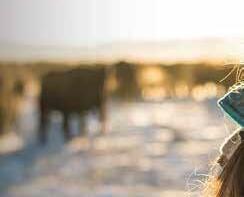














www.UTAHCATTLEMEN.org 11 Utah Cattleman SeedStoCk edition SeehowyourdollarimprovesthesafetyandwholesomenessofbeefwithprogramslikeBeefQuality Assurance–strengtheningtheeconomicsustainabilityofyouroperation–atYourDollarDoes.com. *Figures taken from a 2019 study conducted by Colorado State University on the Beef Checkoff-funded BQA program. Funded by The Beef Checkoff. What builds cattle-handling practices that help producers earn a premium of $16.80 per head sold?
...CONTINUED FROM PAGE 10
are high in satruated fat, such as fatty meats, full-fat dairy and tropical oils like coconut, palm kernel and palm oils. It also limits sugar-sweentened beverages and sweets.
A study published in the American Journal of Clinical Nutrition demonstrated that a diet including lean beef every day is as effective in lowering total and LDL “bad” cholesterol as the gold standard heart-healthy diet (DASH).

The Beef in an Optimal Lean Diet (BOLD) clinical study (Effects on Lipids, Lipoproteins and Apolipoproteins), conducted by Pennsylvania State University researchers, evaluated adults with moderately elevated cholesterol levels, measuring the impact of diets including varying amounts of lean beef on total and LDL cholesterol levels. Study participants experienced a 10 percent decrease in LDL cholesterol compared to baseline in two different beef diets. The BOLD diet contained 4.0 ounces. of lean beef and the BOLD-PLUS diet contained 5.4 oz. (weights before cooking) of lean beef daily with both diets providing less than 7 percent of calories from saturated fat. After five weeks, there were significant reductions in total and LDL cholesterol.
Because beef is a naturally nutrient-rich source high-quality protein, iron, zinc, and many B-vitamins, its inclusion in the diet can help individuals meet their
nutrient needs. Additionally, it provides additional variety and flexibility to their diet, which can improve long-term adherence to diet plans. Not many people can consume a restricted diet consisting of only a few foods eaten repeatedly. Recommendations are to choose lean beef and use cooking methods like broiling, roasting or poaching. Most importantly, beef should be paired with fiber rich vegetables, fruits, and whole grains.
The funding of this research has been provided in part by The Beef Checkoff. The results of which helps provide information to consumers on how to include beef in a healthy diet. This is also disseminated to health professionals, which can then be shared with their patients and clients. Beef has a positive nutrition story to tell, and we will continue to share it. 2023 will feature a heart health campaign that will include social media posts, recipes, videos, and health messages to highlight beef’s role in a heart-healthy diet. You can find all these resources at beefitswhatsfordinner.com.
The wonderful news is that dieting doesn’t have to be a bland and tasteless experience. In fact, with the right cut of beef and a side of fruits and vegetables, it can be downright delightful! With a little bit of planning, you can say hello to a healthier and happier you. Just remember, if all else fails, there’s always next January 1 to start again. Most importantly, don’t forget to treat yourself to a juicy Ribeye Steak on occasion.
Citrus-Rubbed Top Sirloin & Fruit Kabobs

INGREDIENTS:
1 beef Top Sirloin Steak Center Cut, Boneless (about 1 pound)
1 medium orange
2 T. chopped fresh cilantro
1 tablespoon smoked paprika
1/4 tsp. ground red pepper (optional)
4 cups cubed mango, watermelon, peaches and/or plums
45 minutes | 4 servings |\ 240 Calories
COOKING:
Grate peel and squeeze 2 tablespoons juice from orange; reserve juice. Combine orange peel, cilantro, paprika and ground red pepper, if desired, in small bowl.
Cut beef Steak into 1-1/4-inch pieces. Place beef and cilantro mixture in food-safe plastic bag; turn to coat. Marinate beef in refrigerator 15 minutes to 2 hours.
Soak eight 9-inch bamboo skewers in water 10 minutes; drain. Thread beef evenly onto four skewers leaving small space between pieces. Thread fruit onto remaining four separate skewers. Place kabobs on grid over medium, ash-covered coals. Grill beef kabobs, covered, 5 to 7 minutes (over medium heat on preheated gas grill 7 to 9 minutes) for medium rare (145°F) to medium (160°F) doneness, turning occasionally. Grill fruit kabobs 5 to 7 minutes or until softened and beginning to brown, turning once. Drizzle reserved orange juice over fruit kabobs. Garnish with cilantro, if desired.
VOLUME 10 • FEBRUARY 2023 Utah Cattleman SeedStoCk edition 12
We are beyond excited to be having our 51st Annual Sale and want to extend an invitation to you! Please join us in Caldwell, ID and see for yourself what the /S “bull business brand” is all about. We are a family built on consistent and reliable values that have lasted for over three generations on this operation. When you do business with us, you join our family.

Since 1946, we’ve been striving to build a cowherd that produces with consistency and reliability. We know that in these demanding times it is going to be those key points that continue to drive demand for our customers’ cattle. The pressures on the national cowherd have been overwhelming and with economic pressure, we need these cattle to perform, reproduce, and grade consistently. That’s what we are all about.
















You can trust that when you do business with us, you will receive that consistency and reliability. Not just from our cattle, but from us as well. You can rest assure that we will deliver our promise and guarantee to you, because when you buy a Shaw animal, you buy a relationship built on consistent and reliable values, just like what’s built our family.















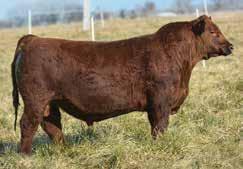




































































































































The Bull Business Brand. SHAW CATTLE CO. 22993 Howe Rd, Caldwell, ID 83607 greg@shawcattle.com SHAWCATTLE.com Sam 208.880.9044 Greg 208.459.3029 Tucker 208.889.0455 Ron 208.431.3311
SHAW CATTLE CO. SPRING BULL SALE FEBRUARY 15, 2023 CALDWELL, ID || NOON MST SELLING 450 BULLS 250 ANGUS || 170 HEREFORDS 30 RED ANGUS Plus 50 F1 Open Heifers 11443 AHA P44311362 08/29/2021 Sire: NJW Long Haul 36E ET CED 11.2 | BW -0.1 | WW 70 | YW 106 M 44 | REA .56 | Mrb .26 | $CHB 146 11839 AAA 20437947 09/25/2021 Sire: +*Square B True North 8052 CED +10 | BW +0.8 | WW +69 | YW +131 M +35 | RE +.75 | Mrb +.55 | $W +74 | $B +264 11525 RAAA 4601811 8/29/2021 Sire: BB Propulsion 9096 CED 14 | BW -4.1 | WW 68 | YW 107 M 30 | REA .14 | Mrb .54 | ProS 102 | HB 60 Family Values. Annual51st www.UTAHCATTLEMEN.org 13 Utah Cattleman SeedStoCk edition
A REASON TO COME HOME
UNITAH BASIN’S VINCENT FAMILY WORKS TOGETHER TO ENSURE LONGEVITY OF FAMILY BUSINESSES
by Stevie Ipsen for the Utah Cattlemen’s Association
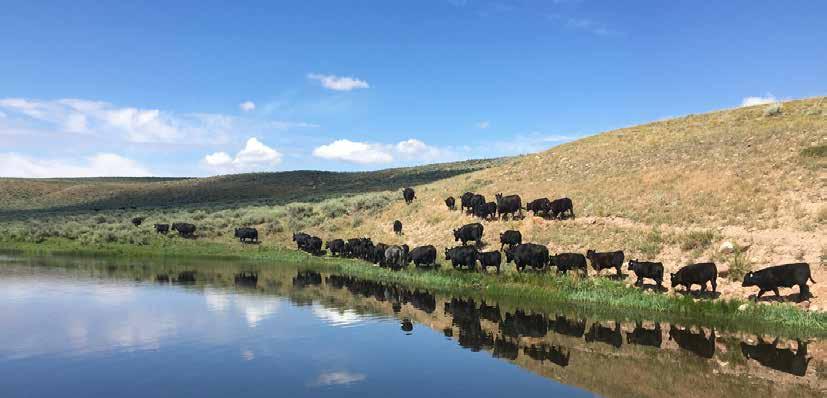
The decision to stay at home to keep the family ranch going from one generation to the next isn’t as appealing for some folks as it once was. Generations ago, the decision to keep the ranch moving on down the line wasn’t really a question. But today, some parents and children may question what the future of their family farm or ranche looks like. For parents, generally the consensus is that they just want their children to do something they enjoy. Those same parents are frequently concerned that input costs, taxes, regulations and legislation might all lead to the belief that their children are better off doing something else.
For Uintah Basin rancher Randy Vincent, those are questions he and his wife Tamara have asked themselves. “It gets harder and harder to make a living in the cattle business, but having the kids here makes it worth it,” Randy says. “Having our own kids home helping on the ranch is the greatest thing on earth. Having the grandkids here is even better.”
For the Vincents and their children Randan and Alissa Sue Wilkins, both of whom live and work on their diversified farming and ranching operation RV Bar Angus in Jensen with their own spouses and children, the question was never if it was something their kids wanted to do, it was more a question if they would be able to.
“Providing for two to three families with one cattle outfit in today’s world is tough,” Randy said. “If it weren’t for us having other businesses and outside jobs, it probably wouldn’t work.”
For the Vincent family, having everyone at home and playing a role on the ranch, meant some of them would have to have jobs off the ranch.
Alissa Sue, who always had plans to stay close to her agriculture roots, said she sought a cosmetology license following high school because it was something she enjoyed but she knew she would have flexibility to work and to put her skills to use at home while having flexibility to continue her passion with horses and help her family
on the ranch. Similarly, her husband Jake Wilkins currently sells agriculture insurance, and also has the flexibility to be on the ranch or at the family trucking business to help out. Community involvement is something else that all members of the family work around. From water boards to local electric municipalities, someone is always gone to a meeting and the others work around that to ensure all the ranch needs are met.
“Everyone has to pitch in to get it all done,” Tamara said. “We all understand that and are willing to step up to make sure it all comes together.”
Randan, who works in the family trucking business and is a summertime watermaster, is able to use those pursuits to stay close to the ranch and be available for his wife Katherine and their three children.
“Randan’s jobs go hand-in-hand with our goals here,” said Randy. “He has the ability to be here when we need him and his duties off the ranch are flexible enough to allow him to help our in the other businesses as well.”
“From health care to routine expenses, having jobs off the ranch has been beneficial for our family,” Alissa Sue said. “But the option we have to be here at home and still be part of the family business pays us in ways that no 9-5 job can.”
Alissa Sue and her husband Jake say their three children have gained work experience that will serve them well no matter what career field they decide to enter.
“Seeing our kids take to this lifestyle is something I hoped for but the level of passion is something I couldn’t have anticipated,” Alissa Sue said. “I joke about it but our oldest son, Waylon, is 15 but he acts 25 and virtually, there isn’t anything on the ranch he couldn’t do if he had to.”
Randy and Tamara admit they are inevitably getting older, but say peace of mind comes from knowing that someone else knows the family business as well as they do. Randan and Jake have both taken on lead roles to help the family produce bulls for their annual bull sale.
Like the popular saying goes, many hands make light work. Even though few ranch tasks are “easy,” having
VOLUME 10 • FEBRUARY 2023 Utah Cattleman SeedStoCk edition 14
reliable, invested help is priceless. Besides regular cattle ranch activities like feeding and calving, a purebred operation has to fit in syncing heats, A.I. breeding, preg checking, registrations, catalog production, customer service, semen testing, marketing and more. There are more than enough jobs to go around and that is why having good help is crucial. Randy says big scale beef production wasn’t part of Jake’s upbringing but through his work ethic and his desire to learn has proven him a team player in the ranch.


“I have a stong belief that the majority of farm and ranchraised kids have farm greater odds at thriving in life, no matter what field they set out to work in,” Randy said. “I’m grateful that our children have that vision as well and are making it a priority to teach their kids to work, whether it’s here on the ranch, in the livestock show ring or even in the horse or sports arena.”
When it comes to having kids who want to come home to the family ranch, Tamara stresses the importance of giving them some say in the future. So often parents are stubborn in the way they think things need to be done, but Tamara and Randy have come to recognize that their way might not always be the best way and if the next generation helps develop the plan now, their own future on the ranch becomes more likely. But she stesses that if the kids were forced to do it on their own now she has all the confidence in the world they would successfully make it happen.
“They might not do it exactly like we would,” Tamara laughs, “But they are totally and completely capablity of working together to keep it as successful as it is today.”
For other families like themselves, talks about the future are not always fun to have, but Randy and Tamara know they are essential.
“No matter how secure you think the future is, conversations have to happen,” Tamara says. She shared that their family has witnessed situations where other families never had those hard discussions about the future of the ranch and either the ranch wasn’t big enough to support everyone who wanted to be there or some family members only considered what was best for themselves and as a result the family operation wasn’t able to stay intact.
“Sometimes working with family can be harder than working with un-related co-workers,” Alissa Sue joked. “Because we care about each other and we are so passionate about the ranch, it can be easy to let emotions get involved. But it is better to work with people who care and have similar goals than to work with people who don’t care about the longterm success of your program.”
“Our kids get along about as well as any two siblings could,” said Tamara. “I know they and their spouses are on the same page when it comes to the future because they care about each other and care about the family business.”
Tamara says it was always a goal of Randy’s to create family businesses that Randan and Alissa Sue would want to be part of. In fact in 2018, after seeing the grandkids show such interest in the ranch, they actually expanded by buying some mountain ground that would allow their operation to grow in the future if the grandkids wanted to pursue the same way of life.


Tamara says she and Randy have tried to stress to their
...CONTINUED ON PAGE 16
www.UTAHCATTLEMEN.org 15 Utah Cattleman SeedStoCk edition
The RV Bar Angus Ranch Family (L to R): Randan, Katherine, Madalynn, Tucker, Reagan, Tamara and Randy Vincent and Waylon, Cooper, Alyssa Sue, Josee and Jake Wilkins.
kids and grandkids that their dreams don’t have to be the same as their grandparents’. But if that is something they want to do, Randy and Tamara will do whatever they can to make them a part of the future of the family operations.
“I think it goes without saying that most farmers and ranchers would want their kids to enjoy the family business but that may not be reasonable for everyone,” Tamara said. “If our kids and grandkids do something that makes them happy, obviously we’re happy. If what makes them happy is returning to the ranch, that would be an honor and is something that would make us proud. It would mean what we did here as a family influenced their upbringing in a way that they might want to raise their own family that way as well.”
How to Plan for the Future
Successful succession planning begins with goal setting and knowing what each member of the family sees their roles being down the road. For the Vincent Family, having roles clearly defined has helped conversations about the future to go more smoothly. They also understand the need to be flexible in order to meet the demands of the business. Open communication and respect is paramount. With Randan and Jake and the growing grandkids being willing to step up as needed, setting a road map for the future of their program is made more simple. But for some families, discussions about the future might not be as easy. Succession planning is not a one-size-fits-all experience. For some it is a walk in the park but for many it is tedious, cumbersome and emotional.
According to the Utah State University Extension Service, in 2016, 80 percent of all owner-operated land nationwide was owned by individuals who were 55 years or older This statistic, coupled with the reported average age of producers in Utah being 58.7 years old, explains why Utah farm and ranch producers have listed succession planning as one of the most important programmatic needs from USU Extension.
In response to this gap, USU Extension developed and modified educational tools and training that allowed producers to create their own individual succession plans pertaining to business, retirement, transition and estate planning at a pace that is comfortable to them. The workbook tool, when completed, also offers significant financial savings to the farm or ranch producer.
In response to the demonstrated need for a Farm and Ranch Succession Program, USU Extension developed a team consisting of a Beef Extension Specialist, Farm Management Specialist, and two County-level Extension faculty. The combined skillset of the team and their existing relationship with producers contribute to the program’s effectiveness. The USU Extension Farm and Ranch Succession Program officially began in December of 2019.
Participants attending the extension training were a
mix of both owners (older generation who controls farm and ranch assets) and successors (potential heirs to the farm and ranch). Ages of participants ranged from 24 to 74 years old. A total of 30 participants from five counties attended trainings, with 60 percent being owners, and 40 percent being successors. These participants were the target audience for the program.
Participants completed face-to-face interactive sessions spanning three days for an average of three hours per day. Initial trainings were held in Box Elder, Cache and Rich Counties.
Evaluation results represent workshops completed in three counties. After completing the training, 100 percent of participants strongly agreed succession planning is important, 87 pecent strongly agreed that they know the value of developing a vision for their farm and ranch legacy, 90 percent strongly agreed that developing the next generation farmers/ranchers is extremely important, and 73 percent strongly agreed that they know what information is needed to meet with a professional to create a farm succession plan.
As a result of the workshop, 100 percent of participants stated that they intend to start a conversation with their family about succession planning, 86 percent plan to form a vision for the future of the family farm/ranch, 79 percent intend to gather information/documents that are needed for succession, 83 percent were already visiting or intend to visit with a professional about their succession plan, and 90 percent of participants intended to use the workbook to begin their succession plan.
Producers attending the Farm and Ranch Succession Program held over 60,000 acres of agricultural land. To date, 19 Farm/Ranch Families have participated with approximately $200 million in agricultural assets.
The Farm and Ranch Succession Program workshops have gained momentum and are now being planned for replication across the State. It is projected that the program will be presented in at least three new counties each year and repeated, because of expressed need and popularity, in counties that have already participated.
While this is a good start to ensure the longevity of family ranches in Utah, the fact remains that the majority of Utah farmers and ranchers do not have a plan for the future of their family operations. If you are one of the families that wishes you had a plan in place, there is assistance available.
As always, it is helpful to consult with trusted specialists, preferably those who are familiar with your farm’s backstory and financial history. These might include CPAs, financial consultants, lenders and/or extension agents specializing in succession and estate planning. To learn more from Utah State University Extension on how you can be prepared to pass your family beef operation to the next generation, contact USU Beef Extension Specialist Matthew Garcia at matthew.garcia@usu.edu.
VOLUME 10 • FEBRUARY 2023 Utah Cattleman SeedStoCk edition 16 ...CONTINUED FROM PAGE 15




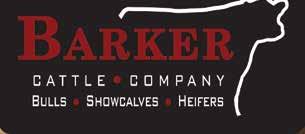







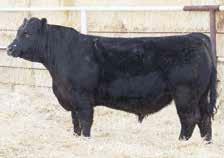

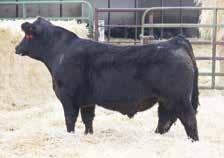



BARKER CATTLE COMPANY BULL AND FEMALE PRODUCTION SALE We focus on the TRAITS that PROFIT Western Cattlemen: Calving Ease • BW • WW • YW • API Selling 90 Simmental, Angus and SimAngus™ Bulls 50 Simmental, Angus and SimAngus™ Yearling Heifers Tuesday, February 28, 2023 Burley Livestock Auction, Burley, Idaho • 1:00 () Complimentary lunch served at 11:00 AM. Ruel & Tyler Barker 801-792-1036 801-372-0996 Tom & Sally Ottley 208-312-3085 208-312-5571 Braden Ottley 208-650-6295 tosalott@atcnet.net www.barkercattle.com Broadcasting Real-Time Auctions Bid online dvauction.com Marty Ropp 406-581-7835 Corey Wilkins 256-590-2487 Jared Murnin 406-321-1542 www.alliedgeneticresources.com SALE MANAGED BY: KB15 Purebred SM ASA: 4097348 Hook’s Frontline son He sells. KE21 Purebred AN AAA: 20539285 Freys Cowboy Logic He sells. KH018 SimAngus™ ASA: 4097344 BSUM Country Boy 038H son He sells. KF437 SimAngus™ ASA: 4097336 BSUM Country Boy 038H son He sells. KF247 SimAngus™ ASA: 4097343 TJ Flat Iron 259G son He sells. KA515 Purebred AN AAA: 20539280 Riverbend Growth Fund 9530 son He sells.
What 2023 Could Mean for Producers’ Profitability
 by Bernt Nelson, economist, American Farm Bureau Federation
by Bernt Nelson, economist, American Farm Bureau Federation
2022 was filled with mountains for U.S. cattle producers to climb. From high feed costs to the third consecutive year of drought, there was no shortage of complex obstacles, many with effects that will carry through well beyond 2023. This Market Intel is a deep dive into the 2023 cattle outlook, and what producers can do to position themselves for what lies ahead.
INVENTORY
All eyes will be on USDA’s semi-annual cattle inventory report, set for release on Jan. 31. This inventory of cattle and calves in the United States will set the tone for 2023. Many industry experts are forecasting the inventory to be 4 to 5 percent below 2022, which was 2 percent less than the Jan. 1, 2021, inventory. If the report estimates are 3.9 percent or more below Jan. 1, 2021, the inventory of all cattle and calves in the Unites States would be the lowest since 2013. If the inventory comes in near 5 percent below 2021, the inventory would be the lowest since we approached 82.08 million in 1951. The last time the Jan. 1 cattle inventory declined by 3 percent or more was in 1987.
The most recent Cattle on Feed (COF) report estimates that all cattle and calves on feed in U.S. feedlots with capacity of 1,000 head or more were 11.7 million on Dec. 1, 2022. This is 3 percent below 2021. Placements of cattle into feedlots in November were 1.93 million head, down 2 percent from the same time in 2021. Marketings of fed cattle in November 2022 totaled 1.89 million head, 1 percent above the same time last year. This is a record high for November marketings since the survey began in 1996 and comes after a record low for cattle placed into feedlots in October. Marketings of fed cattle outpaced placements of cattle on feed for much of 2022. This is an indicator that farmers are culling cattle and reducing herd size. This was mostly due to farmers facing higher feed costs, and extreme drought conditions, especially in the West and Southern Plains. The next COF report will be released on Jan. 20, ahead of the semi-annual inventory report mentioned earlier.
PRODUCTION
Beef production for November 2022 was 2.42 million pounds, 2 percent higher than the same time in 2021. Accumulated production was estimated to be 26.07 billion pounds, 2 percent higher than 2021, which was a record year for beef production. Production has been aggressive through much of 2022 with packers taking advantage of profitable margins that may not be as easy to come by in 2023. Supplies of
cattle will be tighter in the upcoming year, which may force packers to pay more to secure cattle and meet demand. If inventory drops between 4 percent and 5 percent, the U.S. will be looking at a 400,000-500,000 metric ton decrease in production in 2023 and will provide price support.
Dressed and live weights were also up for much of 2022, with the average live weight for November coming in at 1,384 pounds. This is up 2 pounds from this time last year. USDA’s Economic Research Service (ERS) raised estimates for fourth quarter beef production by 70 million pounds, to 28.4 billion pounds, due to higher expected cattle slaughter and heavier carcass weights. The combination of increased cattle slaughter and higher average dressed weights should make 2022 a record year for production. ERS estimates 2023 production to slow year-over-year, dropping 7 percent to 26.4 billion pounds. This is largely due to the expectations for a smaller cattle inventory for the upcoming year.
WEATHER
For the third consecutive year, drought has plagued much of the U.S. in 2022. The West and Southern Plains experienced some of the worst drought conditions in recent history. This has taken a toll on pasture and rangeland conditions in regions of the country with the
VOLUME 10 • FEBRUARY 2023 Utah Cattleman SeedStoCk edition 18
highest concentrations of cattle. On Oct. 30, 2022, 64 percent of the cattle in the U.S. were in regions where more than 40 percent of pasture and rangeland conditions were rated as poor to very poor. These conditions were among the top reasons we saw contraction in the cattle industry in 2022.
To begin with, the Southern winter wheat crop was damaged because of the drought. Then temperatures dropped during the last week of December before there was adequate snowfall to protect crops from the cold. Winter kill of the winter wheat crop would be another incentive for famers to market cattle and continue contraction of the cattle industry into the spring.
The good news is there have been signs that La Nina has started to weaken. The National Oceanic and Atmospheric Administration’s National Climate Prediction Center updates the Nina status on the second Thursday of every month. According to the most recent summary, La Nina is still present. However, there is an equal chance that ENSO-neutral (El Nino Southern Oscillation – Neutral) status will develop between January and March, and a 71 percent chance of an ENSO-neutral event occurring in February through April 2023. An ENSO-neutral event is one where neither El Nino or La Nina are present. The ENSO-neutral event is one of the most important climate phenomena because it can change circulation patterns of the global atmosphere. What this means in plain language is that chances are pretty good for breaking the La Nina trend that has caused the drought.
PRICES
For the week ending Dec. 6, the U.S. Drought Monitor reported 78 percent of the United States was experiencing some level of drought. While winter weather has provided some much-needed moisture since the beginning of December, much of the U.S. remains under threat of drought conditions for 2023. The winter weather has given packers some trouble securing cattle, causing a drop in cattle slaughter last week and a jump in beef prices.
Cash asking prices in the Southern Plains have been holding at $158/cwt for fed cattle. So far packers have not been willing to pay that, but the declining cattle marketings reported by COF will force them to eventually pay some higher prices as supplies continue to tighten. In Midwestern states such as Iowa and Nebraska, prices been as high as $160/cwt for fed cattle with the greatest volume of trade occurring near $158/cwt. Prices have been much higher for replacement heifers with desirable genetics, especially in the Midwest. The 5-market weekly regional weighted average fed steer price for the week ending Dec. 4 was $156.42/cwt, the highest price since May 31, 2015, when the average price was $155.59/cwt.
Outside markets such as corn and stock markets are playing a major role in futures price volatility in live and feeder cattle. When stock markets move upward on the day, this is supportive of upward movement in livestock futures because it means consumers have more money to spend. Corn futures are reflective of a primary feed source for livestock. When the price of corn drops, it is supportive of livestock futures. On the other hand, when corn futures increase, it puts pressure on livestock futures.
Feeder cattle are changing the market situation.
Recently, feeders and live cattle have really broken out to the upside in the futures markets. Recall placements in the most recent COF report were down 3 percent year over year. The tighter supply is first felt in feeder cattle contracts. The market is becoming current. This means that the fundamental events are changing futures prices. The January feeder cattle contract is currently trading at $185.22 with the deferred (months outside the nearest contract month) months being much stronger. This really puts things in perspective when the deferred contracts are analyzed. May feeder cattle were trading at $191.86 on Jan. 4, which indicates the expected supply/demand effects later in the year. Live cattle have moved higher as well but not at the same rate as feeders. Lower numbers of placements of cattle on feed are being built into feeder cattle contracts. Live cattle are still available in good numbers from a time when placements were still strong, so the live cattle futures contracts aren’t moving higher as fast.
CUTOUT
The choice/select spread (the price difference between choice grade and select grade beef) narrowed a bit after getting quite wide during the holidays. When the spread is particularly wide, it can be an indicator of consumer willingness to pay a premium price for higher grade beef (choice grade). Choice beef was up $9.12 for week ending Dec. 23, 2022. Beef prices continued to jump during the first week of January due to weather issues, with choice up $4.97 at $286.95/cwt and select up $3.70 at $254.63/ cwt on Jan. 3. Positive packer margins will spark aggressive buying because packers will want to take full advantage of profitability when it occurs. Packers will be facing periods of negative margins in 2023. The growing spread between choice and select beef combined with record production are an indicator that demand for beef is very strong. If it holds, strong demand with tighter cattle supplies should keep a very positive environment for cattle producers in 2023.
PRODUCTION COST
One obstacle to profitability in 2023 will be the cost of production. Net farm income for farmers reached record levels driven by record percent increases in cash receipts across many sectors of agriculture. However, there were other records set as well. Production expenses were also estimated up $70 billion, or 19 percent, to a record $442 billion in 2022. Costs for feed, fertilizer, chemicals and fuel to maintain pastures are expected to stay elevated in 2023.
Drought has further exacerbated production costs, driving up prices for hay and feed, especially in regions particularly hard hit. Corn prices have come down since their highs in May and June. At that time corn prices approached $7.50 for fall delivery while soybeans were near $15.50 in many production regions of the country. The futures price for the March contract was $6.52, while the December 2023 contract was $5.91. While feed prices have come down from their highs, in most cases these
www.UTAHCATTLEMEN.org 19 Utah Cattleman SeedStoCk edition
...CONTINUED ON PAGE 20
...CONTINUED FROM PAGE 18
prices are still nearly double what they were just a few years ago.
The cost of debt is another concern for farmers. Farming in general requires a great deal of working capital to continue operating. Interest rates for operating loans will be double or even triple what they were just a couple years ago. This is largely due to the series of interest rate hikes by the Federal Reserve to combat inflation. Inflation has many negative effects including dropping land values, which were recently at record levels.
CONSUMER DEMAND
With beef prices expected to go up in 2023, what about consumer demand? Stock market variability and the threat of a recession are on the minds of many and would affect the amount of money in the pockets of U.S. consumers. Households will likely consume as much beef as they can afford. Government programs for nutrition benefits are also supportive of beef demand. The question is, how high will beef prices have to go before consumers start looking for substitutes such as pork and poultry? Retail prices for pork and poultry remain elevated as supplies are tight and avian influenza is continuing to cause problems.
Retail beef prices have been elevated over the last couple of years, reaching as high as $7.55 per pound in October 2021 due to supply chain issues. Since then, beef prices have remained elevated with the average retail price at $7.37 per pound on Nov. 22, 2022. Demand has the potential to drop off if prices move higher but so far it has remained resilient.
Total red meat in cold storage decreased 4 percent, from 9.75 billion pounds to 9.42 billion pounds in the month of November, but it is up 10 percent compared to the same time in 2021. Beef in freezers on Nov. 30 was 521.87 million pounds, rising 2 percent and up 6 percent from 490.41 million pounds last year. A drop in total red meat in cold storage is typical in the month of November, with an average decline of about 3 percent ahead of the holiday season. These strong levels of meat in cold storage should help keep retail prices tempered for a while. This is good for producers who rely on keeping consumer demand strong.
GLOBAL MARKET/TRADE
With the U.S. looking at reduced production and continued demand, the question then becomes who can satisfy this appetite? Beef importers will be looking to benefit from the decline in production but where will the product come from? Canada and Mexico are historically the top two suppliers in the U.S. market. However, Canada is currently in the contraction phase
of their cattle cycle as well. Australia is beginning the expansion phase of their cycle, which will limit beef available for export. South America has the potential to satisfy some of the demand gap. USDA has recently moved to allow trim to be imported into the U.S. from Paraguay under certain conditions. Brazil has enough beef to export but lacks sufficient infrastructure to move beef product efficiently.
On the export side of things, accumulated U.S. beef exports through November 2022 were just under 1.087 million metric tons, about 4.5 percent ahead of the same time last year. The top buyers of U.S. beef so far in 2022 in order are South Korea, Japan, China, Mexico and Canada. These five countries are responsible for 82 percent of all U.S. beef export sales. South Korea, Japan and China alone are responsible for 70 percent of all export sales.
China has been in the spotlight lately. 2022 is forecast to be a record year for U.S. red meat exports with China buying huge amounts beef. China has begun loosening COVID restrictions, resulting in growing cases of the virus. Last year analysts were expecting loosened COVID restrictions to stimulate demand. On the contrary, when restrictions let up, COVID cases skyrocketed, keeping consumer demand from rising. Beef prices in China have remained strong despite a weakening economy. However, beef prices are also nearly twice that of pork, which is a substitute. This may limit the ability of beef prices to continue their climb in China, which should keep demand strong.
SUMMARY AND OUTLOOK
The beef outlook for 2023 is very positive. Cash prices have gone up and still have room for more. A decreasing cattle supply resulting from contraction in the cattle industry should combine with adequate demand to provide support for prices throughout the year. Tighter supplies are showing up through smaller placements of cattle on feed. Lower placements have driven feeder cattle futures higher with live cattle trailing. The deferred months are higher than the nearby and are accounting for the tighter supply and demand. There will be many factors that have the potential to offset higher prices. Farmers will be up against weather, high input costs, inflation and potentially a recession that would leave consumers with less money to buy beef. The good news is demand for beef is very strong in domestic and global markets after what was likely a record year for beef production. Cattle producers will be looking for relief from drought so damaged pasture and rangeland can begin to recover before contraction in the cattle business can come to an end.
VOLUME 10 • FEBRUARY 2023 Utah Cattleman SeedStoCk edition 20


















www.UTAHCATTLEMEN.org 21 Utah Cattleman SeedStoCk edition www.REESCATTLE.com Scott Rees (801) 949-8960 Jake Rees (801) 668-8613 Roger Rees, DVM (801) 913-5747 reescattle@gmail.com Take Exit 106 of I-84 Morgan, UT OFFERING ANGUS, HORNED AND POLLED HEREFORDS!! NJW 16C Z115 S POT O N 74G ET NJW 79Z Z311 E NDURE 173D ET B ALDRIDGE M OVIN O N G780 Bulls w h these genetics sell! GAR S F M USGRAVE A VIATOR H ere at Rees Bros we operate a no-nonsense performance-oriented program. Our cows must calve every year in a 60 day breeding exposure and bring home a big calf. ere is no forgiveness for low milk, poor udders, bad feet, cancer eye or poor temperament. ey summer at 5000 to 9000 ft elevation on some 7000 acres of mountain forage. ere is no creep feeding or hot rations. Our goal is to provide you with some of the freshest and most proven genetics that the industry has to o er; with bred-in performance and an unconditional soundness guarantee. Come see for yourselves how Rees Bros can help your program. You'll be happy you did. Spring Sale Date! • 2-17-23 OUR BULLS CARRY A FULL GUARANTEE THROUGH THE FIRST YEAR AND WE STAND BEHIND OUR CATTLE 100%. Selling 90 Bulls • Hereford|Angus Lunch 12:00 Sale 1:00 At e Ranch Morgan, UT
Leap into 2023 with our Spring Special

A new year means another breeding season is right around the corner. Make matings with intent with our best bulls at the best prices with our 2023 Spring Special.
Mix and match bulls listed below to get volume pricing on these elite sires. Combine with our exclusive Beef Deferred Program for 0% financing through November 10, 2023.** Ask about our 3% cash discount in lieu of our free financing.† See below for details.
The ABS Spring Special ends March 28, 2023 or while supplies last.
SPRING 2023 SPECIAL
PROVEN AND PROMISING SPECIAL
*Short supply bulls may be removed from the special early. Cannot be used in conjunction with regular volume discounts. **If payment for the Beef Deferred Program balance is not received by November 10, 2023, interest will be imposed on the unpaid balance from the due date of purchase at an APR of 15.00%. †Cash discount applies to 29 stud code bulls only and payment by check or electronic check must be received within ten days of order shipping.

VOLUME 10 • FEBRUARY 2023 Utah Cattleman SeedStoCk edition 22
Have a later breeding season? Profit from Genetic Progress | 800.ABS.STUD | ABSglobal.com ©2022 ABS Global. All Rights Reserved. ANGUS Retail 30 50 100 29AN2025 STELLAR $25 $22 $20 $18 29AN2032 RAMESSES $25 $22 $19 $16 29AN2064 IDENTIFIED $25 $22 $20 $18 29AN2093 PATRIARCH $25 $22 $20 $18 29AN2099 FIREBALL $40 $36 $33 $30 29AN2113 ACCOMPLISHMENT $30 $26 $24 $22 29AN2120 COMMODORE $25 $22 $19 $16 29AN2144 TRUE NORTH $30 $26 $24 $22 29AN2145 CHARISMA $25 $22 $20 $18 29AN2180 STOCK FUND $35 $32 $28 $25 29AN2218 DYNAMIC $40 $36 $33 $30 29AN2245 SUSTAIN $25 $22 $20 $18 29AN2272 WHITEWATER $35 $32 $28 $25 237AN2869 ENHANCE $25 $22 $20 $18 237AN3377 PLUS ONE $30 $26 $24 $22 629AN1751 BRILLIANCE Sexcel Female $50 $45 $40 $35 629AN2025 STELLAR Sexcel Female $50 $45 $40 $35 629AN2093 PATRIARCH Sexcel Female $50 $45 $40 $35 629AN2113 ACCOMPLISHMENT Sexcel Female $50 $45 $40 $35 629AN2145 CHARISMA Sexcel Female $40 $36 $33 $30 629AN2218 DYNAMIC Sexcel Female $60 $50 $45 $40 629AN2221 COMSTOCK Sexcel Female $40 $36 $33 $30 929AN2032 RAMESSES Sexcel Male $40 $36 $33 $30 929AN2093 PATRIARCH Sexcel Male $50 $45 $40 $35 929AN2218 DYNAMIC Sexcel Male $60 $50 $45 $40 RED ANGUS Retail 30 50 100 29AR0262 NO WORRIES $25 $22 $19 $16 29AR0274 PROFITMAKER $25 $22 $19 $16 29AR0276 FINISHED PRODUCT $25 $22 $20 $18 29AR0280 PROPULSION $30 $25 $22 $20 29AR0282 DEFINITIVE $25 $22 $20 $18 29AR0284 PRIME PLUS $40 $36 $33 $30 29AR0287 PLAYMAKER $30 $25 $22 $20 629AR0262 NO WORRIES Sexcel Female $40 $36 $33 $30 629AR0276 FINISHED PRODUCT Sexcel Female $50 $45 $40 $35 HEREFORD Retail 30 50 100 29HH0843 DOMINO 1109 $25 $22 $20 $18 29HP0953 TRADEMARK $40 $35 $30 $25 29HP0954 BARRACUDA $40 $35 $30 $25 29HP0956 KINGDOM $30 $26 $24 $22 629HP0953 TRADEMARK Sexcel Female $60 $50 $45 $40 629HP0954 BARRACUDA Sexcel Female $60 $50 $45 $40 629HP0956 KINGDOM Sexcel Female $60 $50 $45 $40
SIMMENTAL Retail 30 50 100 29SM0472 BOULDER $25 $22 $18 $16 29SM0490 FRONTLINE $25 $22 $20 $18 29SM0495 TJ GOLD $30 $26 $24 $22 29SM0496 COPPERHEAD $25 $22 $18 $17 29SM0501 231A $25 $22 $19 $16 29SM0502 HOMELAND $30 $26 $24 $22 29SM0503 HONOR $30 $26 $24 $22 29SM0507 COMMANDER $25 $22 $20 $18 29SM0509 WAR PAINT $30 $26 $24 $22 29SM0513 ARROWHEAD $30 $26 $24 $22 629SM0472 BOULDER Sexcel Female $50 $45 $40 $35 629SM0507 COMMANDER Sexcel Female $45 $40 $35 $32 629SM0513 ARROWHEAD Sexcel Female $40 $36 $33 $30 929SM0507 COMMANDER Sexcel Male $45 $40 $35 $32 NUERA TERMINAL GENETICS Retail 30 50 100 29XB1057 NuEra T14 PROFIT PREMIER Pack $25 $22 $20 $18 29XB1058 NuEra T14 PROFIT PLUS Pack $22 $20 $18 $15 929XB0142 NuEra T14 PK539-0142 Sexcel Male $40 $36 $33 $30 929XB0163 NuEra T14 G0198-0163 Sexcel Male $35 $32 $28 $25 SPECIAL ENDS JUNE 27, 2023 ANGUS Retail 30 50 100 29AN1949 CROSSBOW $22 $20 $18 $15 29AN1971 FULL FORCE $22 $20 $18 $15 29AN2117 CENTERFIRE $22 $20 $18 $15 29AN2121 PREDICTION $25 $22 $19 $16 29AN2162 REFRESH $25 $22 $19 $16 29AN2221 COMSTOCK $25 $22 $20 $18 29AN2246 GUNNER $30 $26 $24 $22 29AN2248 DOMINANCE $30 $25 $22 $20 29AN2249 REPUBLIC $25 $22 $20 $18 29AN2250 RIGHT KIND $30 $25 $22 $20 29AN2252 POLARIS $22 $20 $18 $15 29AN2253 DIGNITY $30 $25 $22 $20 29AN2258 ROWDEN $22 $20 $18 $15 29AN2261 REALITY $30 $26 $24 $22 29AN2265 VISION $40 $36 $33 $30
Contact Joe Jones, ABS Beef Manager today to take advantage of the best genetics at the best prices! Joe Jones 208.670.2364 Joe.Jones@genusplc.com UtahCattlemans_Feb_0123_8-25x10-75_Ad.indd 1 1/5/23 12:21 PM



New WOTUS Rule Revives Decades of Uncertainty

As many families were relaxing between Christmas and New Year’s, the Environmental Protection Agency (EPA) was hurriedly finalizing a new “Waters of the United States” (WOTUS) rule and adding to the regulatory uncertainty that has plagued cattle producers for decades.

“The timing of this rule could not be worse,” said NCBA Chief Counsel Mary-Thomas Hart. “It’s bad enough that the EPA unveiled this rule when many farming and ranching families are enjoying the holidays, but the Supreme Court is currently considering Sackett v. EPA, which will likely impact the WOTUS definition. The EPA’s final rule seeks to directly preempt ongoing Supreme Court litigation, leaving farmers and ranchers with more questions than answers.”
The release of this new WOTUS rule in the midst of a Supreme Court case has only added to the uncertainty cattle producers have faced the last 50 years. On average, the federal government has changed the definition of WOTUS every 3.8 years since the Clean Water Act passed in 1972, leading to decades of confusion.
“The Sackett case is an opportunity to finally solidify the EPA’s proper jurisdiction,” Hart said. “NCBA has long fought for a consistent WOTUS definition that offers clarity for producers.”
The Biden Administration’s WOTUS definition is detrimental for cattle producers and landowners across the country. In an attempt to strike a balance between the 2015 Obama definition and 2020 Navigable Waters Protection Rule, EPA only created new confusion for regulated stakeholders. Features like ephemeral tributaries that only carry water after a precipitation event, or isolated features that do not contribute to downstream water quality, are neither categorically jurisdictional or exempt. Instead, these features are subject to case-bycase jurisdictional determinations, creating a resourceintensive and costly new burden for cattle producers.
While the new rule is highly concerning, there is one bright spot. EPA’s proposed rule, first issued in December 2021, included no jurisdictional exclusions for agricultural features — even following the use of these valuable carveouts in both the Obama and Trump-era rules.
“NCBA worked quickly to tell the Biden administration how harmful the loss of these agricultural exclusions would be,” Hart said. “We also encouraged our members to speak up and their comments to the EPA were crucial for retaining the exemption. Our producers’ voices were heard loud and clear.”
The final definition excludes many important
agricultural features including prior converted cropland, certain ditches and stock ponds. The final rule also contains a definition for prior converted cropland, attempting to align USDA and EPA standards and reduce confusion.
However, without a clear definition, cattle producers are left with the most concerning aspect of this new WOTUS rule: case-by-case determinations. This approach — a failure to tell regulated stakeholder what is “in” and “out” — requires cattle producers to ask the government if they have a regulated water feature on their property instead of providing a definition that allows landowners to make the determination on their own. Without clarity, features that are dry for most of the year or with no impact on downstream water quality might suddenly have the same federal protection and permitting requirements as a large lake, river or ocean. In the past, such ambiguity has led to landowners conducting activity on their private property, such as constructing a dam to establish a stock pond, only to be surprised by an enforcement action by the U.S. Army Corps of Engineers and EPA. These “gotcha” violations can lead to years in federal court and thousands of dollars in unnecessary expense.


NCBA’s concerns about the final rule extend beyond its substantive impacts. EPA chose to issue this final rule while the Supreme Court is also actively considering the definition of WOTUS. On Oct. 3, 2022, the Supreme Court heard oral arguments in Sackett v. EPA, a case which concerns a couple in Idaho who purchased lakeside property to build their dream home. While the facts of the case are not farming-related, this case will have a significant impact on the future definition of WOTUS. This is the fourth time that the Supreme Court has considered the definition of WOTUS — and the first time for six of the nine sitting Justices. A decision is expected in Spring 2023. NCBA requested that EPA pause its rulemaking until the Supreme Court issued it’s Sackett opinion. The Agency’s impatience will likely lead to more rulemakings on this important issue in the next two years.
Throughout last year, NCBA encouraged members to send letters to the EPA calling for a clear WOTUS definition and explaining how WOTUS impacts farms and ranches outside of Washington, D.C. More than 1,700 cattle producers from 44 states submitted feedback to the agency. NCBA also mobilized cattle producers to share their stories at EPA and Army Corps listening sessions and participate in agency roundtables. These events provided policymakers with the cattle industry’s perspective on the new WOTUS rules.
VOLUME 10 • FEBRUARY 2023 Utah Cattleman SeedStoCk edition 24
from the National Cattlemen’s Beef Association
Joinuslive or online!
WE HOPE TO SEE YOU AT ONE OF THESE UPCOMING SPRING EVENTS!
WVM HEADQUARTERS, COTTONWOOD, CA ALSO EXPECTING 10,000 SPRING LAMBS

CONSIGNMENT DEADLINE FEBRUARY 22

WYNDHAM VISALIA, VISALIA, CA
CONSIGNMENT DEADLINE MARCH 27

SIMULCAST ON DISH 998
TOP QUALITY CATTLE AND SHEEP FEATURED IN THESE SALES FROM THE WEST’S LEADING PRODUCERS!



WATCH, LISTEN AND BID ONLINE AT WWW.WVMCATTLE.COM





VOLUME 10 • FEBRUARY 2023 Utah Cattleman SeedStoCk edition 26 View bull videos 2 weeks prior to sale at UBIABULLS.COM UBIA Performance Bull Test March 18, 2023 - 1:00 p.m. Producers Livestock Market - Salina, Utah Sale Preview at 10:00 a.m. Lunch provided by Producers Livestock For more information contact Chris Beins @ 435-452-1806 Selling 30 Quality Heifers Sale Since 1972 Free delivery up to 300 miles Angus Red Angus Balancer Sim-Angus Bid Online at LiveAuctions.tv 16th Annual Bull and Female Production Sale Saturday February 25, 2023 1pm(MST) At the Ranch 7673 E Hwy 40 Jensen UT 84035 Randy Vincent (435) 828-1111 Randan Vincent (435) 828-1116 Jake Wilkins (435) 828-8391 rvranch@easilink.com I www.rvbarangus.com THE RV BAR HERD IS NOW IN ITS FOURTH GENERATION AND CONTINUES TO GROW AND EXPAND WITH SUPERIOR SEEDSTOCK. Selling: • 65 Yearling Black Angus Bulls • 10 Yearling Simmental Bulls • 2 18-month Black Angus Bulls • 2 Hereford Bulls • 10 Select Females Open and Bred o with some F1 Black Baldies Sires in use: SAV Rainfall• Turning Point • Deer Valley Growth Fund •Syden Enhance•Sitz Sensation •GB Fire Ball•Mead Magnitude •Deer Valley Growth Fund•Yardley Standout•THSF Loverboy•Fully Loaded•TGI Friday•LCX Perfecto•Mandate Progeny
Rainfall Sell • Bulls will be PAP tested. • Free Delivery on five or more bulls within 150 miles. • Free Feed on Bulls until May 15th 2023 TheLargestSalein NortheasternUtah HerdSummersat 8,500ftinElevation
from: SAV







AMPLIFYING MATERNAL HETEROSIS
Getting the results you’re after via sexed semen and crossbreeding
ABS Global’s Sexced female semen opens the door to a number of possibilities for producers interested in making the most profitable and productive replacement females. We often find ourselves in a debate over the importance of any number of “Maternal” traits, EPDs, or physical characteristics of cattle. While those are important pieces of the discussion, the well documented positive impacts of crossbreeding and maternal heterosis on a cowherd’s productivity are often forgotten in the conversation.
The impacts of crossbreeding can be profound, however implementing a planned crossbreeding system can present challenges. Female sexed semen provides us a tool to overcome the difficulties that have historically prevented producers from taking advantage of maternal heterosis.
Crossbreeding fundamentally works in two ways:
• Provides an opportunity to combine complimentary traits from multiple breeds.
• Overcomes the negative effects of inbreeding that are the result of the relatively close genetic relationship of individuals within the same breed.
Undeniable Benefits
The benefits of hybrid vigor are undeniable. When created thoughtfully, crossbred progeny can exceed the productivity of their parents, often with less input cost. The icing on the cake is that the most marked impacts of crossbreeding tend to be on traits that are hardest to improve in purebred cattle. These traits are invaluable for maternal profitability. Characteristics like fertility, longevity, health, and fitness all benefit from
Crossbreeding Systems
There are several crossbreeding systems that can be used to take advantage of hybrid vigor. Each system has its pros and cons. The key to a successful crossbreeding system is it should be planned.
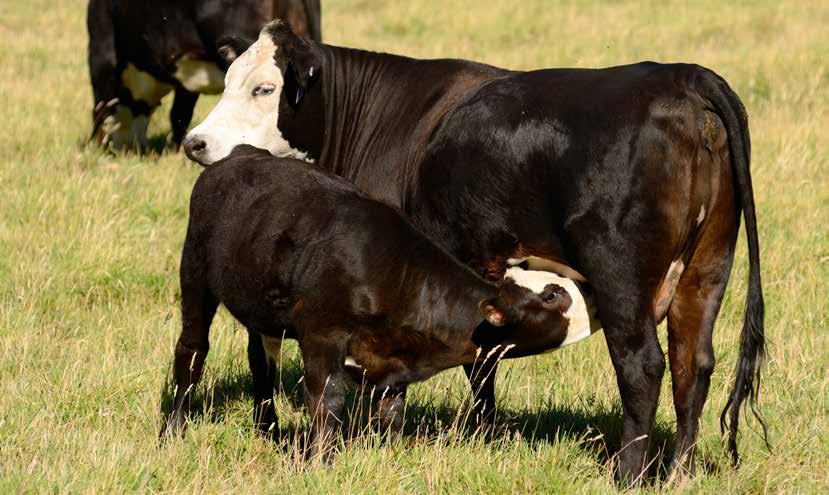
Crossbreeding at its Best
The effect of crossbreeding is the most profound in a first cross of two purebred parents of different breeds with the resulting progeny known as an F1. This cross of unrelated individuals captures 10 percent of the
...CONTINUED ON PAGE 30

VOLUME 10 • FEBRUARY 2023 Utah Cattleman SeedStoCk edition 28
from ABS
hybrid vigor. Table 1 depicts some well-known benefits of crossbreeding on maternal function.
TABLE 1.




www.UTAHCATTLEMEN.org 29 Utah Cattleman SeedStoCk edition THD © Online Bidding and Bull Videos 2-18-23 Fallon, NV Rafter 3C Arena 325 Sheckler Rd., Fallon, NV Lunch: 12 p.m. Sale: 1 p.m. SALE HOSTS Hone Ranch Gudel Cattle Company Westwind Ranch Angus Easterly Romanov Ranch Popovits Family Ranch Diablo Valley Angus Hertlein Cattle Company Cardey Ranches Carter Griffin Inc. Hatchet Ranch Daniels Herefords Jorgensen Charolais Rafter 9 Ranch Romans Angus & Brangus Steve Smith Angus & Gelbvieh Range-Ready Division 70 BULLS SELL CONSIGNED BY: Cope Cattle Wild West Angus Cardey Ranches Feather River College Hatchet Ranch University of Nevada MDB Polled Herefords Broken Box Ranch Lund Angus Ranch Gem State Angus Rafter 9 Ranch Steve Smith Angus Amador Angus Spanish Ranch Savage Cattle CONSIGNORS Performance-Tested Division 100 BULLS ON TEST AT SNYDER LIVESTOCK CO. THD © Sale Catalog, Videos & Test Datawww.greatbasinbullsale.com Email greatbasinbullsale@gmail.com Auctioneer Jake Parnell, 916-662-1298 Endorsed by Brought to you by HONE RANCH GUDEL CATTLE COMPANY WESTWIND RANCH ANGUS HONE RANCH Charlie Hone 775-691-1838 honeranch@frontier.com GUDEL CATTLE CO. Kris Gudel 916-208-7258 gudelcattleco@gmail.com WESTWIND RANCH ANGUS David Holden 530-682-8594 wstwind@hotmail.com SALE MANAGER Matt Macfarlane, 916-803-3113 m3cattlemarketing@gmail.com www.m3cattlemarketing.com
of the available heterosis. The iconic F1 Hereford by Angus cross, “Black-Baldie”, is perhaps the most recognizable example. The Black Baldie female is legendary for her fertility, longevity and efficiency.
Researchers at Oklahoma State University recently demonstrated that pregnant Black Baldie females consumed almost two pounds per day less dry matter as compared to straight-bred Angus females on a cow weight adjusted basis. While two pounds may seem insignificant on a given day, multiplying those two pounds across a cowherd and production year will get your attention. Crossbred females also consumed less but maintained a higher body condition score throughout the trial.
This is a great demonstration of breed complementarity at work in a cowherd. The F1 cross is ideal in terms of maximizing heterosis, but for producers breeding and developing their own replacements, it is nearly impossible to implement. Unfortunately, many producers cannot afford to keep or manage a nucleus of purebred females just for production F1 replacement heifers.
Rotational Crossbreeding Systems
For producers unable to maintain a system of producing F1 females, a rotational crossbreeding system can capture a majority of available heterosis year-after-year. A rotational crossbreeding program is manageable to implement, particularly with Sexcel female semen and a cowherd segmentation approach.
In the breeding program, females selected to be bred with sexed semen are mated to a sire from the breed which represents the smallest portion of the female’s own breed composition. In simple terms using an Angus and Simmental system, females with a high percentage of Angus composition are mated to Simmental bulls, and high percentage Simmental females are bred to Angus. While it does require more management than a straight-bred herd, there are multiple tagging and identification approaches that can be used to simplify breeding decisions chute-side.
A 2-breed rotation can capture two-thirds of the available heterosis, and you can capture nearly 86% of the potential hybrid vigor by adding a third breed to the rotation. Adding more breeds to the rotation would continue to improve our utilization of hybrid vigor, but the reality is we struggle to find enough breeds with the combination of maternal traits we desire to incorporate.
While heterosis improves the productivity of resulting progeny, it cannot overcome the disadvantage of adding significantly inferior genetics to the mix. Adding too many breeds to the system can result in substantial phenotypic variation. Two and three breed rotations optimize retained heterosis, while allowing us to focus on progressive breeds with recognized maternal excellence.
A Simple Way to Utilize Hybrid Vigor
Perhaps, the simplest way to take advantage of hybrid vigor is to utilize composite-breed genetics. Traditionally, a composite was the result of a breeding program crossing two or more breeds over multiple generations to ensure phenotypic variations had been stabilized (i.e. Santa Gertrudis and Beefmaster). More recently, the terminology has been used more broadly to describe crossbred genetics, regardless of whether the composite has truly been stabilized (i.e. SimAngus).
Utilizing a composite breed simplifies breeding decisions and necessary records because all females can be mated to the same “composite-breed” of sire. The only limitation is that we don’t fully capitalize on the benefits of hybrid vigor. A two-breed composite retains only 50 percent of the possible heterosis. Nonetheless, composite breeds offer a good compromise between retained heterosis and ease of use.
ABS offers an exceptional lineup of maternally focused bulls in several breeds that fit the goals of nearly any operation. While we think of certain breeds bringing particular traits of interest to the table, there can be as much variation within breeds for given traits as there is between breeds. Individual bulls can help or hurt your breeding objectives, no matter the breed. For instance, Hereford cattle tend to have a reputation for being low maintenance, low intake cattle. Nonetheless, we can still identify Hereford sires with the potential to sire high appetite progeny, and conversely, we can identify sires from other breeds that can move the needle in the opposite direction.
Take home message is don’t assume sires from a particular breed fit the established stereotype for that breed’s characteristics.
Do your homework and make sure the EPDs and indices match your expectations. We have identified maternally focused sires in “Bull Search,” found at absbullsearch.absglobal.com, that we believe will suit the maternal needs of most production scenarios. There may be other sires in our lineup beyond those listed below that meet the needs of your operation. Please note that the right sire selection decision is unique to every operation’s overall goals and labor and management availability.
ABS Global’s Sexcel female semen gives producers the opportunity to design a heifer calf crop that will benefit from the long-term advantages of maternal heterosis. Producers can take advantage of breed complementarity and heterosis by generating replacement females from a defined portion of their cowherd with Sexcel without concern about the performance of male progeny from the same mating. In fact, strategically creating replacements gives you the flexibility to utilize another sire breed on the remaining cows to capture heterosis in the portion of your calf crop that will enter the beef supply chain.
Contact your local ABS Representative today to find out how female Sexcel from the right bull can help you build a resilient, profitable and sustainable cowherd.
VOLUME 10 • FEBRUARY 2023 Utah Cattleman SeedStoCk edition 30 ...CONTINUED FROM PAGE 28




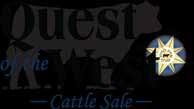














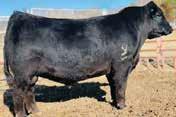
Are your bulls used to 10,000 feet? Ours were raised there Jeff and Tamara Loveless Spanish Fork, UT 801-623-8308 • 801-623-8309 www.LovelessGelbvieh.com Sale Parnter in the Selling 50 Loveless Bulls! March 10, 2023 6:00 pm Spanish Fork Fairgrounds Spanish Fork, UT OVER For Justice 217F Sired by ALL BULLS PAP Tested at 7,300 ft. Plus featuring sons of Marble Tender 006X, Gunner 947G, Circle L Gus, Day Money DE047, Big Andy, Sam ET DLW, CTR Elevation, Capital Asset 9756G Proven performance in the feed yard and on the rail! Howard 101H Jeff 801-623-8308 Tamara 801-623-8309 www.LovelessGelbvieh.com Game Day 443G Halls Crossing 024H New recommendations for PAP Testing Bulls (they should be at elevation for at least 6 weeks) Cattle summer at elevation (between 7,000 and 10,000 feet) PAP Test at elevation (we test at 7,300 feet) All replacement females tested (we test ours at 7,300 feet) Select bulls for high elevation genetics (all sires carry these stringent criteria) Cattle can travel and carry excellent phenotype (we run in steep, rocky country - they have to have good structure)
LOVE OF THE LAND
Myrin Family Honored with Utah’s Leopold Conservation Award
Given in honor of renowned conservationist Aldo Leopold, the prestigious award recognizes farmers, ranchers and forestland owners who inspire others with their dedication to land, water and wildlife habitat management on private, working land.
Alarik and Beth Myrin and their children Rik, Deborah, and Nils (and their families) manage about 35,000 acres, between private land and federal grazing permits. The Myrin family has ranched in Duchesne County since 1945, and have long relied on conservation to achieve efficiency.
The Myrin family was presented with $10,000 and a crystal award at the Utah Farm Bureau Federation’s Annual Meeting in Provo.
In Utah the award is presented annually by Sand County Foundation, American Farmland Trust, Utah Farm Bureau Federation, Western AgCredit and Utah Cattlemen’s Association.
“Our current time places a premium on conserving water and natural resources, and so we congratulate the Myrin family on the efforts they’ve made on their farm amd ranch to do just that, said Ron Gibson, President of the Utah Farm Bureau Federation. “While we can only recognize one family with this award, we also want to thank the other finalists and the other farmers and ranchers in our state who feel a sense of responsibility to the land and animals.”
“The Myrin family is a wonderful example of landowners that have made conservation a way of life, and we congratulate them on this well-deserved

recognition,” said David Brown, President of Western AgCredit. “As dedicated land stewards, they are always mindful of the importance of preserving and protecting natural resources so they can thrive for generations to come, and we commend them for their efforts.”
“In a society where conservation is ever growing more socially important, it is exciting to see a multigenerational family demonstrate that conservation has been important for decades on their ranch. The Utah Cattlemen’s Association congratulates the Myrin family on earning this prestigious award,” said Brent Tanner, Utah Cattlemen’s Association Executive Vice President.
“The Myrin family is an example of how Aldo Leopold’s land ethic is alive and well today. Their dedication to conservation shows how individuals can improve the health of the land while producing food and fiber,” said Kevin McAleese, Sand County Foundation President and CEO.
“As the national sponsor for Sand County Foundation’s Leopold Conservation Award, American Farmland Trust celebrates the hard work and dedication of the Myrin family,” said John Piotti, AFT president and CEO. “At AFT we believe that conservation in agriculture requires a focus on the land, the practices and the people and this award recognizes the integral role of all three.”
Earlier in 2022, Utah landowners were encouraged to apply (or be nominated) for the award. Applications were reviewed by an independent panel of agricultural and conservation leaders. Among the many outstanding Utah landowners nominated for the award
VOLUME 10 • FEBRUARY 2023 Utah Cattleman SeedStoCk edition 32
from the Utah Farm Bureau Federation
were finalists: Bennion Beef of Vernon in Tooele County, and Lewis Farms of Monticello in San Juan County.
The first Utah Leopold Conservation Award was presented in 2007. To view all of the award’s recipients visit www.sandcountyfoundation.org/Utah.
The Leopold Conservation Award in Utah is made possible thanks to the generous contributions from American Farmland Trust, Western AgCredit, Utah Farm Bureau Federation, Utah Cattlemen’s Association, Sand County Foundation, Producers Livestock Marketing Association, The Nature Conservancy, Utah Association of Conservation Districts, Utah Department of Agriculture and Food, and Utah Wool Growers Association.
In his influential 1949 book, A Sand County Almanac, Leopold called for an ethical relationship between people and the land they own and manage, which he called “an evolutionary possibility and an ecological necessity.”
Sand County Foundation presents the Leopold Conservation Award to private landowners in 24 states for extraordinary achievement in voluntary conservation. To read the stories of other extraordinary landowners, visit www.leopoldconservationaward.org.
ABOUT MYRIN RANCH
The Myrin family is not immune to the harsh realities forced on Utah ranchers by drought.

In 2021 they reduced their cattle herd’s size. However, conservation practices are helping the Myrins make the most of the limited moisture Utah receives. An intensive, rotational grazing system benefits the Myrin Ranch’s ecosystem and beef cattle business.
Alarik and Beth Myrin and their children Rik, Deborah, and Nils (and their families) manage about 35,000 acres, between private land and federal grazing permits. The Myrin family has ranched in Duchesne County since 1945, and have long relied on conservation to achieve efficiency.
Whether building fences or developing water sources, their investment of time and resources has improved soil health and wildlife habitat on their pastures and rangelands. Quickly moving their grazing cow-calf herds leaves behind grass tall enough to regrow as a dense ground cover with greater ability to infiltrate and retain water.
The Myrins grow hay for their winter feeding needs. Over time they have improved the efficiency of irrigating hay fields. Pressurized sprinkler systems reduce the evaporation that comes from misting and fogging. Having enough hay stockpiled provides stability to their stocking rates and offers cover for wildlife. Hay is strategically placed near wildlife areas to keep wildlife from accessing valuable crops elsewhere.
Myrin Ranch is home to mule deer, elk, beaver, sage grouse, turkey,and waterfowl. It
hosts large populations of wildlife migrating off the Uinta Mountains. A grazing system where cattle are moved frequently gives the Myrins flexibility to work around sensitive wildlife areas at key times.
Wildlife-friendly electric rope fencing has replaced barbed wire because the Myrins view wildlife as a resource, not a nuisance. The riparian habitat along the Lake Fork River that runs through the ranch acts as a wildlife corridor.
The Myrins have planted trees, and made streambank restoration and flood irrigation improvements to that area with the Natural Resources Conservation Service. Although invasive and problematic, a patch of Russian olive trees is managed because deer and elk like them for sanctuary and feed. Where Russian olives have been removed elsewhere, fruit trees have been planted.
In addition to providing a mobile structure that provides shade for cattle, the Myrins continue to improve infrastructure that simplifies frequent cattle moves. They’ve also invested in water distribution to the forests where a majority of their cow-calf herd is grazed from June to October. The ability to graze more reduces the ranch’s carbon footprint as tractors are used less.
After five years of intensive grazing, the Myrins noticed the carrying capacity of their grassland increased by 20 percent. More available feed allowed them to raise some of their calves as yearlings and start a retail grass-fed beef business. They formed Canyon Meadows Ranch in 2009 as a way to diversify from the conventional beef market.
The Myrins are stewards of land, wildlife and the agricultural community. A partnership between the ranch and Utah State University provides agricultural and range students with employment opportunities. Off the ranch, Alarik Myrin is well known for serving his community, state, and the livestock industry. He served 18 years in the Utah Legislature, and has held many leadership roles with the Utah Cattlemen’s Association and the National Cattlemen’s Beef Association.
www.UTAHCATTLEMEN.org 33 Utah Cattleman SeedStoCk edition
Taste Driven by Demand and Profit
Quality starts long before feedyard rations reach the bunk, and it weighs heavily on the bottom line. Brian Bertelsen, vice president of field operations for U.S. Premium Beef LLC (USPB), discussed marbling’s impact on grid marketing at the Certified Angus Beef (CAB) annual Feeding Quality Forum at the end of 2022.
“Quality is not a recent trend, but instead a long-term trend,” Bertelsen said. With a Choice-Select spread of $12/cwt. in 2020 and $18.50/cwt. in 2021 (the highest in 10 years), the numbers speak for themselves. Prime percentages keep growing, averaging 10 percent in recent years, but rewards on the grid are actually larger. Our industry is supplying a higher quality product, with better eating satisfaction and consumer demand drives that higher premium in the wake of increased supply. Historically, most Prime is purchased by restaurants. When supplies increase, it allows for wider retail availability.
Bertelsen elaborated, due to decreasing percentage of Select in the industry from 37 percent to 14 percent in just six years, the industry has pushed retailers to purchase less Select, and instead buy higher quality meat. “Select may be cheaper for the grocery store, but consumers notice that taste difference,” he said.
What does that demand all come down to? Marbling.
“You can use EPDs (expected progeny differences) to build genetic potential—but then you have to manage the animal to express that,” Bertelsen said.
Specifically, producers must carefully manage body condition scores, herd health, docility, calving season and colostrum. To tweak it even further, bull calves should be castrated early and once weaned, fed grain-based growing rations.
While the calories in corn enhance marbling, the key management component is targeting an optimal end weight or body fatness, he said. That’s where partnering
with a seasoned cattle feeder becomes critical. Summarizing individual animals marketed on the USPB grid, sorted by Yield Grade, showed that as Yield Grade increases so does carcass weight, marbling and total dollars per head on the grid.
Bertelsen noted that marbling continues to influence the grid and adds to the bottom line.
In the 2021 packer survey conducted by CAB, premiums from cattle qualifying for CAB reached $182 million, or more than $3 million per week paid to producers. The top reason cattle don’t qualify for the brand has always been insufficient marbling.
In search of those premiums, cattlemen may wonder if it’s possible to meet the specification on marbling by feeding cattle longer. Bertelsen said it definitely helps.
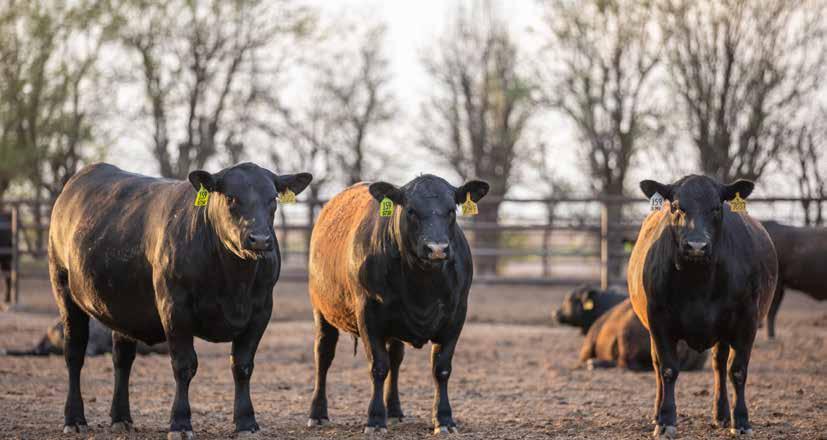
“Cattle with the most genetic potential are the ones we ‘ought to feed longer,” Bertelsen said. “If an additional three weeks on feed is the line between achieving a higher quality grade, those extra days will increase total value because we’re adding marbling, carcass weight and total dollars per head.”
Marbling has the biggest effect on the price per pound of a carcass on a grid, but ribeye size and backfat are the best indicators for muscling and leanness. For cow-calf producers, it’s a balance between carcass quality and maternal traits, Bertelsen said.
And that balance comes down to personal preference, genetics and the market.
“How long we feed them depends on the potential for the animal and market conditions, or premiums on the grid,” Bertelsen said. “If cattle producers are willing to change their mindset, there can be significant increases in total income through feeding to the proper endpoint and marketing on a value-based grid.”
Taking the time to fine-tune marbling potential affects the cattleman’s bottom line and consumer demand, he concluded.
VOLUME 10 • FEBRUARY 2023 Utah Cattleman SeedStoCk edition 34
from Lauren Mosher for Certified Angus Beef
Why marbling matters for beef demand, and how it all depends on production management at the ranch






www.UTAHCATTLEMEN.org 35 Utah Cattleman SeedStoCk edition Don’t skimp on the paper. Alex Tolbert Regional Manager 706.338.8733 atolbert@angus.org Austin Flynn Regional Manager 559.361.9701 aflynn@angus.org Look for the REGISTRATION NUMBER.. Bring the Power of Angus to your herd. Angus.org/PBA. SM
Angus Foundation hosts 150 Years of Angus Celebration During 2023 Cattle Congress

The Angus Foundation kicked off the year with a celebration commemorating 150 years since Angus cattle first The Angus Foundation kicked off the year with a celebration commemorating 150 years since Angus cattle first arrived in the United States. The 150 Years of Angus celebration was held January 6 in Oklahoma City during Cattlemen’s Congress and raised nearly $20,000 to support the Foundation’s mission. The event welcomed the Angus family for an evening of fellowship and featured refreshments, door prizes, auction items and the announcement of the 2023 Angus Herdsman of the Year.
In 1873, George Grant settled in Victoria, Kansas, with four Angus bulls from Scotland. In the following 150 years, the breed has built a legacy in the beef industry. The Angus Foundation works to ensure this legacy continues through its mission to support education, youth and research efforts for the breed. In support of the Foundation’s mission, the event featured several auction and door prize items. Past National Junior Angus Board foundation director Josh Jasper served as the auctioneer, and items sold included: a Live Oak Plantation Experience, an Angus History Sketch, a Custom Greeley Hat and a Two-Night Wine Country Getaway for Six.
“We had a wonderful evening celebrating this huge milestone for our breed with the Angus family,” said Jaclyn Boester, Angus Foundation executive director. “It’s through our donors’ generous support that we can ensure the legacy we’ve built for the last 150 years continues well into the future.”
The program concluded with the announcement of Jeff and Kathi Creamer of Lazy JB Angus, Colorado, as the 2023 Angus Herdsmen of the Year. The Creamers’ longstanding dedication to Angus cattle is a testament to the breed’s influence on cattlemen and their operations.
“We always feel fortunate to have an opportunity like this for our breeders to gather,” said Mark McCully, American Angus Association CEO. “This year it’s extra special as we commemorate such an important event in Angus history.”
The Foundation supports a diverse set of efforts focused on ensuring the Angus legacy remains strong. For more information about the Angus Foundation, visit www. AngusFoundation.org. arrived in the United States. The 150 Years of Angus celebration was held January 6 in Oklahoma City during Cattlemen’s Congress and raised nearly $20,000 to support the Foundation’s mission. The event welcomed the Angus family for an evening of fellowship and
featured refreshments, door prizes, auction items and the announcement of the 2023 Angus Herdsman of the Year.
In 1873, George Grant settled in Victoria, Kansas, with four Angus bulls from Scotland. In the following 150 years, the breed has built a legacy in the beef industry. The Angus Foundation works to ensure this legacy continues through its mission to support education, youth and research efforts for the breed. In support of the Foundation’s mission, the event featured several auction and door prize items. Past National Junior Angus Board foundation director Josh Jasper served as the auctioneer, and items sold included: a Live Oak Plantation Experience, an Angus History Sketch, a Custom Greeley Hat and a Two-Night Wine Country Getaway for Six.
“We had a wonderful evening celebrating this huge milestone for our breed with the Angus family,” said Jaclyn Boester, Angus Foundation executive director. “It’s through our donors’ generous support that we can ensure the legacy we’ve built for the last 150 years continues well into the future.”
VOLUME 10 • FEBRUARY 2023 Utah Cattleman SeedStoCk edition 36
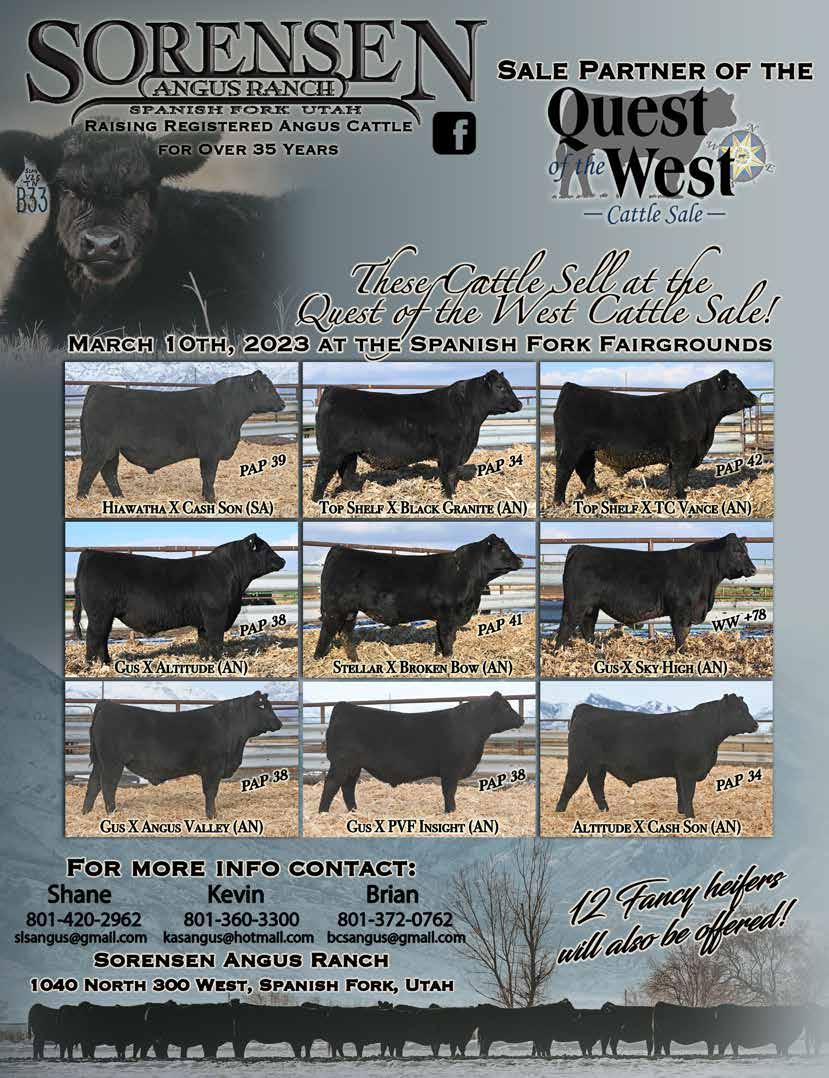
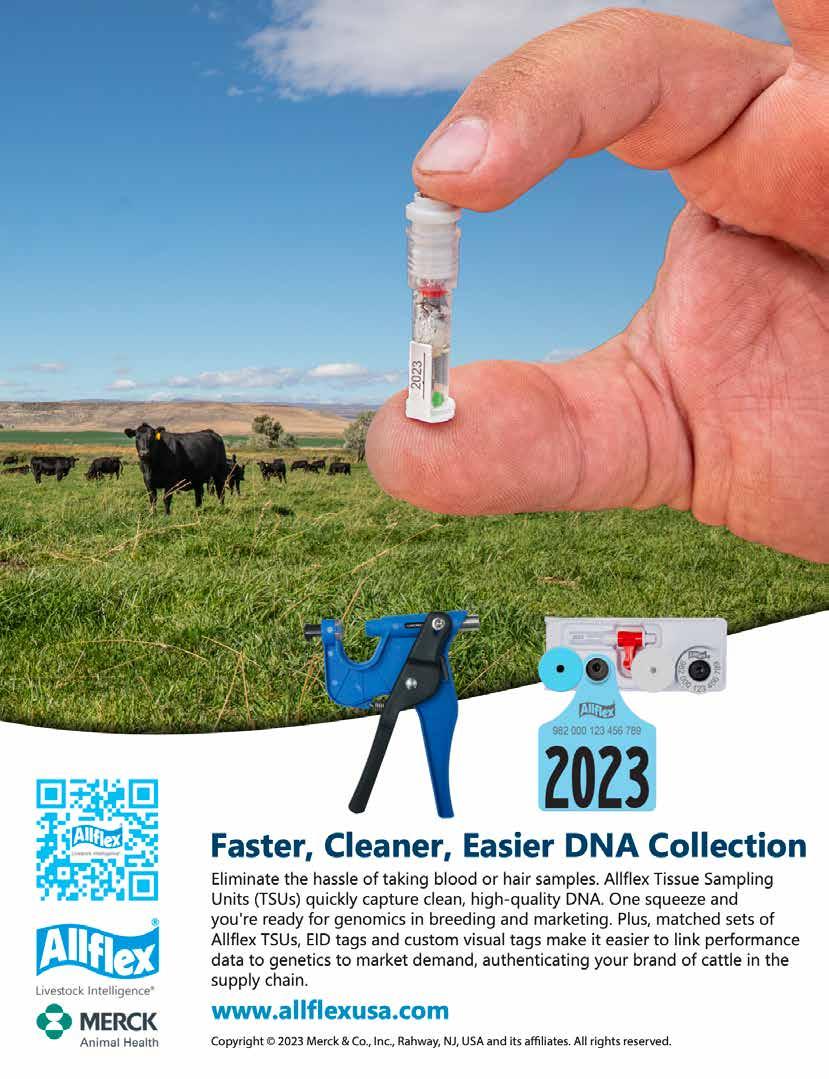









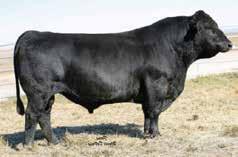
www.UTAHCATTLEMEN.org 39 Utah Cattleman SeedStoCk edition Th e 3rd Largest Angus Seedstock Herd in Utah Call for more information (801) 362-7150 Selling 70 Angus bulls this spring! P AUL M C P HERSON F AMILY 885 W 200 S • N EPHI , UT 84648 (801) 362-7150 M C P HERSON F ARMS @ MSN . COM McPherson Farms Low Birthweight • Performance • Carcass We are offering bulls sired by these leaders
Selecting Bulls that drive performance, carcass merit, structure, while not forgetting calving ease. PAP Tested Breeding Soundness Tested Volume Discounts Available Delivery Options Available Guaranteed Unsurpassed qual y! Building bulls that will meet all your demands! You’re Inv ed! 3.4.23 Double Down Horse and Bull Sale Selling 65 Bulls and 25 Horses March 4, 2023 Bar W Arena Nephi, UT Call for a catalog today! Selling McPherson Angus Bulls in the
Sitz Stellar 726D
Tehama Patriarch
Hooks Beacon
OPTIMISM ABOUNDS
Year ahead looking bright for beef producers
By Colin Woodall, chief executive officer, National Cattlemen’s Beef Association


One of the best parts of my job is the opportunity to participate in meetings and conventions put on by our state partners. NCBA is most effective when we have our ear to the ground listening to members, volunteer leaders and Checkoff investors. As I participate in these meetings, I have been amazed at the amount of optimism expressed by the attendees. Simply getting back to having meetings with preCOVID attendance numbers, or higher, speaks volumes about this optimism. I believe there is plenty to support continued optimism as we start the new year.
The plague of drought remains over many portions of the United States, even in areas that seem to be saturated with rain recently. The drought’s effect on the size of our domestic herd harkens back to our experience in the last big drought. Wait! Was I not just talking about optimism? Well, meteorologists are getting bolder in their forecasts that we will see a shift from a La Niña weather pattern to an El Niño one around the middle of the year. I realize it will not come soon enough for some of you, but to know that hope, and rain, is on the horizon helps with our optimism. We are already seeing snowpacks in many of the western mountain ranges that are at, or above, their normal percentages.
Many of the challenges we face are accompanied by a silver lining. Drought-induced herd liquidation means that the supply of cattle is dramatically different from a few years ago. Demand for beef,
however, remains high. The consumer is with us and wants to eat beef as illustrated by our experience in restaurants and retail grocery stores this past year. Beef prices went up, but the consumer kept buying. They kept buying because the high quality of our beef delivered an eating experience they wanted to enjoy time and again. Much of that demand is thanks to the work of the Beef Checkoff. Back in October, we utilized our role as a contractor to the Checkoff by working with Uber Eats and Sonic on a six-day cheeseburger promotion. Our work increased cheeseburger sales by 218 percent! When it comes to pure eating pleasure, we know we are the protein of choice, and our Checkoff-funded work keeps moving beef.
That demand is key because it is resulting in higher prices being paid for cattle. Economists and market analysts are telling us that the outlook is good for cattle prices in 2023. We need it, but the prices we are paying for fuel and production supplies are taking the shine off these increased prices. Once again, here is a place for optimism as there are signals that inflation could start to wane this year. That will help us get more out of improved cattle prices while giving the consumer even more money in their pocket for beef.
There is also reason to be optimistic in
...CONTINUED ON PAGE 42
VOLUME 10 • FEBRUARY 2023 Utah Cattleman SeedStoCk edition 40








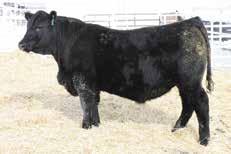











BULLS SELL: SEMEN-TESTED • PAP-TESTED • DNA-TESTED WITH GE EPDS • FREE DELIVERY Matt Macfarlane | 916-803-3113 (cell) E-mail: m3cattlemarketing@gmail.com www.m3cattlemarketing.com Lisonbee Angus Ranch Jim Lisonbee 212 S 1930 W, Roosevelt, UT 435-724-2318 Oldroyd Angus Steve Oldroyd 1220 S 2500 W, Vernal, UT 84078 435-828-5050 Angus Bull Sale Monday, March 20 Duchesne Co. Fairgrounds, Duchesne, UT, 1 PM ANGUS IN THE BASINPerformance-Tested Join sale hosts Lisonbee Angus and Oldroyd Angus for this offering of Superior Performance Genetics at the Centennial Center in Duchesne, UT at noon MST for lunch, follwed by the sale beginning at 1 PM. ACTIONEER: EDDIE BURKS 270-991-6378 AAA 20189036 CED BW WW YW MILK MRB RE $W $B $C +8 +1.4 +89 +165 +36 +.47 +10.6 +85 +183 +301 Deer Valley Growth Fund x Rito 9M25 of Rita 5F56 Pred Lisonbee Growth Fund 2145 AAA 20385730 CED BW WW YW MILK MRB RE $W $B $C +15 -1.7 +72 +139 +34 +.75 +.46 +80 +144 +272 Mill Brae Benchmark 9016 x Basin Payweight 1682 OAR Benchmark 402 AAA 20421728 CED BW WW YW MILK MRB RE $W $B $C +13 -.3 +71 +141 +32 +.89 +.9 +69 +158 +262 Tehama Patriarch F028 x Jindra Acclaim Lisonbee Troubadour 2211 AAA 20427907 CED BW WW YW MILK MRB RE $W $B $C +4 +3.5 +78 +121 +24 +.92 +.87 +74 +137 +274 Square B Atlantis 8060 x V A R Discovery 2240 OAR Atlantis 852 AAA 20421731 CED BW WW YW MILK MRB RE $W $B $C +7 +1.7 +66 +123 +23 +1.04 +.75 +61 +167 +298 Sterling Pacific 904 x Connealy Confidence Plus Lisonbee Pacific 2209 AAA 20382948 CED BW WW YW MILK MRB RE $W $B $C +9 -.5 +67 +108 +28 +.60 +.53 +72 +114 +226 OAR Recharge 287 x Connealy Consensus 7229 OAR Recharge 642 AAA 20421738 CED BW WW YW MILK MRB RE $W $B $C +18 -1.0 +79 +145 +33 +1.21 +1.16 +82 +215 +336 G A R Home Town x Sitz Upward 307R Lisonbee Hometown 2204 AAA 20427906 CED BW WW YW MILK MRB RE $W $B $C +4 +2.5 +82 +147 +23 +1.27 +.32 +73 +160 +291 Square B Atlantis 8060 x V A R Discovery 2240 OAR Atlantis S842 AAA 20421741 CED BW WW YW MILK MRB RE $W $B $C +6 +4.3 +97 +159 +33 +.97 +1.10 +89 +187 +307 Connealy Confidence Plus x V A R Discovery 2240 Lisbonbee Zander 2210 www.UTAHCATTLEMEN.org 41 Utah Cattleman SeedStoCk edition
...CONTINUED FROM PAGE 40
Washington, D.C. A Congress that has split control is one we can take advantage of. We expect that a Republican House of Representatives and a Democrat Senate results in a log jam on Capitol Hill. A log jam means that only legislation with support from both parties has a chance to get through. That protects us against bad legislative ideas. NCBA has friends in both parties, so we will press forward with our policy priorities, especially in the upcoming Farm Bill. Programs such as funding for the Environmental Quality Incentives Program (EQIP), the Foot and Mouth Disease (FMD) vaccine bank and USDA risk management tools have bipartisan support. While
it might be a big lift to get the Farm Bill done before it expires in September, our priorities will see a lot of support.
Optimism for the year will be on full display in just a few short weeks as we gather for the 2023 Cattle Industry Convention and NCBA Trade Show in New Orleans. It is not too late to register. In fact, unlike the price of everything else these days, the registration cost to attend convention did not go up. It has been the same price for five years. This is the premiere event for cattle producers where we get the chance to have some fun, learn a little, set the policy for the association and enjoy the cattle industry’s largest indoor trade show.
Each year brings a time for optimism and fresh starts. The outlook for 2023 will only help bolster our optimism. We are fortunate to be a part of such a great and noble profession. To care for our families, our cattle and the natural resources we steward is something we all take pride in. What we do matters. Thank you for your fortitude, persistence and commitment to producing the best tasting beef in the world.
2023 ESAP APPLICATIONS SOUGHT BY STEWARDSHIP ADVOCACY GROUPS
Applications are being accepted until March 10, 2023, for the National Cattlemen’s Beef Association 2023 Environmental Stewardship Award. Established in 1991, the Environmental Stewardship Award Program annually recognizes outstanding stewardship practices and conservation achievements of cattle producers across the nation.


“Cattle producers, as individuals and as an industry, are actively working to protect and improve the environment, because they know environmental stewardship and good business go hand-in-hand,” said NCBA President Don Schiefelbein. “A common trait among all ESAP winners is the desire to leave the land in better condition for future generations and inspire the next generation of land stewards.”
Any individual, group or organization is eligible to nominate one individual or business raising or feeding cattle. Individuals and families may not nominate themselves, although nominees may be involved in the preparation of the application. Past nominees are encouraged to resubmit applications; however, previous winners may not reapply.

Along with a typed application, one nomination letter and three letters of recommendation highlighting the nominee’s leadership in conservation are required. Nominees do not have to be members of NCBA but should support the objectives of their state and national organization.
Award winners are selected by a committee of representatives from universities, conservation
organizations as well as federal and state agencies. For guidance, the judges consider the management of water, wildlife, vegetation, air, and soil along with leadership abilities and the sustainability of the business.
Seven regional winners will be recognized at the 2024 Cattle Industry Convention in Orlando, Fla., in February 2024, and the national winner will be announced at the Celebration of America’s Land Stewards Event in Washington, D.C., in spring 2024. Travel and registration are provided by ESAP for winners.
The Environmental Stewardship Award Program is an initiative of the National Cattlemen’s Beef Association and the National Cattlemen’s Foundation, and is funded by Corteva Agriscience, McDonald’s and the Natural Resources Conservation Service of the U.S. Department of Agriculture along with a partnership with the U.S. Fish and Wildlife Service. For more information and to download the nomination packet, visit www.environmentalstewardship.org.
VOLUME 10 • FEBRUARY 2023 Utah Cattleman SeedStoCk edition 42
Buy
Bar T Bar bulls will build better cows!
A four-year-old Bar T Bar cow that is weaning her third calf with a 365 day calving interval and a near perfect udder. Her Zoetis Fertility EPD ranks her predicted lifetime calf production in the Top 1% of the industry. She epitomizes what it means to be a better cow!
It’s no wonder, that despite two of the worst drought years in Arizona history, Bar T Bar is the Number 1 breeder of Dams of Merit and Distinction in the Gelbvieh breed. Bar T Bar cows run under real world conditions. Bar T Bar bulls produce highly fertile, efficientsized cows that breed up and wean a high percentage of their own body weight. The March bull calf pictured weaned off his four-yearold dam at 639 pounds at 200 days of age.
Bar T Bar Bulls Popular Industry Bulls
YOU MAKE THE COMPARISON Cow Herd Profit ($Ranch)

Selected to improve cowherd profit with our unique $Ranch index –under real world conditions. The 2022 Bar T Bar bulls rank in the Top 17% of the industry or $Ranch and the top 19% for Fertility.
Selected for bigger growth and milk numbers under artificial seedstock conditions that result in cows that do not fit the environment.
Birth to Harvest Profit ($Profit)

Selected to balance the maternal requirements while building heavier calves with higher marbling. The 2022 Bar T Bar bulls rank in the top 5% of the industry for $Profit.
Industry average bulls are around $8,000 on $Profit. This is $90 per calf behind the average Bar T Bar 2022 bull. Average bulls lack maternal traits, feed efficiency, and high carcass quality.

Reduced Feed Intake and Feed Efficiency
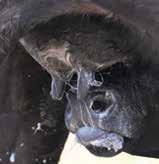
Bar T Bar has been measuring and selecting for reduced feed intake for a decade -- to help you lower your feed costs!
Most of the industry does not even measure this trait. The result is selection for inefficient cattle that eat too much!

Annual
Sale April 8, 2023 at 1:00 p.m. (PDT) Southern Balancers, Balancers, Gelbvieh & Angus Crater Ranch Headquarters · Winslow, AZ Bulls150Sell!
Bar T Bar Ranches
Bull
more
Herd Consultant Lee Leachman (970) 568-3983 Seedstock Marketing Bob & Judy Prosser (928) 380-5149 Kristin Hovey (970) 485-0974 info@bartbar.comm General Manager Phil George (620) 255-7124 phil.george@bartbar.com www.UTAHCATTLEMEN.org 43 Utah Cattleman SeedStoCk edition
a Bar T Bar Bull! Want to wean
calves?
COME IN TO YOUR LOCAL IFA COUNTRY STORE to check out our EXCLUSIVE line-up of REAL TUFF LIVESTOCK EQUIPMENT. Real Tuff offers a full line of livestock handling equipment including: cattle squeeze chutes, portable handling systems, maternity pens, bale feeders, loading ramps and much more!

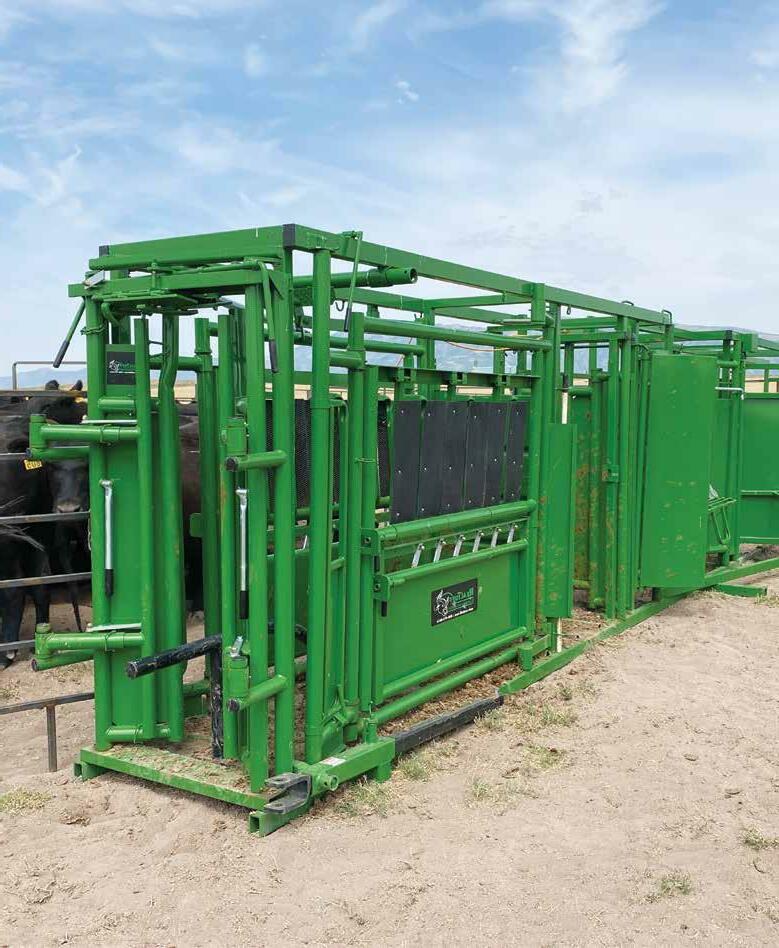
Let our feed and nutrition experts help you get the right feed and animal health program for your cattle.


See www.IFACountryStores.com for the location of your nearest IFA Country Store. VISIT YOUR LOCAL IFA

VOLUME 10 • FEBRUARY 2023 Utah Cattleman SeedStoCk edition 44
STORE
CATTLE
COUNTRY
FOR ALL YOUR
NEEDS!
ANNUAL PRODUCTION SALE / FRIDAY, MARCH 24, 2023
1:00 PM / AT THE RANCH NEAR BANCROFT, IDAHO
OFFERING 60 REGISTERED YEARLING BULLS






[Negative BVD-PI Tested, Performance Tested, Fertility Tested and PAP Tested]
30 COMMERCIAL YEARLING HEIFERS AND 1 DRAFT HORSE TEAM
PROFITABLE BALANCED BREEDING, SUPERIOR IN FUNCTION
PAP TESTED & PROVEN ANGUS / FLECKANGUS / FLECKVIEH

Dirk & Marnie Johnson / Cell: 208-390-6619 / Cell: 208-540-2697
2055 Ivins Road • Bancroft, ID 83217 / simroot57@yahoo.com
our
Call or email to join
mailing
Stay tuned
website for pictures & videos. www.verticaledgegenetics.com COLE CREEK 717 AUTO X22 / AAA# 19854860 Cole Creek 1322 Auto 717
DOUBLE
D
Shawacres
Sell VE
Other sires represented – Soo Line Motive, VE Jetfleck Elation, OCC Zamir, OCC Blueprint, VE-EDP Cut Right, Big Hills Value. IPU
list.
to
x Cole Creek Black Seal Angus Sons Sell
BAR
JUSTUS 269X / ASA# 2724264
Jahari x MFI Whistler FleckAngus Sons
MEYER FORTE 330F / AAA #19511944 / PAP 40 Papa Forte 1921 x Soo Line Motive Angus Sons Sell
SPRINGCREEK ADVANCE 118H / ASA# 3939153
Advance x LFE McDavid FleckAngus Sons Sell MOUNTAIN BOYZ GUERRERO / ASA# 3821011 / PAP 31 FGAF Guerrero x Anchor D Gunner Fullblood Fleckvieh and FleckAngus Sons Sell
www.UTAHCATTLEMEN.org 45 Utah Cattleman SeedStoCk edition
TCM TRI-STAR MR BRICK 50G / ASA# 3861729 / PAP 40 SRH Brick x Silverlake Zeeman FleckAngus Sons Sell
DEPARTEMENT ANNOUNCES NEW STATE VETERINARIAN








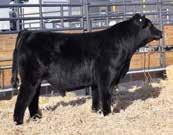




The Utah Department of Agriculture and Food (UDAF) is announcing the hiring of Daniel W. Christensen, DVM, as the new Utah state veterinarian, taking the place of Dean Taylor, DVM, who retired from UDAF on Dec. 30, 2022.

“We are excited to welcome Dr. Christensen to our department and are confident that he will serve the people of Utah well,” said Craig Buttars, UDAF Commissioner. “We would also like to extend our gratitude to Dr. Taylor for his dedication and service as the state veterinarian for the past three years, managing an unprecedented number of animal disease outbreaks and helping provide stability to animal health regulation.”
Christensen received his DVM from Kansas State University and has spent the last several years serving our nation working for the U.S. Army Medical Research Institute as well as at the Tripler Army Medical Center as the attending veterinarian. His background in infectious disease research and veterinary practices make him wellqualified to oversee the industry’s needs as state
veterinarian. Christensen will be joining UDAF in August of 2023.
During the interim, Amanda Price, DVM, will serve as the Utah state veterinarian. Price has been the assistant state veterinarian for the past three years and has been a vital part of UDAF. She has expertise in infectious diseases and animal health and has played a major role in helping contain the various outbreaks during her time at UDAF. Following Christensen’s start at UDAF, Price will continue to serve as the assistant state veterinarian.

VOLUME 10 • FEBRUARY 2023 Utah Cattleman SeedStoCk edition 46
Outcross Production Sale March 11, 2023 @ 1:00pm Producers in Salina, UT Selling yearlings, 2 year old bulls, and 1st calf heifer pairs Michael 435-469-0402 Jennifer 435-469-1850 Jentrey 435-262-1324 Cattle
Rigby
Company
Sire Nage Foundation
Nage Foundation 135H Sons will sell
Sire Maternal Made
Sire Nage Foundation
Sire MVH Evolution
















































































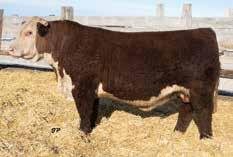
backed by generationscontinuing progress FEBRUARY 16, 2023 Thursday at 1:00 PM MST ANNUAL BULL SALE At the ranch in Blackfoot, ID Brad Ward 208-604-0235 Steve & Alicia Billman 208-681-4169 • 208-589-0870 673 N 825 W • Blackfoot, ID 83221 woodenshoefarms@gmail.com THE NEAL WARD FAMILY 208-684-5252 Coming Twos - Fall Yearlings - Spring Yearlings 65 Hereford and Angus Bulls Sell Group of Spring Open Heifers - Black and BWF WSF 4013 Executive J139 ET 3/10/21 - Polled - AHA 44311388 WSF 415S Mandate J35 ET 2/3/21 - Polled - AHA 44312084 WSF Royal J113 3/5/21 - Polled - AHA 44325394 WSF Blood Line J426 ET 9/22/21 - AAA 20515805 WSF 4155 Mandate J125 ET 3/6/21 - Polled - AHA 44312083 WSF Cartel J75 2/14/21 - Horned - AHA 44271386 Maternal Exce ence - Bred for Performance Capturing the F1 AdvantageHeterosis Pays Request our Salebook Now. 208-589-0870 www.UTAHCATTLEMEN.org 47 Utah Cattleman SeedStoCk edition
KEY ANTIBIOTICS TO BECOME PRESCRIPTION ONLY IN 2023
In June 2023, the Food and Drug Administration (FDA) Center for Veterinary Medicine (CVM) will implement their Guidance for Industry (GFI) #263 which instructs animal drug companies to voluntarily change labels so that antibiotics, which are medically important for human medicine and currently available over-the-counter for animals, will require a prescription from a licensed veterinarian for legal use.
GFI #263 builds upon FDA’s previous GFI #213, which brought 96% of all medically important antibiotic drugs used in water and feed for animals under veterinary oversight and limited their use to treatment, control, and prevention of specific diseases. GFI #263 addresses the remaining 4% of the medically important antimicrobial drugs not covered by GFI #213 and includes other dosage forms such as injectable and topical products.
Antibiotics are a powerful tool for both animal and human health. They can be used to prevent and treat infections caused by bacteria. However, when antibiotics are not used properly and responsibly, bacteria can become resistant or unresponsive. Antibiotics can continue to be effective for prevention, control, and treatment of disease through good stewardship and responsible use. GFI #263 is consistent with FDA, CVM’s five-year action plan for supporting antimicrobial stewardship in veterinary
settings, as published in 2018.

What do these changes mean for cattle producers in the United States? After June 2023, producers will need a valid veterinarian-client-patient relationship (VCPR) to obtain medically important antibiotics. All medically important antibiotics previously available over-the-counter will require a prescription from a veterinarian licensed in the state where the cattle reside.




Producers should identify a veterinarian as a partner in supporting the health of their cattle. By having a veterinarian who is familiar with you and your cattle, the veterinarian can be prepared to provide appropriate care in case of an illness or infection. Before illness occurs, set protocols for common conditions with your veterinarian so that you have access to the antibiotics needed to take swift action on your own and recognize when you need to involve your veterinarian. Illness and infections are never convenient. The best time to talk to your veterinarian is before animals are sick. Planning with your veterinarian ensures you can care for your cattle herd in a timely manner and when it matters most.

VOLUME 10 • FEBRUARY 2023 Utah Cattleman SeedStoCk edition 48 60 PERFORMANCE PAP TESTED ANGUS BULLS | 15 REGISTERED FEMALES KR INCREDIBLE SON MAGA SON FREY OUTLANDER SON JEFF, KATHI,
& BRITNEY CREAMER | WWW.LAZYJBANGUS.COM JEFF: 970.596.4571 // KATHI: 970.596.0045 // BRANDON: 970.596.4965 // BRITNEY: 970.596.2092 17270 6450 RD., MONTROSE, CO
BRANDON
22ND ANNUAL BULL SALE 1:00 PM | At The Ranch | MONTROSE, CO SATURDAY, MARCH 4, 2023
OVER 35 YEARS OF PAP TESTED BLOODLINES WITH BALANCED TRAITS, CALVING EASE SIRES THAT WILL WEAN HEAVIER, REAL WORLD, FASTER GROWING CALVES!
Join Us in Celebrating Our Centennial
In 2023, Sitz Angus is celebrating 100 years of serving cattleman with an unwavering commitment to providing Angus seedstock with an emphasis on maternal strength and producer profitability.

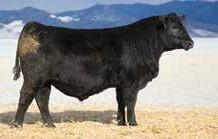


While pursuing the American dream, Will and Freida Sitz purchased their first registered Angus cattle in 1923. Four generations of the Sitz family, enduring challenges along the way, have grown and cultivated Sitz Angus into what it is today.



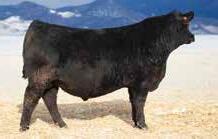
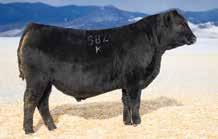
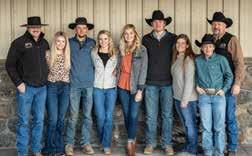
www.UTAHCATTLEMEN.org 49 Utah Cattleman SeedStoCk edition 21st Annual Spring Bull Sale March 8, 2023 12:30 PM (MST) At the Ranch, Dillon, MT 300+ Yearling, PAP-Tested Angus Bulls 200 Open Commercial Replacement Females
Jim Sitz (406) 683-5277 SitzAngus@gmail.com Bob Sitz (406) 581-6448 SitzAngusRanch@gmail.com Joe Jones (208) 670-2364 JoeJones@SitzAngus.com
SITZ Intuition 741K Reg: 20288133 S: SITZ Intuition MGS: Connealy Final Product CED 7 BW 1.3 WW 85 YW 141 SC 0.72 Milk 30 CW 61 Marb 0.54 REA 0.58 $M 76 $B 134 $C 250 SITZ Dynamic 582K Reg: 20303015 S: B A R Dynamic MGS: KM Broken Bow 002 CED 10 BW -0.1 WW 75 YW 139 SC 0.56 Milk 29 CW 48 Marb 1.24 REA 0.60 $M 71 $B 171 $C 293 SITZ Thedford 692K Reg: 20293029 S: Hoffman Thedford MGS: SITZ Stellar 726D CED 12 BW -0.8 WW 76 YW 131 SC 1.78 Milk 28 CW 70 Marb 0.81 REA 0.64 $M 86 $B 178 $C 317 SITZ Logo 644K Reg: 20288061 S: SITZ Logo 8148 MGS: BUBS Southern Charm AA31 CED 10 BW 0.4 WW 92 YW 161 SC 1.29 Milk 23 CW 71 Marb 0.51 REA 0.66 $M 75 $B 153 $C 273 SITZ Logo 539K Reg: 20303039 S: SITZ Logo 8148 MGS: SITZ Upward 9873 CED 8 BW 0.2 WW 76 YW 132 SC 0.88 Milk 31 CW 55 Marb 0.71 REA 0.57 $M 85 $B 143 $C 270 SITZ Dynamic 574K Reg: 20303045 S: B A R Dynamic MGS: Baldridge Next Step Y108 CED 7 BW 2.0 WW 80 YW 156 SC 1.55 Milk 33 CW 67 Marb 0.86 REA 0.82 $M 73 $B 180 $C 306 SITZ Intuition 726K Reg: 20288122 S: SITZ Intuition MGS: Mohnen Impressive 1093 CED 8 BW 0.1 WW 83 YW 148 SC -0.18 Milk 26 CW 68 Marb 0.84 REA 0.58 $M 90 $B 168 $C 308 SITZ JLS Logo 616K Reg: 20288037 S: SITZ Logo 8148 MGS: Connealy Dry Valley CED 5 BW 1.5 WW 89 YW 140 SC 1.68 Milk 25 CW 65 Marb 0.99 REA 0.58 $M 99 $B 158 $C 304 SITZ JLS Resilient 747K Reg: 20307957 S: SITZ Resilient 10208 MGS: Summitcrest Complete 1P55 CED 8 BW 0.1 WW 74 YW 125 SC 0.85 Milk 31 CW 47 Marb 0.88 REA 0.75 $M 112 $B 143 $C 297 SitzAngus.com
Selling sons of SITZ Accomplishment 720F, SITZ Incentive 704H, SITZ Intuition, SITZ Logo 8148, SITZ Resilient 10208, SITZ Stellar 726D, SITZ Verdict 744H, BAR Dynamic, Hoffman Thedford, Myers Fair-N-Square, Spring Cove Crossfire



























F OR M ORE I NFORMATION , C ONTACT : U TAH H EREFORD A SSOCIATION P RESIDENT • N ATHAN O LIVER - 435-660-0291 NHOLIVERHEREFORDS @ GMAIL . COM M ARCH 4 • 1 PM • P RODUCER ’ S L IVESTOCK • S ALINA , UT Selling 45 Head from these Progressive Hereford Breeders SIRED BY THESE BREED-LEADING BULLS! T HE U TAH H EREFORD A SSOCIATION BULL SALE 30 B ULLS • 15 F EMALES Come enjoy a great afternoon hosted by the Utah Hereford Association! Call Nathan Oliver at 435-660-0291! D ICK J ONES , O RANGEVILLE • C HRISTENSEN F AMILY C ATTLE , C ENTRAL V ALLEY • O LIVER B ROTHERS , L EVAN R ON AND D ERRICK R EED , L AS V EGAS • C ACHE C ATTLE C O ., W ELLSVILLE • K ENT H ASKELL , E LK R IDGE BHM Cuda Churchill Majestic NJW Historic Daybreak 9165 52nd Annual VOLUME 10 • FEBRUARY 2023 Utah Cattleman SeedStoCk edition 50





44TH ANNUAL MARCH 8, 2023 SALE BROADCAST ON LUNCH AT 12 NOON SALE AT 1:00 PM 5078 Rockland Hwy. Rockland, ID 83271 https://www.udycattle.com BULL SALE HEREFORD SIRE: Boyd 317 Blueprint 6153 Behm 100W Cuda 504C RED ANGUS SIRE: WFL Merlin 018A 5L Wrangler 1974-166E BLACK ANGUS SIRES: Tehama Tahoe B767 Baldridge Movin On G780 NJW 79Z Z311 ENDURE 173D Sterling Pacific 904 BIEBER CL STOCKMARKET E119 BW 4.0 WW 75 YW 128 MM 34 BW -5.1 WW 75 YW 126 MM 24 BW 1.8 WW 77 YW 138 MM 20 George 208-226-7857, cell 208-221-2277 James 208-221-1909 | jamesudy@hotmail.com Sale Location Nine miles south of Rockland, Idaho Sale Day Phones 208-221-1909 | 208-548-2277 Information online at: udycattle.com 130 BULLS | 60 YEARLING HEIFERS The Source for Quality Cattleman's Choice WEDNESDAY,
PROPOSED USDA TRACEABILITY RULE FOR CATTLE







On January 18, USDA announced the pre-publication of their proposal to amend animal disease traceability regulations, requiring electronic identification of certain classes of cattle and bison. The proposed rule would mandate the visible (both visually and electronically) use of official eartags for certain classes of cattle and bison moving across state lines. Authorities would utilize these eartags as a means of identification. Additionally, the proposal clarifies record requirements relating to cattle, mandating official identification device distribution records to be entered into a Tribal, State or Federal database available to USDA.

The proposed rule applies to the following classes of animals:
• All sexually intact cattle and bison over 18 months.
• All dairy cattle.
• All cattle or bison of any age used for rodeo or recreational events.

• All bison of any age used for shows or exhibitions.
How to get involved: USDA is accepting public comments on their proposed animal disease traceability regulations rule until March 20, 2023, at 11:59 p.m. Comments may be filed electronically by visiting the Federal Register Docket and entering “APHIS-2021-0020” in the search box.
Use of Electronic Identification Ear tags as Official Identification in Cattle and Bison, Federal Register - APHIS is proposing to amend the animal disease traceability regulations to require that ear tags applied on or after a date 6 months (180 days) after publication in the Federal Register of a final rule following this proposed rule be both visually and electronically readable in order to be recognized for use as official ear tags for interstate movement of cattle and bison covered under the regulations. We are also proposing to clarify certain record retention and record access requirements and revise some requirements pertaining to slaughter cattle. These proposed changes would enhance the ability of Tribal, State and Federal officials, private veterinarians and livestock producers to quickly respond to highimpact diseases currently existing in the United States, as well as foreign animal diseases that threaten the viability of the U.S. cattle and bison industries.
NCBA Statement on USDA Proposed Rule
NCBA President-Elect Todd Wilkinson, a South Dakota cattle producer and chairman of the NCBA traceability working group, today released the following statement regarding the USDA proposed rule on electronic identification for cattle moving interstate: “As USDA has worked toward a nationally significant animal disease traceability program, NCBA has remained engaged in the conversation with industry stakeholders and USDA to ensure the interests of cattle producers are represented and protected. It is critical that any program ultimately adopted by USDA allows for maximum flexibility and privacy. At the same
time, USDA must also minimize the costs for producers and any business disruptions to the industry”.
APHIS proposes to require electronic identification of cattle, AgriPulse - Ear tags on adult cattle moving across states lines would have to be both visually and electronically readable under a proposal issued by the Animal and Plant Health Inspection Service Wednesday. The proposed changes to animal disease traceability regulations also would require official records be entered into a tribal, state or federal database and available to APHIS. The proposed change would impact approximately 11 percet of the national population of 100 million cattle and bison that used nonelectronic ID ear tags on average in the last five years, according to the proposed changes. However, Bill Bullard, CEO of the cattle group R-CALF USA, told Agri-Pulse he believes USDA underestimated the cost estimates and number of animals impacted. Bullard said the agency previously estimated about 30 million cattle would be impacted by the 2013 final rule. He was not aware of how the agency lowered its estimates, which would also impact the total cost of implementing the changes.
VOLUME 10 • FEBRUARY 2023 Utah Cattleman SeedStoCk edition 52
TWO successful programs - ONE powerful offering.


Triangle J was the #1 ASA registration herd in Nebraska in 2021. Altenburg Super Baldy was the #1 ASA registration herd in Colorado in 2021. Triangle J has purchased the Altenburg herd in it’s entirety and is bringing the 2023 bull sale to you in Fort Collins, Colorado. Don’t miss this event.









































TRIANGLE J RANCH AND ALTENBURG SUPER BALDY SELECT Colorado Fort Collins, Colorado Centennial Livestock Auction MARCH 18, 2023 SATURDAY 1 PM MT TRIANGLE J RANCH Darby and Annette Line 35355 Arrow Rd., Miller, NE 68858 Phone: 308-457-2505 Cell: 308-627-5085 www.trianglejranch.com ALTENBURG SUPER BALDY Willie and Sharon Altenburg 570 E. County Rd. 64, Fort Collins, CO 80524 Cell: 970-481-2570 willie@rmi.net www.altenburgsuperbaldy.com Broadcasting Real-Time Auctions Bid Live Online
Black and Red Simmental and SimAngus™
SELLING 150 PAP-TESTED BULLS
K650 ASA# 4097725 3/4 SM TJ FROSTY 318E SON $API 123.3 $TI 78.7 610K ASA# 4065022 SimAngus™ TJ MAKERS MARK 215Y SON $API 137.4 $TI 86.9 1142K ASA# 4083498 PB SM SAS COPPERHEAD G354 SON $API 130.3 $TI 86.6 K703 ASA# 4028267 SimAngus™ HOOK`S EAGLE 6E SON $API 149.6 $TI 96.4 509K ASA# 4065109 SimAngus™ CLRS HOMELAND 327H SON $API 150.6 $TI 87.4 K712 ASA# 4028322 3/4 SM TJ 50K 485H SON $API 145.8 $TI 82.6 www.UTAHCATTLEMEN.org 53 Utah Cattleman SeedStoCk edition
NET VERSUS GROSS in Heterosis dividends
Human nature often leads us to focus on outcomes in terms of the most, the highest or the fastest — the maximum — while discounting or ignoring the relative cost of inputs. Consider the extraordinary gains U.S. cattle producers have made in terms of average carcass quality over the past two decades. While it has been a boon for consumer beef demand, various data suggests part of the cost has been reproduction and production efficiency. Key measures of ranch profitability, like pounds of calf weaned per cow exposed, have remained static or declined. Logic says part of the reason is increased straightbreeding focused on the end product and decreased heterosis from crossbreeding. Heterosis increases output at less cost, especially when it comes to the least heritable traits, such as fertility.
Various research projects conducted by the American Hereford Association (AHA) underscore and mirror the economic advantages of direct and maternal heterosis documented by decades of industry research.

Direct heterosis increases performance of the crossbred calf relative to the average of the straightbred parental breeds, according to the U.S. Meat Animal Research Center (USMARC).
• Survival to weaning (+1.9%)
• Weaning weight (+3.9%)
• Post-weaning gain (+2.6%)
• Yearling weight (+3.8%)
• Feed conversion (+2.2%)
Maternal heterosis increases performance of the crossbred cow relative to the average of straightbred females of the parental breeds.
• Calving rate (+3.7%)
• Weaning weight (+3.8%)
• Longevity (+38%)
• Number of calves (+17%)
• Cumulative weaning weight (+25.3%)
The value of maternal heterosis is most visible in the increased number of calves (lifetime), cow longevity and cumulative weaning weight (lifetime). Advantages associated with heterosis can be magnified based on the inherent strengths of the breed components in the crossbreeding plan, as well as the complementarity between the breeds.
Hereford heterosis has more punch Hereford genetics are often favored in crossbreeding for a couple of realworld reasons.
First are the inherent Hereford strengths of docility, fertility, feed efficiency in the feedlot and on pasture, longevity and production efficiency. Another reason Hereford genetics are commonly favored is the fact that they are the least related to any other Bos Taurus breed — documented by USMARC — which means they offer more heterotic impact.

Most recently, researchers at Oklahoma State
...CONTINUED ON PAGE 56
VOLUME 10 • FEBRUARY 2023 Utah Cattleman SeedStoCk edition 54
from the American Hereford Association
Herefords are known as the efficiency experts for a reason. Herefords boost pregnancy rates by 7% and add $30 per head in feedyard profitability in a crossbreeding system. And Hereford genetics bring unrivaled hybrid vigor, longevity and disposition.

MORE POUNDS. MORE CALVES. MORE PROFIT. WHOA. Hereford.org
816-842-3757 Come home to Hereford.
|
University (OSU) conducted a multi-year study of pasture cow feed efficiency (Table 1). Compared to straightbred black Angus cows, Hereford-sired black baldy females consumed 2 pounds less modest-quality pasture forage per day. That’s about 725 pounds less per cow over the course of a year — about an acre less per year of the pasture in the study. Plus, the black baldy females maintained a 0.5 higher body condition score throughout th research. These advantages translate to at least $50 of savings in annual feed costs per black baldy female.
Research in real-world production settings consistently documents the advantages of breeding Hereford bulls to straightbred and high-percentage black Angus cows to produce Hereford-sired black baldies.
For instance, heterosis studies conducted by the AHA at Harris Ranch in California and Circle A Ranch in Missouri document superior performance of black baldy calves, compared to their straightbred black Angus counterparts. In these studies, baldy calves consistently weighed 15-20 pounds more at weaning. Black baldy females retained as replacements had a 7 percent higher pregnancy rate than their straightbred black Angus peers. Apply these advantages to a 1,000-
head black Angus commercial cow herd and Hereford genetics can generate nearly $149,000 in additional revenue after just four years. This is due to the fact you are getting more females bred, which gives you more pounds to sell.
Keep in mind, the example offered in the tables disregards the savings in cow depreciation cost that comes with the ability to keep cows productive longer and flatten the herd age curve.

Previous and current AHA research projects compared Hereford-sired black baldy calves and breeding females to straightbred black Angus peers. Experience and logic say the results are similar for Hereford-sired red baldies and tiger-stripes.
Build back with more heterosis Persistent, widespread drought likely cleaved about 2.5 million beef cows from the U.S. cow herd between the most recent peak number in 2019 and the beginning of this year. That’s assuming the beef cow inventory was 3 percent less year over year when 2023 began. When the USDA releases numbers at the end of January, odds favor the percentage of decline being even higher.
That means individual producers and the collective industry have the opportunity to add lots more heterosis to the nation’s herd. In other words, there’s plenty of opportunity to increase net revenue potential.

VOLUME 10 • FEBRUARY 2023 Utah Cattleman SeedStoCk edition 56 ...CONTINUED FROM PAGE 54
C 1311 GENESIS 2135 ET
One of three full sibs from a tremendous flush. The only full sister was our record selling female in our fall sale at $195,000. Both of the brothers are definite herd bull prospects and will be in our 2023 Denver Pen of 3. They combine the show ring look with performance and additional pigment. 1311 seems to never miss and has produced 1.2 million in progeny sales thus far. 2135 has great EPD and Index values being in the top 10% in nine economically important traits.
C CUDA BELLE 2111
A heifers first calf with a WWR of 118. Another bull with an impeccable set of numbers being in the top 20% for 15 economically important traits and indexes. Extra pigment and big bodied. Sire “Barracuda” was sold to ABS.
1311 GENESIS 2105


One of three full sibs from a tremendous flush. The only full sister was our record selling female in our fall sale at $195,000. Both of the brothers are definite herd bull prospects and will be in our 2023 Denver Pen of Three. They combine the show ring look with performance and additional pigment. 1311 seems to never miss and has produced 1.2 million in progeny sales thus far. 2105 has great EPD and Index values being in the top 3% for 10 traits.
LOT
These horned Belle Heir sons are right for the industry as they are great in structure and muscle mass. They are also very important for the industry as they can add so much to the carcass quality with lots of growth while still maintaining top maternal traits in the cowherd.
1311 ENDURE 2124
A definite pen bull for Denver 2023. He is by the ever popular Endure and the 1311 donor that is a full sister to Miles McKee and has produced over 1.2 million in progeny sales. He is a big bodied bull with extra red throughout. In the top 5% for 11 economically important EPD’s and Indexes.
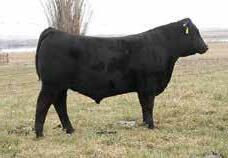


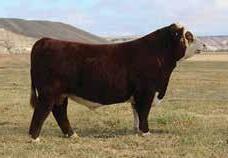


One of three full brothers by Real Deal and the popular D83 donor dam. They all have a super set of balanced EPD’s and have excellent pigment. Two full sisters were a highlight in our fall sale averaging $13,250. This bull was named calf champion in Reno and will be shown in Oklahoma City and Denver.
C 4297 VALIDATED 2132 ET








If you need to increase carcass value in your feeder calves tie to these Validated sons. They are especially strong for marbling. Extremely dark red, red to the ground with great pigment with a long level hip and wide topped.
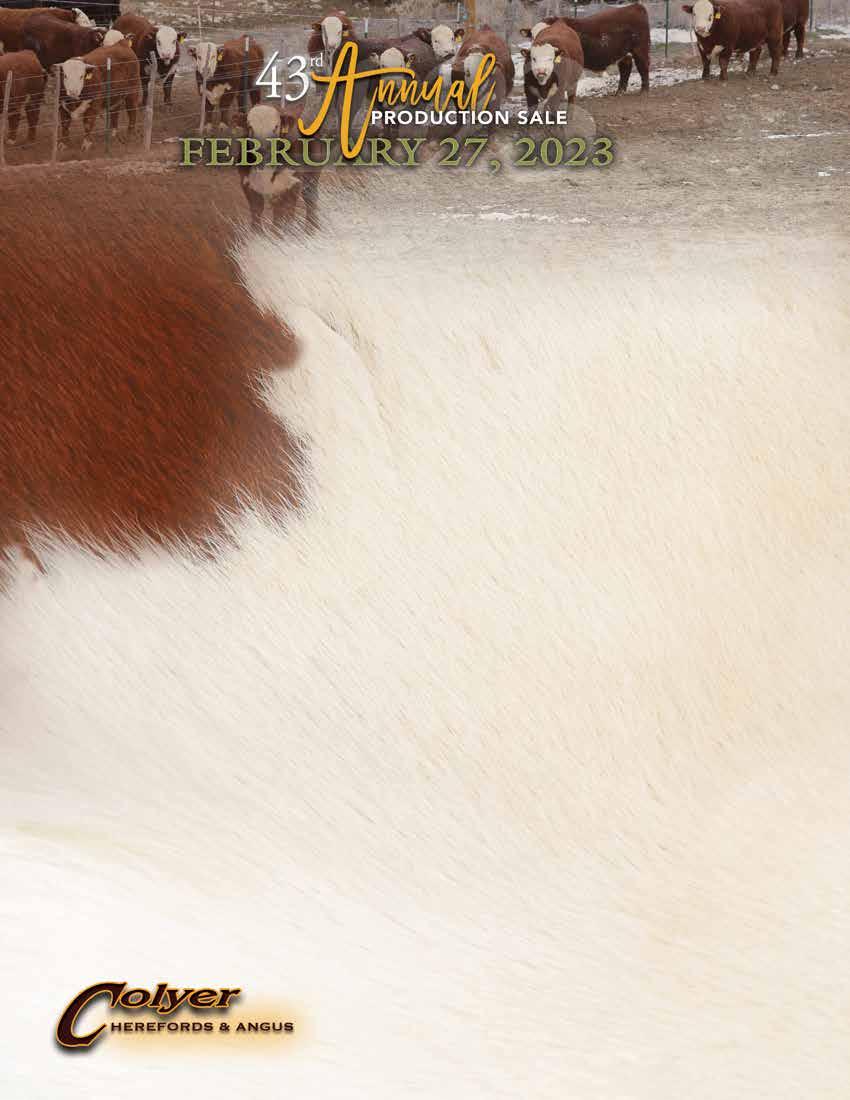
C TAHOE 2015
Great built son of Tahoe that packs all the bells and whistles along when it comes top carcass values. His added length of body and stride is a bonus for ranchers who need a bull that can travel big country.



C 8007 ALTERNATIVE 2149 ET
One of two flush brothers to sell out of a great Yeti donor, 8007. This son of Alternative is a phenotypic standout with figures that rank him among the elite. Maternal power and carcass combination.
Guy, Sherry and Katie Colyer, 208.845.2313 Kyle, 208.250.3924 • Guy cell: 208.599.0340 guy@hereford.com • Fax: 208.845.2314 www.hereford.com ~ OFFERING 250 BULLS & 45 FEMALES ~ Horned Hereford | Polled Hereford | Angus Two-Year-Olds, Senior Yearlings and Yearlings Sale broadcast live on ... 12:30 P.M. MST ~ AT THE RANCH, BRUNEAU, IDAHO
C D83 REAL DEAL 2094 ET CED BW WW YW MM REA MARB CHB 4.6 3.7 61 98 34 0.34 0.14 125 AHA 44360500
39
CED BW WW YW MM REA MARB CHB 1.4 3.7 60 98 34 0.73 0.15 146 AHA 44359795
C BELLE HEIR 2100
LOT 42
C
ET CED BW WW YW MM REA MARB CHB 2.8 3.5 72 115 38 0.94 0.27 164 AHA 44359800 LOT 45
CED BW WW YW MM REA MARB CHB 8.6 0.3 67 105 44 0.63 0.24 144 AHA 44359805
LOT 46
ET CED BW WW YW MM REA MARB CHB 1.7 4.8 68 113 33 1.03 0.13 157 AHA 44365326 LOT 55
C
CED BW WW YW MM REA MARB CHB 5.2 3.4 54 92 29 0.61 0.60 159 AHA 44359824
LOT 59
CED BW WW YW MM REA MARB CHB -1.4 4.5 69 107 34 0.61 0.22 145 AHA 44359827
LOT 61
BW WW YW SC CEM MILK $W $F $G $B $C 0.3 65 114 0.31 9 38 77 76 56 132 235 AAA 20365948
LOT 161
BW WW YW SC CEM MILK $W $F $G $B $C 05 78 142 0.66 14 14 58 115 60 175 272 AAA 20366060
210
LOT
CHOOSING THE RIGHT SELECTION TOOLS BASED ON YOUR OPERATION’S GOALS
from the American Gelbvieh Association
In addition to the benefits offered by crossbreeding, Gelbvieh and Balancer cattle offer breed advantages that make them logical for meeting the production goals and improving profitability of commercial farms and ranches. Long known for their value in crossbreeding systems, Gelbvieh sires add pounds and carcass value and their crossbred daughters will have longevity, fertility and maternal ability in the cowherd.
With the American Gelbvieh Association’s (AGA) participation with other world-wide beef breeds in International Genetic Solution’s genetic evaluation, it has never been easier to select Gelbvieh genetics to meet the needs of your operation. In fact, looking at a catalog on sale day or perusing a semen catalog can be overwhelming due to the amount of data contained and the number of traits reported. So, before you ever get started on your search for new genetics, taking the time to reflect on the goals of your operation and to establish breeding objectives is crucially important. What traits are important to you? Do you really need to maximize? Or is a more moderate amount of performance for that trait more suitable for your environment?
Once you have established your breeding objective, then it is important to understand the information available to help you meet that objective. Often, sale catalogs have not only expected progeny differences (EPDs) and indexes, but also performance data and ratios and sometimes even stand-alone DNA testing results. While an animal’s actual performance data (weights, for example) may be fun for coffee-shop bragging rights, those numbers only tell us an animal’s performance for a trait without taking into account the environment, which makes them fairly uninformative for genetic selection purposes. Even ratios, which do help compare animals within a single contemporary group do not allow us to compare animals outside of that specific
group in that specific year. EPDs use much more information, including the animal’s own performance, pedigree data, progeny data and in some cases even genomic markers. Contemporary grouping also allows us to use EPDs to compare animals across years and herds. EPDs are our best estimate of an animal’s genetic worth as a parent and allow you to compare bulls based on their anticipated progeny performance for various traits of interest.
EPDs can be used to increase, decrease or optimize performance of a certain trait. You’ll find the percentile rank tables for various classes of animals on the AGA website at Gelbvieh.org. Remember, top 1 percent might be good for bragging, but does it meet your breeding objective? There are many EPDs to look at – and usually, selection for more than one trait that will be needed to meet the goals of your organization. With so many traits to look at, choosing the correct traits to put emphasis on while still practicing multi-trait selection can be challenging. This is where use of a selection index may be useful. Selection indexes, in general, are used to simplify genetic selection decisions by incorporating multiple traits into one number, allowing for simultaneous change in those traits through the use of one easily interpreted number reported in dollars. Typically, these indexes take into account the outputs considered on the revenue side of the profit equation, but they also consider the input, or expense, side associated with the production phase of interest. Indexes incorporate both genetic components (EPDs) and economic terms relevant to feedlot performance, carcass merit and cow-calf production.
However, before using any selection index in your breeding decisions, it’s really important to understand the traits underlying the index. If the trait EPDs are used in the computation of the index are not those that are important for the production goals and needs of your ranch, using them as a selection tool may not yield the desired result.

VOLUME 10 • FEBRUARY 2023 Utah Cattleman SeedStoCk edition 58
THE
OF CHOICE
SMART. RELIABLE. PROFITABLE. GELBVIEH.ORG
Gelbvieh and Balancer® genetics offer more pounds of calf weaned, added fertility, and greater cow herd longevity.

CONTINENTAL BREED GELBVIEH & BALANCER ® www.UTAHCATTLEMEN.org 59 Utah Cattleman SeedStoCk edition
Ways to Reduce Winter Hay Waste for Cattle
 from Purina Animal Nutrition
from Purina Animal Nutrition

Feed expenses are one of the highest variable costs for cattle operations annually. The cost of hay to get your herd through the winter months accounts for a significant percentage of those expenses and can impact your profitability. Research has shown that more than 50 percent of hay may be wasted by poor storage methods or inefficient feeding practices.
Let’s consider what storage and feeding adjustments you can make to help reduce hay waste.
Hay storage
Improving your hay storage strategy is an investment that can pay off in the long run. Storing hay uncovered on bare ground is the cheapest and easiest method, but comes at a cost. This storage method can lead to almost 30 percent dry matter loss in six months.
One way to reduce hay loss is to add a barrier between hay and the bare ground, reducing the moisture that seeps in over time and causes hay quality to diminish. A layer of gravel under bales or placing hay on pallets allows air to circulate and can reduce dry matter loss by two-thirds or more.1
Provide further protection by covering bales. One advantage to covering bales is they can be stacked, requiring less ground cover. The most economical cover is a tarp, but individual wraps and a roof structure are good options as well. Research shows that implementing a cover to your hay storage strategy can keep dry matter losses to below 15 percent after six months of storage.1
Storage buildings provide the best protection from hay loss during storage at an average of 5 percent dry matter loss, but they also have a higher investment cost and may be less convenient.
Feeding hay
Much of the waste that comes with feeding hay results from hay getting trampled or
soiled. Limiting the amount of hay fed at one time can help limit waste. Research demonstrates that adjusting from feeding a four-day supply to a one-day supply can reduce waste by around 20 percent.
Utilizing a feeder has also been shown to reduce hay waste by as much as 45 percent. However, feeders may also increase the labor required for feeding hay and may not always be practical. Feeding on gravel or concrete can provide a good alternative to help reduce issues. If feeding on the ground, choose a welldrained area. And when feeding on a pasture, move hay feeding areas daily to reduce soil compaction and buildup and spread out the manure and nutrients.
Other hay feeding options include unrolling bales or grinding hay. An advantage to this method is the ability to move feeding areas around the pasture to ensure a more even distribution of manure and nutrients. However, these feeding systems are more practical when feeding daily as they are labor intensive and can result in high losses if too much hay is fed at once.
Bridge the gap
A final way to ensure you’re getting the most use out of your winter forages is to utilize supplemen ts from companies like Purina to fill the forage gap. Supplements can help optimize digestibility and intake of low-quality forages. Purina Rangeland protein tubs provide readily available energy to stimulate rumen fermentation to help cattle extract more energy from forages. Implementing these supplements into your nutrition program can help get the most out of your forage investment and assist your herd in maintaining optimal condition, even with lower quality forage.
VOLUME 10 • FEBRUARY 2023 Utah Cattleman SeedStoCk edition 60
March 7,

• Pictures and Videos will be available for viewing NOW
• Bulls are available to view at the ranch anytime
• Auction Format - open bidding from 7 am to 6 pm; followed by a horse-race style finish Bulls will be semen/trich tested, and evaluated for soundness



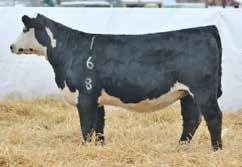






• All bulls selling have been PAP tested
where busy cattlemen go to buy bulls!

ALL SALE CATTLE ARE: • RAISED FROM 6,000 - 8,000 FEET • SLOWLY DEVELOPED FOR STRUCTURAL INTEGRITY • TESTED AND READY TO WORK • FULLY GUARANTEED
PAP TESTED
BACKED BY 45 YEARS OF AI MARK & BECKY IPSEN PO BOX 68 | DINGLE , ID 83233 208-681-4794 208-681-4793 IPSENCATTLECOMPANY@ YAHOO. COM Lot 35 Lot 1 Lot 5 Lot 7 Lot 46 Lot 47 Lot 18 Lot 29
2023
•
•
•
•
•
•
• Please JOIN US for a Tri-Tip LUNCH ON SALE DAY! NEW Sale Closing Time!
• 100% SATISFACTION GUARANTEED
STATE OF THE STATE
Governor addresses youth and state’s water woes
In this year’s State of the State address, delivered Jan. 19 by Utah Gov. Spencer Cox, was a bit unconventional but was overall well-recieved. Cox encouraged to bring their children, grandchildren, nieces and nephews to join them for the event on the House floor.
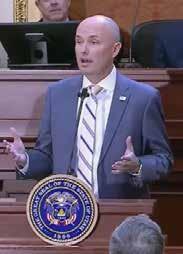
Rurally-raised Cox and first lady Abby Cox were likewise accompanied by their youngest daughter, Emma Kate. The focus of the speech emphasized hope for the future and letting “faith not fear” guide them in their “pursuit of happiness” while navigating the state’s most pressing issues.
“To anyone who believes that the next generation in Utah will be worse off than their parents, my message is simple,” Cox said. “Not now. And not on our watch.”
Gov. Spencer Cox’s message pointed to recent polling that demonstrates, “more young people than ever before believe that, for the first time in our nation’s history, their generation will be worse off than their parents.”
He emphasized that many Utahns seem to be accepting that any efforts to create a better world are useless.
Speaking directly to the youth in attendance, Cox said, “Your moms and dads and grandparents seated next to you tonight were once young, too,” and worried about “a lot of things you can probably relate to.” He described hiding under desks to “practice for the nuclear bombs we were sure Communist Russia was sending our way.”
He said the previous generation was worried about “overpopulation, acid rain,” and even the Great Salt Lake flooding and destroying towns in 1983. Most of all, he said, they worried about “something known as the hole in the ozone layer,” which at the time was described as an “environmental disaster (that) would be especially dire in Utah.”
“If you haven’t heard much about the hole in the ozone lately, that’s probably because we’ve been busy fixing it, and good news doesn’t seem to sell as well as gloom and doom,” Cox said. “The world came together with the United States leading the way, and our planet is restoring that critical part of our atmosphere.”
All these problems have a common root, Cox said. “Fear. And Fear destroys happiness.”
So Cox said he had a message for “every young person grappling with fear,” whether it be fear of finding a successful career, fear of affording a home, or “fear of a planet in peril.”
“The future of our state is not written in the stars. It is for us, the free men and women of Utah, to dictate our
destiny,” Cox said.
He then encouraged Utah’s youth to “turn your fears” into “faith.”
“I don’t mean faith in the religious sense, although I am a proponent of that, too,” Cox said. “I mean faith in good things to come. Faith in us and faith in yourselves. Faith in our capacity and commitment to solve today’s hard problems together. Faith in a future worth being excited about.”
Agriculture Roots
In true Cox fashion, the Governor then focused his speech on his farming upbringing in addressing one of the most current, ongoing and pressing issues facing Utah and other western states: The drought and supply of water for the future.
Despite the well-recieved wet winter, Cox said, “We find ourselves in the greatest drought in the western United States in over 1,200 years. Earlier this month, a report predicted that in just five short years the Great Salt Lake will completely disappear. We are not going to let that happen.”
Cox noted that last year lawmakers passed 12 “major water conservation bills and $500 million in new funding.” More importantly, Cox said Utahns upped their conservation efforts.
Cox also recounted the summer of 2021 when he asked residents to pray for rain. Despite getting “mocked both at home and abroad” for the prayers, he said he makes no excuses for his beliefs.
“I am grateful — and I thank God every night — for the impressive amounts of snow we have received so far this season....the Great Salt Lake has already risen more than it did all last year,” Cox said.
He asked again “that we join together to ask for relief from this drought.” He said he believes “God can fill the lake. But if not, then we must.”
So this year, Cox said state leaders “have to maintain a continued focus on water conservation and agriculture optimization,” and he noted he’s proposed another $500 million in water conservation investment, as well as new policy changes to reduce use.
He also called on Utahns to “look beyond those that would demonize our farmers. Our farmers and ranchers are the backbone of our nation and state...I promise they will be a huge part of the solution, just like you and me. Let’s continue to help them modernize their operations so that we can both save water and increase food production.”
VOLUME 10 • FEBRUARY 2023 Utah Cattleman SeedStoCk edition 62

SIGNS It
s Time for a New Sire
by Macey Mueller for the Red Angus Association of America
Good bull can be a big investment. After spending significant time and expense to find just the right fit to complement your cow herd genetics and meet production goals, it can be a tough call to sell or retire that sire. Three industry professionals weight in with their tips and strategies for determining whether a bull is worthy of another breeding season.
1. HE FAILS A BREEDING SOUNDNESS EXAM PRIOR TO TURNOUT
It can be difficult for a bull to effectively do his job if he is not in top physical condition. Lindsay Waechter-Mean, Ph.D., Nebraska Extension beef systems educator and licensed veterinarian, said a BSE is “cheap insurance” that can provide valuable information about a bull’s potential breeding ability.
“It doesn’t cost you much to figure out a whole lot of information on your bull,” she said. “the physical exam looks at his feet, legs, eyes and scrotum and measures how well he can extend and the semen sample looks at motility and morphology – how well the sperm are swimming and if the proper amounts are being produced.”
While structural issues or eye problems are typically easy to cull for, Waechter-Mean said if sperm sample is deemed unsatisfactory or a sample cannot be collected, she encourages producers to retest the bull 30 to 60 later.
“It doesn’t have to be one and done when it comes to semen testing, but if a bull is not satisfactory at turnout, I recommend using a replacement until you retest,” she said. “Timing can make a difference because the process of making sperm actually takes 60 days, so if a bull suffers an insult like frostbite 30 days prior to the BSE, it might not be evident in the sperm sample. It really helps to test bulls right before turnout to get the best idea of their potential performance.”
Bruce Risa is a Red Angus seedstock and commercial producer from northeast Montana, where

winter low temperatures can linger in the single digits and temporarily impair sperm cell production.
“Our winters can be pretty tough,” he said. “A lot of guys around here will do BSEs in March and have a bull fail, but give that animal two more months on green grass and all of a sudden he’ll pass the exam.”
Risa has his bulls tested right before turnout on June 24 but admits replacement is not easy that late in the year.
“If a bull is not sound when it’s time to turn out, we don’t take any chances,” he said. “It can be hard to find a good bull for sale that late in the season, so we try to keep and older bull on hand for those circumstances.”
Risa added that he always retests new bulls regardless of their results at the time of purchase.
“A lot can happen to bulls, especially young bulls, in the short amount of time between sale season and turnout,” he said. “Our theory is just to do it right before they’re ready to go to work, so we know for sure they are sound.”
2. YOUR CALVES ARE MISSING THE MARK
Lindsay Upperman, Ph.D., Red Angus Association of America’s beef cattle geneticist, said genetics are
...CONTINUED ON PAGE 66
VOLUME 10 • FEBRUARY 2023 Utah Cattleman SeedStoCk edition 64
6
’

always improving and investing in a younger bull is the fastest and most effective way to make genetic progress and improve profit potential in the next calf crop.
“There is something to be said for proven bulls, but if you are taking your calves to market and they’re just not stacking up against others, it may be time to find a bull with stronger traits or more genetics progress,” she said. “Some producers will try to make nutritional changes to make up pounds, but we’ve seen recently how drought conditions can affect the nutritional resources we have available from year to year so that’s not always a cost-effective approach.”
“Genetic progress is the one thing you can always advance if you’re willing to make that investment.”
3. HE’S GOT A BAD ATTITUDE
Disposition is often near the top of any producer’s list and Risa is no exception.
“If something shows temperament to us, we remove it immediately,” he said. “In my experience, if he shows poor temperament as a yearling, he’s going to carry that all through his life. At least as a yearling you can handle him, but if you have a 4-year-old bull with a bad attitude, he can make things pretty miserable when it’s time to pull him from the pasture or expecting him to get along with other bulls.”
Waechter-Mead said disposition is No. 1 on her list as well, especially when it comes to heifer bulls.
“Heifers have a tendency to be kind of flighty and nervous, so if you don’t want a bull that’s going to be too aggressive and not able to do his job,” she added.
4. YOUR PRODUCTION GOALS CHANGE
If you have traditionally sold your calves at weaning, your bull selection may have been heavily influenced by Birth Weight or Weaning Weight EPDs, but if you have made the decision to background or even retain ownership through the feed yard, you make need to hone in on bulls with higher Yearling Weight or carcass values. Likewise, if you have historically been a terminal operation but are now planning to retain replacement heifers, you may need to look for bulls with stronger maternal traits.
Upperman said one of the easiest ways to select for multiple traits and best estimate a sire’s overall impact is to use one of RAAA’s indexes, which combine EPDs for several traits into a single economic value.
• HerdBuilder – ideal for selecting bulls to develop profitable replacement females and maximize the value of non-replacement marketed progeny.
• GridMaster – used to maximize the profitability of feeders in the feed yard and on the rail.
• ProS – a balanced approach that covers economically relevant traits across all aspects of the beef supply chain from conception to carcass.
“To maximize profit potential, you really need to consider quite a few selection traits in relation to each other,” Upperman said. “Indexes are valuable tools to make those comparisons in light of their economic impact.”
5. HE’S GETTING TOO BIG OR HE CAN’T MAINTAIN CONDITION
While there is not a specific age limit on a bull’s ability to breed, most make it four or five years before they either get too large or develop health issues causing them to decline in condition.
Waechter-Mead said optimal bull size should be relative to the size of the cows. Heifer bulls often need to be replaced sooner than other herd bulls because they can get too large to safely service smaller females.
On the other hand, some bulls have a hard time regaining condition after a breeding season, where it’s common for a bull to lose anywhere from 100 to 400 pounds.
“Most bulls are working their tails off for 60 days, so it’s not unusual to see them decline in condition, “ Waechter-Mead said. “But if they have ample nutrition available, they should be bouncing back to a body condition score 5 or 6 fairly easily without requiring extreme supplementation.”
6. YOU ADD FEMALES TO THE HERD
Even the best bull has his limits, so if you recently expanded your herd, you make need to invest in an additional bull to improve the chances of all cows being serviced.
Waechter-Mead said a good rule of thumb is that a bull can typically cover as many females as his age in months, up to 30 months.
If he’s a 16-month-old bull, then he could probably cover 16 head,” she said “Once he gets past 30 months, I usually say one bull for 30 cows, depending on the size, terrain and condition of a pasture. If he has to track a long way up in the hills or has limited access to quality nutrition, you’re probably going to need to have an extra one.
VOLUME 10 • FEBRUARY 2023 Utah Cattleman SeedStoCk edition 66
...CONTINUED FROM PAGE 64


Select Sires MidAmerica 1-800-421-9245 • ssmidamerica@ssmidamerica.com ®Your Success Our Passion. is a registered trademark of Select Sires Inc. FOR MORE INFORMATION PLEASE CALL Brad Meek Manger (208) 716-3680 Jerald Raymond Beef Coordinator (208) 317-8777 Corey Gillins Area Sales Manager (435) 691-0577 Victor Israelsen Area Sales Manager (435) 757-5106 Frank Pike Area Sales Manager (801) 376-8150 Kevin Smart Area Sales Manager (435) 671-5001 Broc Esplin Independent Beef (435) 690-8760 Sales Representative
Beef Export Value Sets Another Annual Record
from the U.S. Meat Export Federation

In addition to setting a global value record with one month to spare, U.S. beef exports also set annual value records in several individual markets. This included value leader South Korea, where January-November exports reached $2.51 billion – already a full-year record not only for Korea, but for any single destination. November export volume to Korea increased slightly year-over-year to 23,612 mt, despite economic obstacles and a trucker strike that slowed cargo movement near the end of the month. November export value was $185.6 million, down 24 percent from the large total posted a year ago. January-November export volume to Korea was up 4 percent to 267,664 mt and the market is well-positioned to break the 2021 volume record when December results are available.
November beef exports to China/Hong Kong also held fairly steady year-over-year, declining only slightly to 20,233 mt, while export value fell 10% to $184.3 million. These results were impressive, given the economic turmoil resulting from China’s COVID-related restrictions and widespread protests that escalated late in the month. January-November exports to the region set new annual records, increasing 20 percent in volume (263,431 mt) and 27 percent in value ($2.41 billion). China’s recent lifting of most COVID restrictions has fueled optimism among importers, especially those serving the foodservice and hospitality sectors, but the benefits of these policy changes are likely to be delayed until China works through its current wave of COVID cases.
Led by growth in the Philippines and Vietnam, November was another strong month for beef exports to the ASEAN. Growth is widespread in the region, as exports to the Philippines, Singapore and Cambodia already set annual records and shipments to Thailand are on a record pace. Despite facing significant tariff disadvantages in the ASEAN and the added costs of the strong U.S. dollar, January-November exports increased 20 percent from a year ago to 60,168 mt, while value climbed 60 percent to $427.5 million.
Other January-November results for U.S. beef exports include:
Despite trending lower in the second half of 2022, beef exports to Taiwan already surpassed the previous annual value record through November at $698.4 million, up 16 percent from a year ago. Export volume is also
on a record pace at 60,472 mt, up 5 percent from a year ago and well-positioned to top the 2020 record of 63,752 mt.
Exports to Japan, the leading volume market for U.S. beef, took a step back in November, falling 13% in volume (23,840 mt) and 36 percent in value ($155.8 million) from the large year-ago totals. JanuaryNovember shipments to Japan totaled 284,158 mt, down 4 percent from a year ago, while value remained slightly above the record pace of 2021 at $2.17 billion.
While beef exports to the Middle East also declined in November, shipments to the region still achieved significant growth in 2022. Through the first 11 months of the year, exports reached 60,772 mt, up 5 percent from a year ago, while export value jumped 42 percent to $278.7 million. In Egypt, the leading destination for U.S. beef livers, exports slipped 3 percent to 43,396 mt, but value still climbed 32 percent to $85.6 million. For beef muscle cuts, export growth was driven by Saudi Arabia, Qatar, the United Arab Emirates, Israel and Kuwait.
November beef exports to Canada climbed 11% from a year ago to 9,170 mt, while export value increased 5 percent to $65.3 million. Through November, exports to Canada were 4 percent above the previous year’s pace at 96,671 mt, while value increased 13 percent to $771.7 million. Export value to Canada will reach its highest level since 2015, when shipments totaled just over $900 million.
January-November exports of beef variety meat were steady with the previous year at 274,336 mt. But these items commanded higher prices, as export value increased 18 percent to $1.15 billion – already topping the full-year record of $1.09 billion reached in 2021, led by value growth in Japan, Mexico, China, Egypt, Korea and the ASEAN.
November beef export value equated to $382.46 per head of fed slaughter, down 20% from a year ago, but the January-November average was still up 13 percent to $452.42. Exports accounted for 13.9% of total November beef production and 11.9% for muscle cuts only, down from 15.2 percent and 12.9%, respectively, in November 2021. The January-November ratios were 15.2 percent and 13 percent, each up 2/10 of a percentage point from a year ago.
VOLUME 10 • FEBRUARY 2023 Utah Cattleman SeedStoCk edition 68
The Riverbend Ranch Advantage

















BACKED BY THE BEST GUARANTEE IN THE BUSINESS!

Your satisfaction is 100% guaranteed! If you’re not happy with your bull purchase at anytime for any reason, we’ll give you full credit.





WE INVEST IN OUR CUSTOMERS!
Put our customer investment program to work for you. Over the last 11 years Riverbend has been putting millions back in your pockets.

REPEAT CUSTOMER DISCOUNT!
Customers who purchased Riverbend Bulls in the 2021 Sale will receive 5% o of their bull purchase in this sale. In addition all customers can also qualify for the volume discount.





CALL 208-528-6635 OR E-MAIL BULLS@RIVERBENDRANCH.US TO BE PLACED ON OUR MAILING LIST Whatever your needs, we have you covered! Growth Bulls, Maternal Bulls, Carcass Merit Bulls, Calving-Ease Bulls or Multi-trait Bulls. 18-Month-Old Bulls are ready for heavy service in the big country. All Semen tested and ready for turn out. O N associatesc Sale Managed by: 2880 N 55 W • IDAHO FALLS, IDAHO 83402 • 208-528-6635 Frank and Belinda VanderSloot | Owners Rhett Jacobs | General Manager | 208-681-9841 Dale Meek | Purebred Operations Manager | 208-681-9840 Jason Ward | Director of Cattle Operations | 406-660-1362 Chris Howell | Director of Customer Service | 208-681-9821 Andrea Bradley | Director of Marketing | 607-379-1553
www.riverbendranch.us GENETIC EDGE BULL SALE Saturday • March 11, 2023 • 11 a.m. Idaho Falls, Idaho
ANGUS PARTNERS WITH IMI GLOBAL TO DRIVE PROFITABILITY FOR INDEPENDENT CATTLE PRODUCER

For today’s cattle producers, it is more important than ever to be able to differentiate their cattle in the marketplace. Two of the leading third-party verification companies, IMI Global and the American Angus Association’s AngusLinkSM, have joined forces to create an improved experience for those cattle producers, while offering more value-added opportunities.

Through this new relationship, IMI Global will be providing the verification services for the U.S. Department of Agriculture Process Verified Program (PVP) for IMI Global and AngusLink customers. The collaboration makes it easier and more efficient for producers to access an extensive suite of verification programs and the feeder cattle industry’s leading genetic merit evaluation tool in one enrollment.
“With tightening margins, the need for producers to differentiate their cattle and create market access with flexibility is key,” said Mark McCully, Association chief executive officer. “These two market drivers are creating tremendous opportunities for producers to describe and verify their cattle.”

Now available to IMI customers, the AngusLink Genetic Merit ScorecardSM gives producers the ability to effectively communicate the genetic potential of their feeder calves to prospective buyers with three scores: Beef, Feedlot, Grid. The scores are calculated based on the Association’s extensive
genetic database with more than 80 million datapoints.


In addition, AngusLink customers will also have access to IMI’s new sustainability standard, CARE Certified, which encompasses Animal Care, Environmental Stewardship and People & Community, which are all of growing importance in today’s marketplace. Other PVP claims available include AngusVerifiedSM, Source, Age, NonHormone Treated Cattle (NHTC), Verified Natural Beef and more.
“This working relationship streamlines the process for producers by making it easier for them to enroll in all verification programs at once while also allowing them access to programs they may not have had before,” said John Saunders, IMI Global chief executive officer. “This partnership proves that everyone involved is prioritizing innovation and collaboration in order for cattlemen all over the country to achieve success.”
IMI Global is the market leader in third-party verification services enrolling over 1.25 million cattle annually in various verification programs. American Angus Association is the leader in Angus genetics and creating value for Angus-sired feeder cattle through their AngusLink Genetic Merit Scorecard and AngusVerified programs.
The Robin’s Nest Angus Program!
| Angle +.44 | $M +67 |





We use Synergy to maintain great structure, add power, length, and stride to our cattle. He is a low birthweight sire with excellent an excellent growth pattern. Sons available.

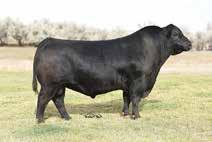

18130471 | 2.5.16 | 1175

CED +8 | BW +.7 | WW +68 | YW +121 | M +29
Claw +.45 | Angle +.55 | $M +81 | $B +163
One of the most consistent sires for producing sons with power, length, and upped end foot quality. His daughters are fertile and have consistent udder quality. Sons available. S Architect 9501 19347622 | 2.2.19 | 9501
CED +8 | BW +.4 | WW +97 | YW +166 | M +26
+.54 | $M 83 | $W +90 | $C +301
Performance with substance, depth, and shape! Architect is gaining popularity by the day! We love how these cattle look early on and think he’ll add a lot to our operation. Sons available.
EBRUARY 2023
ANGUS RANCH Salina, UT Guaranteed AI Sired Management PAP Tested We have PAP tested 100% of our cattle since 2005. We stand behind every animal we sell, every time. We have utilized an AI program in our cowherd since 1990. We have a strict culling programfeet, legs, and look! Our Cattle Are Available For Sale March 25 Nov 11 Utah Angus Association Rocky Mtn Angus Sale Tremonton, UT Tremonton, UT | | | | Plus, private treaty at the ranch at all times! KR Synergy 18875709 | 2.28.17 | 7023 CED +10 | BW -2.3 | WW +68 | YW +115 | M +20 Claw +.37
316 Exclusive
$W +70
Musgrave
Marb
A select group of females are available. Inquire today! Brent and Lisa Robins | 435.529.0103 Hank Robins | 435.201.9679 Emmett Robins | 435.979.4154 Cy Robins | 435.979.7089






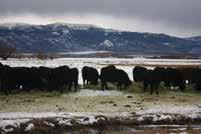






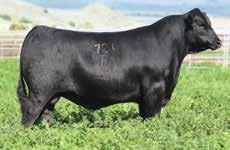











Celebrating 54 Years! Performance | Quality | Carcass | Maternal | E ciency We inv e you to come take a look! Visitors ALWAYS welcome! G ILLESPIE A NGUS PO Box 6 | Fairview, UT 84629 | 435.469.1025 Dave Hansen Herdsman 435.469.1024 Mike Cox Ranch Manager 435.469.1025 70 HEIFERS FOR SALE Available for immediate delivery OR We will breed these heifers and manage them throughout the summer for you. Call for rates! • Full vaccination program • Preg checked • • From the heart of our replacements • • Purebred Angus heifers• G ILLESPIE A NGUS Square B True North 70 BULLS FOR SALE by Private Treaty Conservatively PricedSlowly Developed to Maintain Structural IntegrityFully GuaranteedTested for Performance, Semen, Trich, and PAPCall Today - 435.469.1024 Sitz Accomplishment 720F Sitz Resilient 10208 Sitz Stellar 726D GB Fireball 672 Baldridge Command C036 www.UTAHCATTLEMEN.org 71 Utah Cattleman SeedStoCk edition
Western Livestock Journal®
100 YEARS OF RELIABILITY.
Since 1922, WLJ has provided weekly and daily information to our loyal readership. Today, we are forging into a new era, combining print and digital capabilities to provide the most current and relevant information to our readership.
See for yourself why others have relied on WLJ for generations.
SCAN THE CODE AND SUBSCRIBE TODAY!

VOLUME 10 • FEBRUARY 2023 Utah Cattleman SeedStoCk edition 72
THE NATIONAL LIVESTOCK WEEKLY SINCE 1922





100 GELBVIEH & BALAN CER BULLS “Providing dependable genetics to commercial and purebred cattlemen for over 30 years.” February 24, 2023 32nd Annual Montrose, Colorado Mark Covington (970) 209-1956 Dave Bowman (970) 323-6833 For online catalog and videos visit: www.gelbviehbulls.net CALVING EASE EARLY MATURING HEAVY WEANING WEIGHTS MODERATE SIZE AT MATURITY QUIET DISPOSITION MATERNAL TRAITS RAISED AT HIGH ELEVATIONS WHY BUY POT OF GOLD BULLS? www.UTAHCATTLEMEN org 73 Utah Cattleman SeedStoCk edition
MR. SPEAKER
ag advo cate becomes house leader after historic uphill attempts
by Stevie Ipsen for the Utah Cattlemen’s Association
U.S. President Calvin Coolidge had a lot to say about the vitality of persistence. He said, “Nothing in the world can take the place of persistence. Talent will not; nothing is more common than unsuccessful men with talent. Genius will not; unrewarded genius is almost a proverb. Education will not; the world is full of educated derelicts. Persistence and determination alone are omnipotent. The slogan ‘Press On’ has solved and will always solve the problems for the human race.”
If one were to follow the journey of now House Speaker Kevin McCarthy, they might find some parallels to Coolidge’s sentiments.
McCarthy, the youngest of three children of a homemaker mother and an assistant fire chief father, comes from a common, some might say lackluster, upbringing. But for cattle producers on the West Coast and beyond, the McCarthy’s journey from a middle class Bakersfield community to one of top seats in our nation’s capitol is the kind of all-American story that makes their livelihood worthwhile.
As the grandson of a proud Kern County cattleman, all California cattle industry supporters can take pride in the belief that humble beginnings can lead to unprecedented destinations. For the children being raised in today’s beef industry and tumultuous political climate, the sky is still the limit and the ability of kids in the ranching community to make a real difference still exists. Like Coolidge noted, McCarthy’s road is a reminder that through persistence great things are possible.
Though McCarthy is an oftenrevered leader in the Republican Party and in the political world as
a whole, it goes without saying that his journey to the Speaker’s chair was not without challenge and frequent defeat. But in the end, Rep. Kevin McCarthy, a long time advocate for California’s cattle community was named Speaker of the U.S. House of Representatives on a historic post-midnight 15th ballot early in the morning of Jan. 7.
“My father always told me, it’s not how you start, it’s how you finish,” McCarthy told cheering fellow Republicans in response to the grueling journey to the speakership and addressing the
...CONTINUED ON PAGE 76

VOLUME 10 • FEBRUARY 2023 Utah Cattleman SeedStoCk edition 74

addressing the nay-sayers even from his own party who made the selection of a new majority speaker an uphill battle.
JUST A REGULAR GUY
After graduation from Bakersfield High School, McCarthy briefly attended Bakersfield College while earning money by refurbishing automobiles and then selling them. In October 1984, at only 20, he bought a lottery ticket that made him a $5,000 winner, which McCarthy credtis with starting him on the road to entrepreneurship. Investing his winnings, which were not insignificant in 1984, in the stock market, McCarthy used the earnings to purchase Kevin O’s Deli, located in a yogurt shop in Bakersfield that was owned by his aunt and uncle.
Former NCBA President Kevin Kester, who ranches on California’s central coast is a friend of the Speaker who has known him since his freshman year in Sacramento, says McCarthy’s longtime understanding of small business operations helps him to understand the government’s overreach and how businesses can be unduly impacted.
“Kevin (McCarthy) really gets us. I can tell you from frequent interaction with him that his grasp of the needs of his constituents, specifically in agriculture, is like nothing I have seen from most politicians. They may try to understand what our needs are and why but he really does see our needs and work to make sure they are met,” Kester said. “Having him in this position at this point in time could not be more valuable, not just for CCA and NCBA members, but for all people who see a need for less government overreach to run businesses that matter to all Americans. One thing you should know about Kevin McCarthy is that when he says he will do something, you bet he will follow through.”
McCarthy’s tenacity is why Kester said he knew the speakership was one challenge McCarthy would not back down from, no matter how long it took.

“Just like that long and grueling process, once Kevin starts something, his energy doesn’t burn out,” Kester said. “He will keep that energy level in Washington and use it to work for the country and work with those he may not always agree with for the good of the country.”
Kester said for cattle produers in all parts of the country, McCarthy’s leadership is extremely valuable.
“Even with a good ally like we had in Paul Ryan we did not really have direct access to the Speaker’s office,” Kester said. “Kevin McCarthy has been a long time friend of the cattle business. Some of his D.C. fundraisers have been held at the NCBA office. But more importantly, he gets us and he genuinely has concern for us.”
Being from California himself Kester has worked on the front lines of some of the biggest legislative and regulatory burdens the beef industry has faced in recent decades, both in Sacramento and in Washington. He says during all that time few lawmakers have understood those burdens like McCarthy.
“While a lot of lawmakers turn issues over to their staff, McCarthy still works through the issues to really see their impacts on agriculture,” Kester said, “Sure he needs his staff but in all my time in politics have I seen few politicians really dig in to understand the issues. The more high profile
McCarthy gets as a leader the more he puts his money where his mouth is. I have never experienced him say he will do something and not do it.”
In 1987, McCarthy sold his business and used the profits to return to college, earning an undergraduate business degree from California State University, Bakersfield, and a master’s degree in business administration from the same state-funded institution. McCarthy’s interest in politics had earlier been piqued by the contrast he found between what he perceived as the pessimism of Jimmy Carter and the optimism of Ronald Reagan. The year McCarthy returned to school, he also began his association with influential Republican Congressman Bill Thomas McCarthy initially acted as an intern before becoming a longtime member of the staff of Thomas, who he credits for making a huge impact on his life.
POLITICAL AMBITION
Elected to the California State Assembly in 2002 and serving as Assembly Republican Leader, McCarthy quickly climbed the political ladder and was elected to represent California’s 20th District of the U.S. Congress in 2006. At that time he was also appointed Chief Deputy Whip before being elected as House Majority Whip in 2010.
During his time as a politician there have been no issues McCarthy has steered clear of. His willingness to tackle any needs of his constituents has been one reason his home base keeps selecting him as their representative.
In 2014, McCarthy was elected Majority Leader in the House. In 2018, he was elected House Republican Leader, which he served most recently before being elected to his current post as Speaker of the House.
McCarthy has continuously vowed to fight for a strong, fiscally responsible, and free America where every person has the ability to achieve the American dream. Through the “Commitment to America” that he spearheaded, he and his House Republican colleagues will work to cut out-ofcontrol government spending, create good-paying jobs, promote American energy independence with American jobs, and fight for individual liberty, an efficient and effective government, and a vibrant civil society.
When Kevin McCarthy is not in Washington working for the constituents of California’s 20th District and for the future of America, he is home in Bakersfield where he and Judy raised their two children, Meghan and Connor.
VOLUME 10 • FEBRUARY 2023 Utah Cattleman SeedStoCk edition 76 ...CONTINUED FROM PAGE 74



Winnemucca Convention Center 50 W Winnemucca Blvd I Winnemucca, NV 89445 GREG BURDEN 405.780.0372 MIKE ALLEY 541.948.3521 PROFIT SHARING 2023 A SAFE BET FOR HIGH PROFIT INDEXING BULLS! FEBRUARY 23, 2023 1:00 PM (PST) SHARING 2023 100 AGE - ADVANTAGE BULLS SELLING Bulls are being fed at the Sandhill Feed Yard at 3300 Feedlot Rd, Winnemucca, NV CRYSTAL ALLEY 541.948.1158 www.UTAHCATTLEMEN.org 77 Utah Cattleman SeedStoCk edition
A GENOMICS BULL BUYING GUIDE
A COMMERCIAL PRODUCER’S GUIDE TO SELECTING BULLS
by Jamie T. Courter, PhD, Bovine Technical Services Manager, Neogen Genomics for the American Simmental Association
As you continue to flip through various catalogs, selecting bulls as you have so many times before, I would like to take this opportunity to provide what I believe are fundamental pieces of information to better assist a producer in their bull buying decisions. In addition to the overall soundness and conformation of a bull, it is always important to select a sire that is backed by data. You wouldn’t necessarily go out and buy a new pickup truck without researching its horsepower, torque, and tow-rating. Instead, you would ensure that the overall mechanics of the engine matched your daily needs. The same should be true about purchasing a new herd bull or AI sire. Instead of an owner’s manual, you now have expected progeny differences (EPD).
What is an expected progeny difference (EPD) and how is it interpreted?
In addition to photographs, most catalogs include a multitude of information and numbers for a given sire. While they can be overwhelming, those numbers summarize what is currently known about the genetic potential of an animal. These values are referred to as expected progeny differences (EPD) and represent an estimate of the genetic merit an animal will pass on to its offspring.
Seedstock producers invest heavily into reporting the key information used to calculate an EPD. For traditional EPD, these include individual pedigrees, phenotypes for key traits of interest, genomics, and progeny information, once available (Figure 1). When an EPD is reported back to the seedstock producer, the estimate of genetic merit is summarized in four different ways:
1) Expected Progeny Difference (EPD): The first number listed following the trait abbreviation, an EPD is an estimate of the average genetic merit an animal will pass on to its progeny. They can be used to rank animals according to their potential to make genetic change within a herd, or when making bull buying decisions. For example, if you are comparing a bull whose weaning weight EPD is +53 to another whose EPD is +63, one would expect the second bull’s progeny to weigh on average ten pounds more than the first bull’s. Therefore, if the second bull is purchased and sires 30 progeny in a season, all other factors excluded, that should be

300 extra pounds of weaning weight expected from the second animal as compared to the first.
2) Percentile Rank: A percentile rank reports where the specific EPD for that animal ranks across the entire breed. Ranging from 1 to 100, if an individual is in the top 1 percent, they are one of the best animals in the database for that trait of interest. Percentile rankings are particularly useful to gain bearings as to what a “good” or “bad” EPD looks like within a breed population. Percentile rankings quickly tell the producer if the animal is above average (less than 50 percentile rank) for a trait compared to all other animals in that population. It is important to know which other animals are compared in the percentile rankings. For instance, only purebred Simmental cattle are compared to other purebred Simmental cattle in the percentile ranking, but not compared to Simbrah, Fullblood Fleckvieh or hybrid cattle in the ASA database.
3) Accuracy: Ranging from 0 to 1, accuracy is an estimate of the confidence that the EPD provided is the “true EPD” of the animal. After all, an EPD is a geneticist’s best estimate of genetic potential on an animal given the information provided to the evaluation at that time. As more progeny records and phenotypes on an animal are reported, geneticists know more about that animal. This results in the EPD fluctuating up and down over time, while the accuracy increases.
...CONTINUED ON PAGE 80
VOLUME 10 • FEBRUARY 2023 Utah Cattleman SeedStoCk edition 78
BALANCE THE SCALES
BREED EFFECTS FOR COW MATURE WEIGHT


Big cows come with big feed bills. That’s why smart genetic selection pays off in the cow herd. Simmental-influenced cows are an average 74 lb. lighter at maturity than Angus-sired counterparts, according to a recent U.S. Meat Animal Research Center study.a,d

While Simmental is sized for more efficient gains, 20-year genetic trend lines also show the breed offers reliable calving ease, early growth and cow longevity. That’s a balanced herd built for profit.
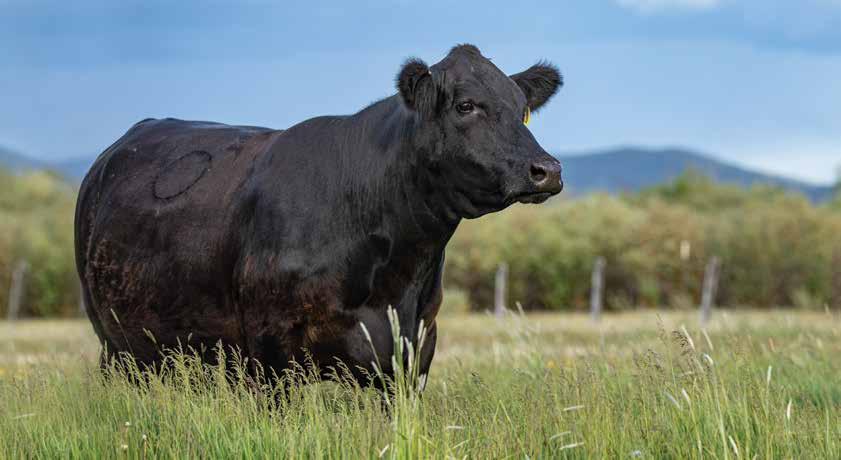
406-587-4531 • simmental.org STAND STRONG SIMMENTAL aUSMARC, Zimmerman, M., et al., “Breed and heterotic effects for mature weight in beef cattle,” J. of Anim. Sci., Vol. 99, 2021. bAdjusted for sire sampling, Angus was the heaviest at maturity among the 16 breeds evaluated. Solutions are deviations from Angus. YW EPDs were extracted from genetic evaluations conducted in 2019. cEstimate of MWT differences at 6 years of age. dThe study considered 108,857 weight records from 5,156 crossbred cows sired by 787 bulls.
Angus Charolais Hereford Simmental 0 -20 lb. -39 lb. -74 lb.
(MWT)abc www.UTAHCATTLEMEN.org 79 Utah Cattleman SeedStoCk edition
4) Possible Change: Possible change is a way to interpret the amount of change likely in an EPD. When considering a young bull with low accuracy, it is important to consider the amount of change that could potentially occur as data for this specific animal enters into the genetic evaluation. Younger bulls will have a larger possible change range than older bulls with higher accuracy. As an EPD approaches an animal’s true genetic value, two-thirds of the time this value would be within the possible change range, but one-third of the time the “true EPD” will fall outside of this window. If you add and subtract two possible change units, you will have a window in which the “true” EPD will land 95 percent of the time (see Table 1). This doesn’t mean that each animal’s EPD will change by this amount, but it is the potential change that could occur to an EPD. It gives an indication of the level of risk for each trait and accuracy level.

Not all of this information is printed in catalogs. Regardless, aligning a bull’s EPD with your operation’s breeding objectives goes a long way toward increasing the genetic potential — and profitability — of a commercial herd.
Accuracy
Accuracies are also important to consider when selecting a bull. As previously mentioned, EPD are an estimate based on the information available to the genetic evaluation at the time. As more information is reported, be it in the form of phenotype records or DNA, that estimate can move up or down as the accuracy of the prediction increases. However, the amount of potential movement decreases as the accuracy increases.
To help visualize this, Table 1 includes birth weight (BW) EPD information for two different yearling bulls. While they have the same EPD for BW (-2.7 lbs), thus the same percentile rank in the breed (2 percent), the accuracy is higher for Bull A than for Bull B. This is because Bull A has been genotyped while Bull B has not. Just looking at their respective EPD, both animals would be considered “calving ease” bulls and would be purchased as such. The possible change for BW with an accuracy of .39 is 1.75 and 2.5 for the BW accuracy of .15. This means with complete knowledge about these bulls, 2/3 of the time Bull A’s “true EPD” will land between -4.45 and -0.95 (-2.7 +/-1.75). For Bull B, 2/3 of the time his “true EPD” would land between -5.2 and -0.2 (-2.7 +/ - 2.5). To be even more confident in the range in which the bulls’ final EPD will land, you can add and subtract two possible change units to find the window in which the “true EPD” will land 95 percent of the time. In other words, there is only a 5 percent chance the “true EPD” for the animal falls outside the range provided. Notice how much smaller the range is for Bull A compared to Bull B. When
comparing the range of minimum to maximum value, by genomically testing Bull A, 3 lbs. of uncertainty were removed from the overall estimate of BW. Genomic testing helps reduce the risk to the buyer and allows them to confidently purchase a heifer bull, knowing the seedstock producer has done everything possible to ensure his EPD are as accurate as possible. Please note that Calving Ease is the best EPD to use to predict calving difficulty (not BW).
On top of aligning an animal’s EPD with your breeding objectives, look for bulls with the ASA DNA logo to ensure the utmost confidence in the bulls you purchase. What does this mean for a seedstock breeder?
The strength of an evaluation and the benefit of genomic technology are a direct result of the investment from seedstock breeders to record pedigrees, collect phenotypes, and genomically test their herd. The continued dedication to the advancement of the Simmental breed has resulted in vast amounts of genetic change over the years and will only grow with continued reporting of these data.
While much of this article has been geared toward purchasing bulls with genomically enhanced EPD (GE-EPD), the concepts and reasons also apply to why seedstock providers should genomically test their bulls. In addition to powering the genetic evaluation, selling bulls with GE-EPD is a standard practice to ensure that when a young bull is sold to a commercial rancher, he has more accurate genetic predictions and therefore less risk of big movements in the EPD listed on sale day. Genomic testing increases the confidence a seedstock producer has in the bulls they are selling, as well as the confidence the commercial customer has in their purchase.
For the future, the path to having dramatically improved offerings of bulls requires the addition of genomic testing today. The increased accuracy leads to improved selection of animals that meet an operation’s breeding objectives. This ultimately leads to an improved overall quality of your bull offering and alignment with the needs of your customer base.
VOLUME 10 • FEBRUARY 2023 Utah Cattleman SeedStoCk edition 80
78
...CONTINUED FROM PAGE




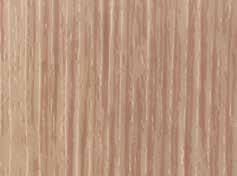















































attleman Marty Ropp 406-581-7835 Corey Wilkins 256-590-2487 Clint Berry 417-844-1009 www.alliedgeneticresources.com Josh Staudt 970-227-0729 Justin Warren 970-367-0035 Shane & Beth Temple T-HEART RANCH and L-CROSS RANCH www.t-heartranch.com 719-850-3082 • 719-850-3083 shane@t-heartranch.com Follow us on Facebook True High Altitude Cattle T-HEART RANCH T-HEART RANCH Taking the lead... YOUR #1 SOURCE FOR PAP TESTED GENETICS At T-Heart Ranch we o er more than just a PAP score. We take it a step further in testing every one of our registered cows to ensure we can stack multiple generations of PAP testing to allow our customers to get the most information. Our entire herd lives at or above 8,000 feet for 12 months out of the year. We are con dent that you are receiving genetics that will ultimately help your program excel in the high country. March 25, 2023 || LaGarita, CO • Born, Bred & Developed at 8,000 ft Elevation • Every Bull PAP Tested Twice Prior to Sale Day • Multiple Generations of PAP Testing in Every Pedigree • Large Uniformed Sire Groups to Increase Consistency 200 BULLS OFFERED Bull Sale SIRE GROUPS INCLUDE: Hook’s Eagle 6E ASA 3253742 THR Mountain Time 8441F ASA 3424773 TJ Night Owl 0561H ASA 3762024 THR Eagle Mtn 9456G ASA 3566194
WESTERN AGCREDIT BOARD DECLARES PATRONAGE DIVIDEND FOR 2022
The Western AgCredit Board of Directors declared a 2022 patronage dividend equal to 100 basis points (1.0% on average) on eligible loans at their meeting held on December 20, 2022. This equates to $8.77 million, which represents approximately 30% of net income from the 2022 operating year. This is an increase from previous years when the business plan targeted base patronage of 75 basis points (or 0.75%) be returned to members in the form of a patronage dividend.
“This declaration represents a commitment by the board and management to continually look for ways to provide additional value to our stockholders. As a cooperative, cash patronage returned to members is one clear method to do so by effectively lowering interest rates. Increasing base patronage to 100 basis points (or 1.0%) has been a goal for some time and is now a reality,” said CFO Darren Haas. “For the first time since Western AgCredit implemented the patronage program in 2005, eligible stockholders can expect to receive 100 basis points (on average) as the annual patronage dividend amount. We anticipate being able to provide this base dividend amount for
the foreseeable future.”
“A 100 basis point (or 1.0%) average patronage dividend demonstrates our continued commitment to cooperative principles, while maintaining a financially sound Association,” said President and CEO David Brown. “We take great pleasure in managing to high expectations and returning the portion of profits not needed to sustain the business to the stockholders who earned them. This is the value of a financial cooperative in action. Few (if any) other financial institutions operate under this type of model, which provides our members a clear advantage. As the Federal Reserve fights inflation by raising interest rates, the value of increased patronage is even more accentuated. The effect of our patronage program is a reduction in borrowing costs for our members, which flows directly to their bottom line.”
Generally, patronage dividends are returned to customers in the form of a check. We do it that way so we can have more personal interaction with members and express appreciation in person (when possible). Members can expect to receive their patronage check in February of 2023.
NCBA FILES SUIT OVER ADMINISTRATION’S WOTUS RULE
On Jan. 19, the National Cattlemen’s Beef Association (NCBA) filed a lawsuit against the Environmental Protection Agency (EPA) challenging the Biden administration’s final “Waters of the U.S.” (WOTUS) rule.
“The Biden administration’s WOTUS definition is an attack on farmers and ranchers and NCBA will be fighting back in court,” said NCBA Chief Counsel MaryThomas Hart. “The rule removes longstanding, bipartisan exclusions for small and isolated water features on farms and ranches and adds to the regulatory burden cattle producers are facing under this administration. We look forward to challenging this rule in court and ensuring that cattle producers are treated fairly under the law.”
NCBA previously filed technical comments on this rule, highlighting the importance of maintaining agricultural exclusions for small, isolated, and temporary water features, like ephemeral streams that only flow during limited periods of rainfall but remain dry the majority of the year. Regulating these features at the federal level under the Clean Water Act disrupts normal agricultural operations and interferes with cattle producers’ abilities to make improvements to their land.
“Farmers are stewards of the land and understand the importance of clean water. Unfortunately, this rule lacks common sense and makes our lives more
complicated,” said NCBA Policy Vice Chair Gene Copenhaver, a Virginia cattle producer. “My cattle operation in southwest Virginia has a creek that only carries water after large storms. Under this WOTUS rule, we could be subject to complex federal regulation. I’m proud of NCBA’s work fighting back against this rule and I hope the uncertainty created by WOTUS will soon be a thing of the past.”
Last year, more than 1,700 individual cattle producers sent messages to the EPA opposing the administration’s overly broad definition of WOTUS. Producers once again shared their views with the EPA at an agency roundtable last June and even the EPA’s own Farm, Ranch, and Rural Communities Advisory Committee urged the EPA to consider a more limited rule. Unfortunately, EPA failed to incorporate the cattle industry’s recommendations, and NCBA will be suing to stop this rule from harming cattle producers.
“NCBA is also concerned that the EPA charges headfirst on a controversial rulemaking while this very issue is currently before the Supreme Court. We look forward to a decision in Sackett v. EPA,” said Hart.
The Supreme Court heard oral arguments in the Sackett case on Oct. 3, 2022, and is expected to release a decision in early 2023.
VOLUME 10 • FEBRUARY 2023 Utah Cattleman SeedStoCk edition 82





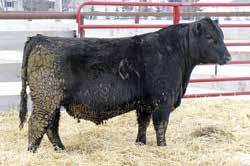

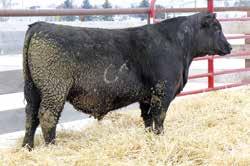


BULLS SELL SIRED BY: Woodhill Blueprint • Woodhill Patent Crawford Guarantee 9137 Tehama Tahoe B767 • Casino Bomber N33 Woodhill Reliance A60-F165 Woodhill Investor Z460-H563 WR CAR Bombardier S910 THD © THURS., MARCH 2 SELLING A STOUT SET OF 50 WINTER YEARLING ANGUS BULLS PLUS 7 TWO-YEAR-OLDS Outstanding Phenotype, Genetically Elite, Sound, Deep & Functional Lunch at 11 a.m. • Sale at 12 p.m. at the Ranch CACHE VALLEY BULL SALE PRESTON, IDAHO Matt Macfarlane 916-803-3113 m3cattlemarketing@gmail.com m3cattlemarketing.com CANNON ANGUS RANCH John Cannon: 818-400-4513 2214 E. 800 S., Preston, Idaho 83263 Follow Us on Facebook or the Web http://cannonangus.com Sale Books Mailed Only Upon Request Sale Manager Contact Matt Macfarlane or John Cannon for bull details, including yearling ultrasound, performance and fertility data, as well as Zoetis HD50K genomic testing results and genomic enhanced EPDs. AUCTIONEER: JAKE PARNELL, 916-662-1298 A Sample of the Quality Selling the First Thursday in March ... ‘855’ SIRED BY CASINO BOMBER N33 ‘943’ SIRED BY WR CAR BOMBARDIER S910 ‘856’ SIRED BY WOODHILL BLUEPRINT ‘882’ SIRED BY CRAWFORD GUARANTEE 9137 ‘904’ SIRED BY WOODHILL BLUEPRINT ‘893’ SIRED BY WOODHILL PATENT www.UTAHCATTLEMEN.org 83 Utah Cattleman SeedStoCk edition
2023 CATTLEMEN’S CALENDAR
Cattle Sale listed in this calendar are advertisers withtin this annual seedstock edition of the Utah Cattleman.
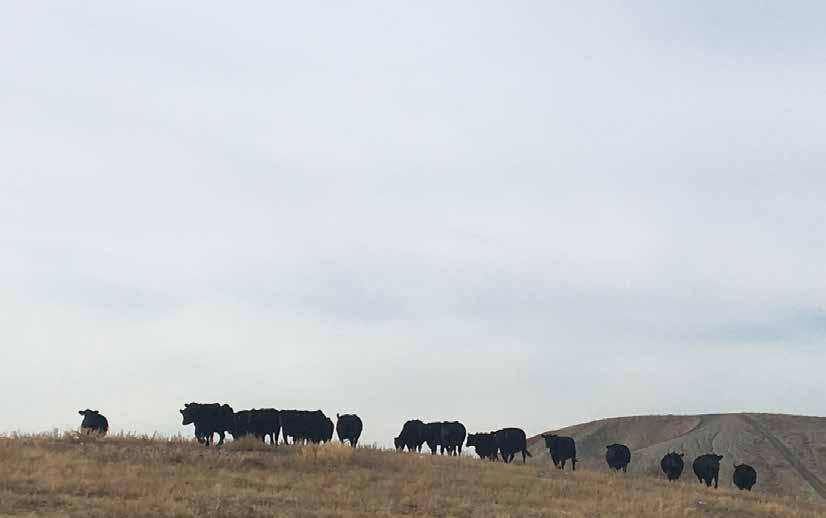
DATE CATTLE OPERATION LOCATION BREED(S) SALE TYPE Feb. 15 Shaw Cattle Co Caldwell, ID Angus, Hereford, Red Angus Production Sale Feb. 16 Wooden Shoe Farms Blackfoot, ID Angus, Hereford Production Sale Feb. 17 Rees Bros. Morgan, UT Angus, Hereford Production Sale Feb. 18 Great Basin Bull Sale Fallon, NV All Breeds Consignment Sale Feb. 24 Pot of Gold Bull Sale Montrose, CO Gelbvieh, Balancer Production Sale Feb. 25 Lyman Livestock Salina, UT Angus, SimAngus, Simmental, Balancer Production Sale Feb. 25 RV Bar Ranch Vernal, UT Angus Production Sale Feb. 27 Colyer Herefords and Angus Bruneau, ID Angus, Hereford Production Sale Feb. 28 Barker Cattle Co Burley, ID Angus, SimAngus Production Sale March 4 Lazy JB Angus Montose, CO Angus Production Sale March 4 Dille Red Angus Burley, ID Red Angus Production Sale March 4 Cannon Angus Ranch Preston, ID Angus Production Sale March 2 Western Video Market Cottonwood, CA Commercial Online Consignment Sale March 3 Intermountain Genetic Alliance Nephi, UT Angus Consignment Sale Feb. 25 McPherson Farms Nephi, UT Angus, Quarter Horse Production Sale March 4 Utah Hereford Association Salina, UT Hereford Consignment Sale March 7 Ipsen Cattle Co Dingle, ID Angus, Hereford, Black Hereford Online Production Sale March 8 Udy Cattle Co. Rockland, ID Angus, Hereford, Red Angus Production Sale March 8 Sitz Angus Ranch Dillon, MT Angus Production Sale March 10 Loveless Gelbvieh Spanish Fork, UT Gelbvieh, Balancer Production Sale March 10 Quest of the West Sale Spanish Fork, UT Angus, Balancer, Gelbvieh, SimAngus Production Sale March 10 Sorensen Angus Spanish Fork, UT Angus Production Sale March 11 Riverbend Ranch Idaho Falls, ID Angus Production Sale March 18 R & R Genetics Tremonton, UT Angus, SimAngus Production Sale March 18 Utah Beef Improvement Association Salina, Utah Multi Breed Consignment Sale March 18 Colorado Select Fort Collins, CO Angus, SimAngus, Hereford Production Sale March 20 Ward Angus Ranch Willard, UT Angus Production Sale March 20 Angus in the Basin Vernal, UT Angus Production Sale March 24 Vertical Edge Cattl Co Bancroft, ID Angus, SimAngus, Fleckvieh Production Sale March 25 T-Heart Ranch LaGarita, CO SimAngus, Simmental Production Sale March 25 Utah Angus Association Ogden, UT Angus Consignment Sale April 8 Redd Ranches Paradox, CO Angus, Red Angus Production Sale April 8 Bar T Bar Ranches Winslow, AZ Angus, Red Angus, Balancer, Gelbvieh Production Sale Fullmer Crescent Moon Sigurd, UT Angus Private Treaty/Consignment Gillespie Angus Mt Pleasant, UT Angus Private Treaty Johansen Herefords Castle Dale, UT Hereford Private Treaty Robins Nest Angus Ranch Salina, UT Angus Private Treaty/Consignment Shandar Angus Ranch Payson, UT Angus Private Treaty/Consignment




VOLUME 10 • FEBRUARY 2023 Utah Cattleman SeedStoCk edition 86 3 String Cattle .............................................................................................. 65 ABS 22 Allflex, USA .................................................................................................... 38 Altenburg Super Baldy ........................................................................... 53 American Angus Association............................................................. 35 American Gelbvieh Association ....................................................... 59 American Hereford Association 55 American Simmental Association 79 Angus in the Basin ..................................................................................... 41 Bar CK Ranch ................................................................................................ 77 Bar T Bar Ranches .................................................................................... 43 Barker Cattle ...................................................................................................17 Beef Checkoff Program 11 Cannon Angus Ranch............................................................................. 83 Colorado Select Bull Sale ..................................................................... 53 Colyer Herefords & Angus .................................................................... 57 Covington Gelbvieh ................................................................................... 73 Dille Red Angus 65 Draxxin .............................................................................................................. 63 Fullmer Crescent Moon ............................................................................ 5 Gillespie Angus .............................................................................................71 Great Basic Bull Sale ................................................................................29 Hoffman A.I. 52 IFA ........................................................................................................................ 44 Intermountain Genetic Alliance ........................................................... 9 Ipsen Cattle Company ............................................................................. 61 Johansen Herefords................................................................................ 6, 7 Lazy JB Angus .............................................................................................. 48 Lisonbee Angus Ranch 41 Loveless Gelbvieh ...................................................................................... 31 Lyman Livestock 88 McPherson Farms 38 Oldroyd Angus .............................................................................................. 41 Quest of the West ...................................................................................... 85 R&R Genetics ................................................................................................ 75 Red Ranches .................................................................................................... 2 Rees Bros. 21 Rigby Cattle Company............................................................................ 46 Riverbend Ranch ........................................................................................ 69 Robins Nest Angus .................................................................................... 70 RV Bar Angus ............................................................................................... 26 Scales NorthWest 87 Select Sires ..................................................................................................... 67 Shandar Angus and SimAngus ........................................................... 3 Shaw Cattle Co. ............................................................................................ 13 Sitz Angus ....................................................................................................... 49 Sorensen Angus Ranch 37 T Heart Ranch ............................................................................................... 81 Triangle J Ranch .......................................................................................... 53 Udy Cattle Company ................................................................................ 51 Utah Angus Association........................................................................ 23 Utah Beef Council ....................................................................................... 11 Utah Beef Improvement Association 26 Utah Hereford Association .................................................................. 50 Vertical Edge Genetics ........................................................................... 45 Ward Angus Ranch ................................................................................... 36 Western Livestock Journal .................................................................... 72 Western Video Market 25 Winnemucca Ranch Rodeo Weekend .......................................... 27 Zoetis ................................................................................................................. 63


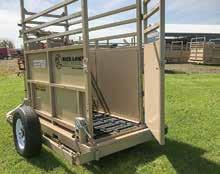
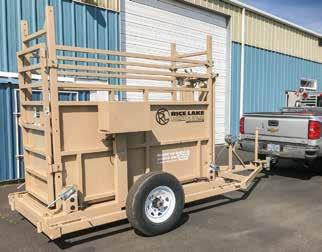


www.UTAHCATTLEMEN.org 87 Utah Cattleman SeedStoCk edition Specializing in Truck and Livestock Scales Established in 1959, Scales NW offers a wide range of equipment, from precision lab balances to high capacity rail scales, as well as certified scale service and installation. Contact Steve Orr for more information today! Email: steveorr@scalesnw.com Phone: (503) 510-3540 www.scalesnw.com • (800) 451-0187 Scales NW is proud to serve: California Idaho Montana Nevada Oregon Utah Washington





































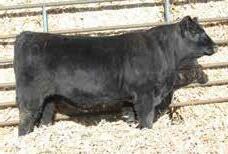



10 • F 2023 attleman dition 1:00 PM MT | PRODUCERS LIVESTOCK MARKET Salina, Utah February 25 Lyman livestock Eric Lyman 801-310-1570 | Kevin Lyman 801-376-5774 | Mike Lyman 801-404-0587 www.LYMANLIVESTOCK.com • PAP tested at 6,300’ elevation • Breeding Soundess Exam and Semen Tested • “Cattlemen to Cattlemen” guarantee • Bulls raised by BLM range-calved cows on the 6,500’ Utah high desert PAP Tested 100 Bu s Se Broadcasting Real-Time Auctions Marty Ropp 406-581-7835 Corey Wilkins 256-590-2487 Jared Murnin 406-321-1542 alliedgeneticresources.com Bid Live Online Please join us Customer Appreciation day FEBRUARY 11 | 6-8 PM | SPANISH FORK, UT Enjoy food and refreshments while you look through the bulls. Educational talk by Rocky Forseth, Allied Genetic Resouces. Lyman Livestock bull sale 1 1 thAnnu Outlaw son K29 ASA 4150041 Eagle son K5 ASA 4150048 Great Western son K111 ASA 4150026 Outlaw son K19 ASA 4149976 Eagle son K1 ASA 4150049 SIMMENTAL • SIMANGUS • ANGUS































































































































































































 by Bernt Nelson, economist, American Farm Bureau Federation
by Bernt Nelson, economist, American Farm Bureau Federation
























































































































































































































































 from Purina Animal Nutrition
from Purina Animal Nutrition





























































































































































